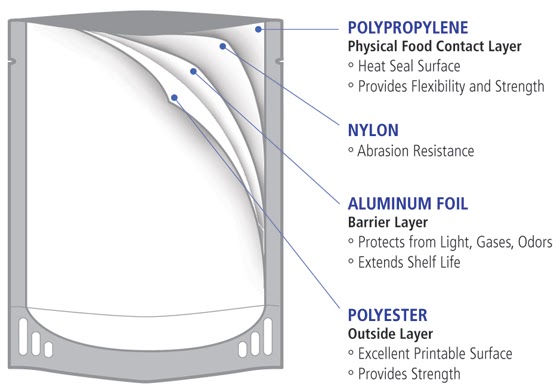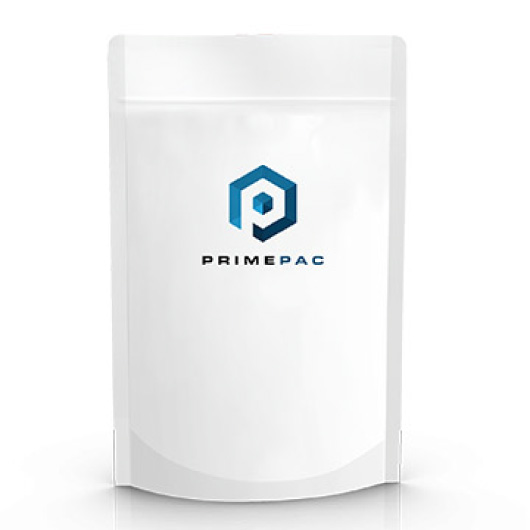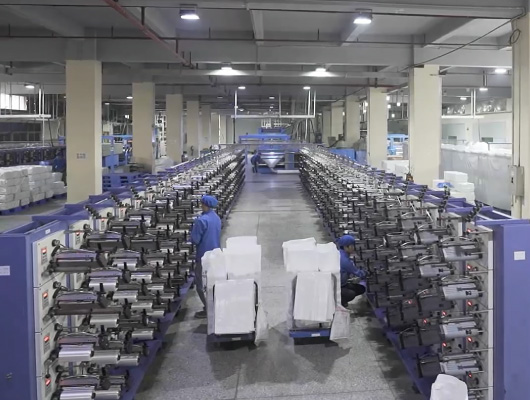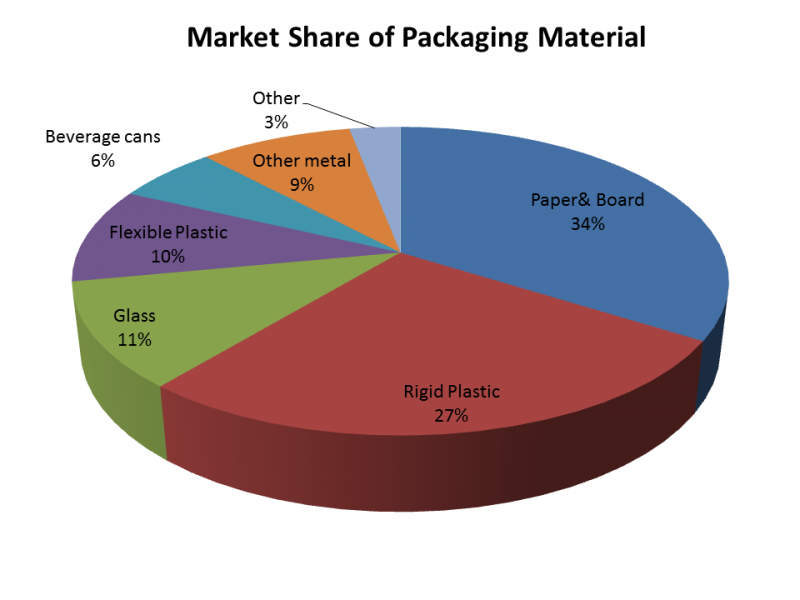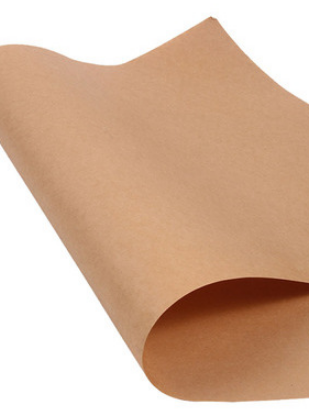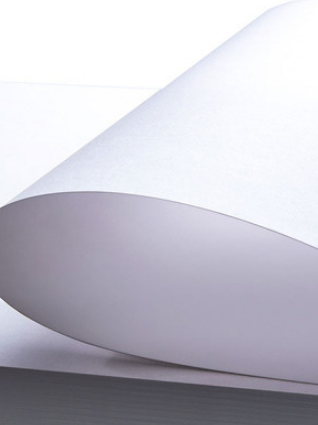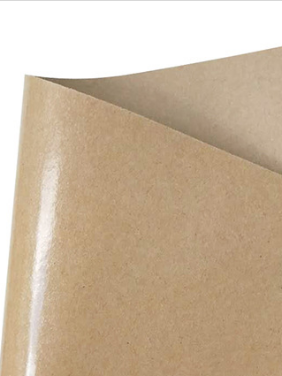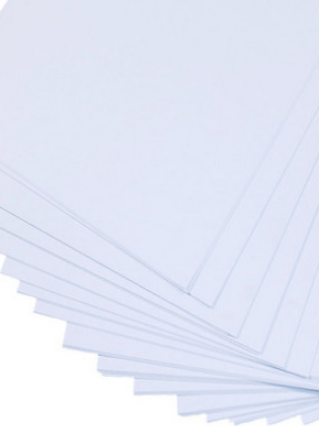What exactly are retort pouches?
Retort pouches as a daily pouch were widely used in our kitchen life. It’s a good assistant for us. For those a thousand types of retort pouches, do you really know what exactly are retort pouches? Or how’s work for our life? What’s special of the material and how’s the standard of those food packaging?
In this article, we’ll show you the answer! Let’s get to know more!
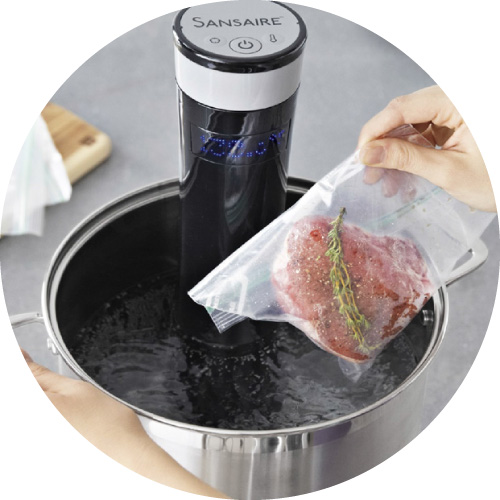
Retort pouches are a type of flexible packaging used to package food.
This type of packaging is often used for shelf-stable and sterilized products, such as soups, stews, and sauces.
Retort pouches are made from a combination of nylon, polyethylene film layers, and aluminum foil to create an oxygen-free environment that prevents spoilage
. The pouch is hermetically sealed so that it can withstand high temperatures during the sterilization process.
The sealed pouch also provides an extended shelf life for the product, making it perfect for storing foods for long periods of time. Retort food products are easy to transport and store since they don’t need refrigeration or special storage conditions.
With their convenience and extended shelf life, retort pouches have become increasingly popular among manufacturers and consumers alike.
The history of retort pouches
The idea for retort pouches was promoted by the US army in 1950 and the research continued through 1960. It was finally invented by United States Army Natick R&D Command, Reynolds Metals Company, and Continental Flexible Packaging and was first introduced in Italy. These companies received the Food Technology Industrial Achievement Award for their invention in 1978.
Change is sweeping through supermarkets. Products once used for canning can now find a home in a new packaging medium, the stable vertical packaging bag.
We have never seen so much packaging innovation in such a short period of time. Pet food manufacturers, seafood manufacturers, and other food manufacturers have begun to consider this new way of customizing food packaging to make their products more attractive to consumers. Cookable pouches offer many advantages over traditional tin cans.
These pouches faced a stagnation period in the beginning due to the reluctance of the people to accept them. However, over the years manufacturers and companies have realized that using retort pouches for packaging reaps many benefits.
Inside of retort pouches
When we wax praises about how well retort pouches package, it is because of its internal structural composition. It has the sturdiness of metal cans and protects the nutrient value of the food. Specifically, each pouch consists of four layers as shown in the image below.
- The first layer is propylene which acts as a heat seal surface and provides strength and flexibility.
- The next layer which is the nylon layer protects from abrasion.
- The aluminum layer not only protects from lights, gases, and odor but also extends the product shelf life.
- The final polyester layer provides excellent strength and is very easy to print on.
The materials that go into the packaging of retort pouches are FDA approved and undergo sterilization processes which increase the durability of the packaging.
Introducing Primepac’s Premium Retort Pouch – Elevating Your Product Packaging to the Next Level
Our top-notch Retort Pouch is meticulously crafted from food-grade materials, ensuring the utmost safety and freshness for your products. Tailored to perfection, you have the freedom to choose from 3-side seal, stand-up, or custom-shaped designs that perfectly complement your brand identity.
Unlock the true potential of your product presentation with our Retort Pouch’s vivid prints and the luxurious touch of hot foil stamping. Enhance your product’s appeal further by selecting either a glossy or matte finish, perfectly tailored to your specific requirements.
But it doesn’t stop there – our Retort Pouch goes beyond aesthetics to deliver outstanding functionality. Boasting superior barrier properties, this innovative packaging solution effectively preserves your items and extends shelf life even under high temperatures, up to an impressive 135°C (275°F).
Say goodbye to bulky and inconvenient packaging. Our Retort Pouch is designed to be lightweight and flat-packed, ensuring effortless transport and storage. Your convenience is our priority.
As a business that understands the importance of customization, we offer a plethora of options to make your packaging truly stand out. Choose from tear notches, hang holes, clear windows, and more to create a packaging solution that perfectly aligns with your product’s unique features and meets your customers’ needs.
Versatility is the name of the game. Our Retort Pouch is an ideal choice for various industries, including food, pet products, medical items, and beyond. Whatever your business offers, we have you covered.
To make the most of Primepac’s premium packaging solutions, our minimum order starts at just 10,000 units. We believe in catering to businesses of all sizes and ensuring that top-quality packaging is accessible to everyone.
Experience the epitome of exceptional packaging with Primepac’s Retort Pouch. Your product deserves the best, and we are here to deliver it. Let us elevate your brand and make a lasting impression on your customers.
Reach out to us today to discuss your packaging needs, and together, let’s create an unforgettable packaging experience that sets your products apart from the competition. At Primepac, we bring your vision to life.
Material of retort pouches
The structure of the high-temperature resistant cooking bag has two layers, three layers, four layers, and even more.
Among them, the second layer is a transparent plastic/mold, such as PET / CPP or OPA / CPP.
The three layers are transparent plastic/mold, such as PET / OPA / CPP, and opaque types containing aluminum foil, such as PET / AL / CPP, OPP / AL / CPP.
The four layers are opaque PET / AL / OPA / CPP with aluminum foil. This structure is a puncture-resistant, reinforced, large-capacity packaging bag. The OPA should be reasonable between AL and CPP.
The more layers are mainly The inner layer does not use pure CPP film, but uses multi-layer co-extruded film, such as PA / EVOH / PP, PA / PVA / PP co-extruded film plus PET or aluminum foil to form a composite with more layers, but its quantity Not much.
From a functional point of view, the four-layer structure PET / AL / OPA / CPP bag containing aluminum foil can completely meet the requirements of all cooked food.
For these materials used in cooking bags, it is necessary to introduce their properties and functions. In order to ensure the quality of cooking bags, specific requirements should also be put forward.
1. Polyester film PET, also known as biaxial (or biaxial) stretch polyester film
PET (or BOPET) film is used as the outer material of the cooking bag, and its thickness is 12 μm. It has the characteristics of high melting point, high heat resistance, high mechanical strength, high rigidity, high transparency, high odor resistance, and high gas resistance. Due to the polarity relationship in its molecular structure, the surface tension is high, and it is slightly increased. The surface tension after corona treatment can reach 52mN / m (ie 52dyn / cm), which is very favorable for printing and binding.
When PET is used as the outer layer material and other heat-sealable materials (CPP, PE, etc.) are compounded to heat-seal bags, even if the temperature is as high as 220 ° C, it will not melt and deform, and will not stick to the knife. Bag making. At present, there are many PET film production suppliers in China. Most PET films can meet the high-temperature cooking of 120 ~ 128 ℃, and even meet the high-temperature cooking of 135 ℃. However, there are also some PET films with thermal shrinkage. Large, the problem of deformation after high-temperature cooking. Therefore, when choosing PET for high-temperature cooking, be sure to choose a product with a small heat shrinkage ratio, and then use it with confidence.
2. Aluminum foil AL
Aluminum foil is a metal material. Most of the soft aluminum foils with a thickness of 9 μm are used on the cooking bags. Airtight (O2, N2, CO2, etc.), opaque, and extremely high heat resistance and oil resistance, so the composite bag made of aluminum foil has a full seal (like tinplate cans), high security It has excellent properties such as oil resistance and high-temperature resistance. It is the highest-grade composite flexible packaging material.
3.Cast polypropylene CPP
In cooking bags, as the inner material that contacts food contents and heat-sealable bags, most of them are unstretched cast polypropylene films with a thickness of 70 μm to 80 μm. Only a few use high-density polyethylenes ( HDPE) Manufactured at 121 ° C.
High-temperature retort pouches – as one of the most commonly used cooking bags, its trial materials and standards may be higher. Do you know the high-temperature retort pouches?
What’s High- temperature retort pouches?
“The high-temperature cooking bag is a kind of composite plastic film bag that can be heated. It has the advantages of both a canned container and a boiling water-resistant plastic bag. Sterilized and heated, ready to eat. After more than ten years of use, it is an ideal sales packaging container.
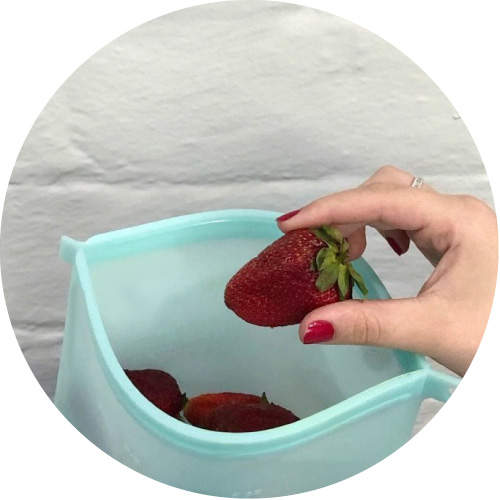
Retort Pouch Manufacturing Process
Retort pouches are typically created through a four-step process.
First, lamination layers of material are formed into a web.
This web is then cut into individual pouches and then sealed along the edges.
The last step involves sterilizing the pouch and filling it with food or beverage products.
The lamination process is key in creating a retort pouch. It involves combining two or more layers of flexible packaging together using heat and pressure, which creates an effective barrier from external elements such as oxygen, light, grease, moisture, and dust.
This barrier helps to keep food fresh for longer periods of time without needing a refrigerator or other preservation methods.
The cutting and sealing steps involve specialized machines that can produce thousands of pouches every hour at high speeds and accuracy.
These machines use metal dies to cut the laminated web into individual pouches while also sealing their edges in one single motion.
Finally, the sterilization step ensures that all bacteria on the pouch have been eliminated before any food products are added inside them.
Retort pouches are pre-packaged food products that have been sterilized and sealed in a pouch made of plastic and aluminum.
The pouches are designed to keep the food safe and remain sterile until opened. The process of sterilization involves exposing the food to high temperatures, usually between 120°C and 132°C, for extended periods of time.
This ensures that any bacteria or other microorganisms present in the food are killed off, ensuring it is free from contamination.
The retort pouch itself also plays an important role in the sterilization process.
The pouch must be strong enough to withstand the high temperatures used during the process, but flexible enough to allow for expansion as steam is introduced into it.
Additionally, the pouch must be able to maintain an airtight seal throughout the entire process.
This helps ensure that no microorganisms can enter or escape from inside the pouch during sterilization.
The entire process of sterilizing retort pouches is strictly monitored and controlled by professionals who ensure all safety guidelines are followed carefully so that only safe, sterile food products are produced.
By following these steps, companies can guarantee that their customers receive only healthy, uncontaminated food products every time they purchase a retort pouch product.
Types of High-temperature retort pouches
Classification by structure:
Class A: PA / CPP, PET / CPP. Amount of water vapor transmission: ≤15g / (m㈠4h); Amount of oxygen transmission: ≤120cm / (m2㈠4h0.1HPa).
Type B: PA / AL / CPP, PET / AL / CPP. Water vapor transmission rate: ≤0.5g / (m (4h); oxygen transmission volume: ≤0.5cm / (m㈠4h0.1MPa).
Type C: PET / PA / AL / CPP, PET / AL / PA / CPP. Amount of water vapor transmission: ≤0.5g / (m㈠4h); Amount of oxygen transmission: ≤0.5cm / (m㈠4h0.1MPa).
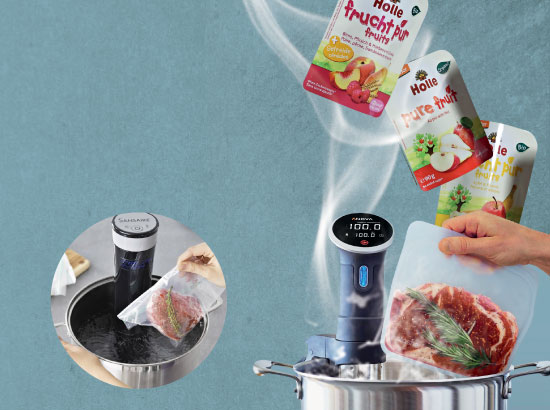
Classified by cooking temperature
When the relative pressure is 110 psi, the corresponding temperature is l15cC; the shelf life is about 3 months.
When the relative pressure is Ps 1 15 psi, the corresponding temperature is 121cC; the shelf life is about 6 months.
When the relative pressure is PS 1 20 psi, the corresponding temperature is 126cC; the shelf life is about 12 months (transparent bag).
When the relative pressure is PS1 30 psi, the corresponding temperature is 135cC; the shelf life is about 24 months (aluminum foil bag).
Of course, the shelf life has a lot to do with the barrier properties of the cooking bag and the type of food.
Classified by sealing process
There are three main types: heat seal, double heat seal, and laser welding.
Heat sealing involves using heat to emboss a pattern onto one side of the pouch that seals it when pressed against another surface with pressure.
A double heat seal involves creating two layers of overlapping seals that provide increased strength and protection from moisture and oxygen infiltration.
Laser welding uses a laser beam to create an airtight bond between two pieces of film, resulting in an incredibly strong seal that has minimal risk of failure due to temperature changes or other external factors.
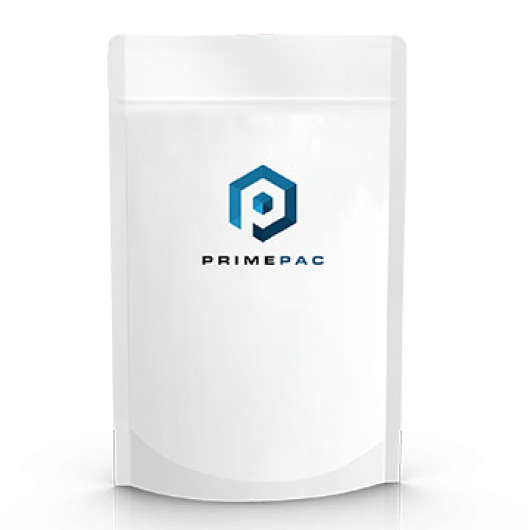
The newest generation of preformed pouches, the Boxed Pouch / Flat Bottom, is ideal for powders, flours, or granulated product forms.
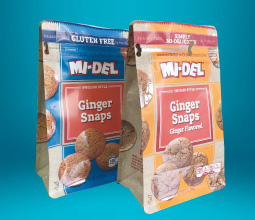
A cost-effective, high-visibility packaging solution, quad-style pouches give your company four sides of printable brand space while still providing stable shelf presentation.
If your company is making the switch from rigid boxes to flexible packaging, quad-style pouches are a great in-between, providing height and volume while still remaining upright.
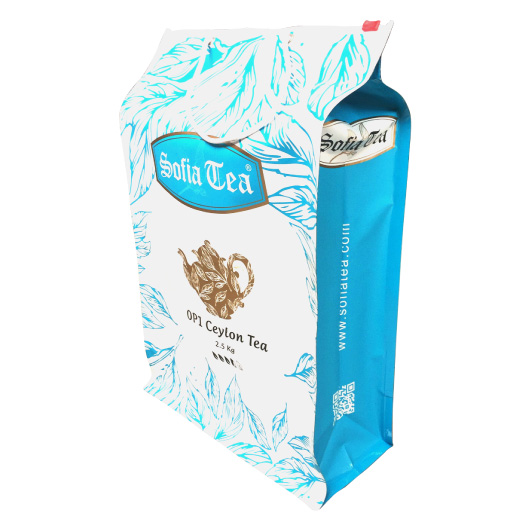
Make the most of your marketing and promotional messaging with a side gusset pouch.
This durable, convenient packaging is best suited for product sizes 300g to 20kg and is available in a variety of different materials.
This format gives you ample messaging space with high-quality print as well as shelf appeal and high durability.
Side gusset pouches are available with a resealable zipper or an easy-open tear notch.
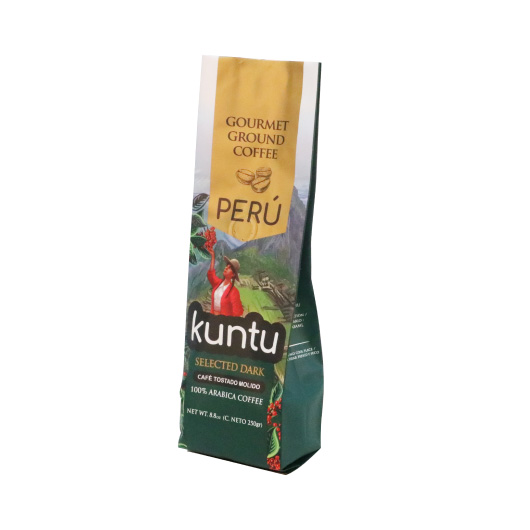
How to test the retort pouch?
(1)sealing test
Through blowing up the compressed air in the retort pouch and underwater extrusion, we can test the sealing performance of the material.
We can effectively evaluate the sealing performance to get basis information for determining the process indicators.
(2)pressure resistance and drop resistance test
Through the test of drop and pressure resistance, you can have a clear understanding to the resistance to rupture performance and ratio during the turnover process.
Anything can happen during the transportation, you have to do the pressure test for a single package and a drop test for whole box of products.
Besides, you need to do multiple tests in different directions, in order to get a comprehensive date.
That’s how you can solve the problem of product damage due to the transportation
(3)Mechanical strength test of retort pouch
The mechanical strength of the packaging materials include the composite peel strength, sealing strength, tensile strength, etc.,
if the test index can not meet the standard, it’s easy to break or fracture in the process of transportation.
Such parameters can be tested by universal tensile tester which meet the national and industry standards.
(4) Barrier performance test
Retort pouch are generally packed with highly nutritious contents such as meat products, etc.,
These products are susceptible to oxidation and deterioration. Even in the shelf life, its taste varies with the date, so to ensure its nutrition, flavor and quality, the packaging should use the material which are able to prevent the product from outside space.
That’s why it’s necessary for strict oxygen and moisture permeability test
(5) Residual solvent testing
Printing and compounding are two very significant steps during the production of retort pouch the use of solvents in the printing and compounding process is necessary.
The solvent is a polymer chemical materials with certain irritating odor, which is harmful to human body.
Every countries has relative lows to control the uses of these solvents
so during the printing process of semi-finished products, composite semi-finished products and finished products production , we have to do the solvent residue tests to ensure that the products are healthy and safe.
Therefore, printing semi-finished products, laminated semi-finished products and finished products are need to be tested for solvent residues to ensure that the products are healthy and safe.
Benefits of retort pouches packaging
The retort pouch has been developed as a flexible laminated food package that needs to withstand the heat treatment.
There are many benefits to using retort to package food. Foods can be raw or pre-cooked before being put into retort packaging. Compared with traditional rigid containers, they have a faster sterilization speed and a lower temperature.
One of the main benefits of manufacturing is that processing time is usually greatly reduced compared to processing in cylindrical containers.
Other advantages are that packaging requires smaller empty container storage space, easy to package and display, and can also reduce your transportation costs.
Sachets have become very popular and have been widely accepted by consumers.
Because they are strong, light, and versatile, retort packaging has become a widely used alternative to traditional canning methods, which can be used to preserve food and keep it fresh for a longer period of time. They use less than 5% of the packaging materials of traditional hard metal cans, and they help improve the flavor, texture, and aroma of food.
The stand-up pouch is made of a special laminated layer to protect food from spills, punctures, and external contaminants, and a special film is designed for foods that require fast cooking.
The retort packaging is ideal for items such as soups, rice, sauces, and pasta. If you are looking for the best quality retort packaging that Australia must provide, please contact us immediately.
However, those kinds of retort pouches are commonly used in our life right now while they do help to save the day! Let’s see:
Well-designed
Due to the sturdy packaging, these pouches are protected during transportation. Being lightweight, they also prove to be very cost-effective during transit. They can easily withstand temperature variations of up to 250 degrees and are leakage-proof.
Resource-efficient
Retort pouches utilize just 5% of the packaging material and at the same time improve the food texture, flavor, and aroma. Also, the energy that goes into the production of these pouches is much less than what goes into making metal, paper, or glass packages. They are made with high-quality materials and are environment-friendly.
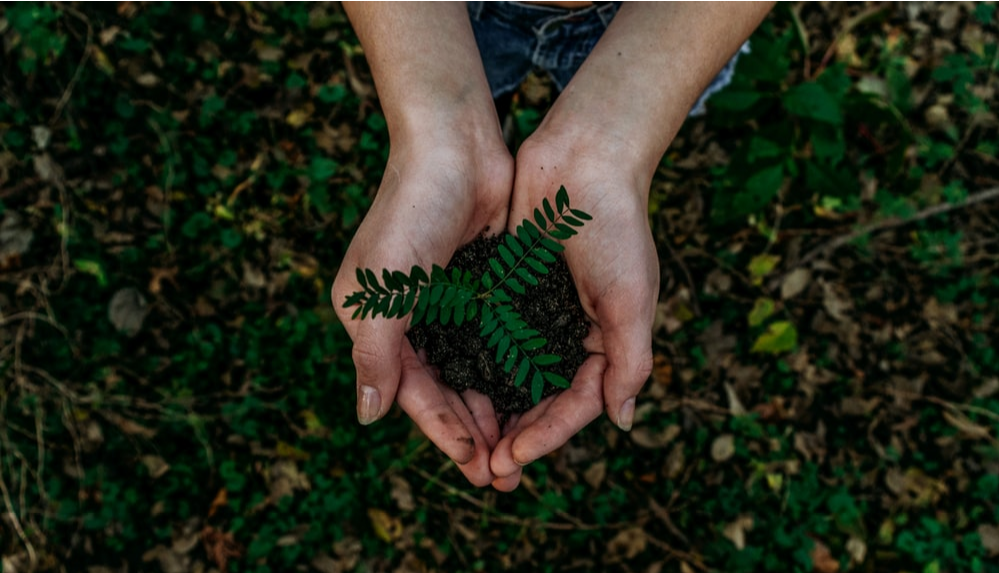
Space-efficient
Retort pouches can stand upright on the shelves and this helps in maintaining the food composition inside. They are also flat and hence take up very little space on the shelf as well as in the shopping bags.
Combinedly, all of the above advantages serve to make retort pouches the go-to packaging, especially in the food and beverage industry.
8 Advantages Of Retort Pouch Packaging
The retort pouch packaging is a composite plastic film pouch that can be heat treated. It has the characteristics of both a canned container and a boiling water-resistant plastic bag. Therefore, it is also called a “soft can”.
The retort pouch is made up of three layers of materials. The typical retort pouch structure is: the outer layer is a polyester film for reinforcement; the middle layer is the aluminum foil for light, moisture, and leakproof; the inner layer is polyolefin Membrane (such as polypropylene film) for heat sealing and contact with food.
In terms of food packaging, retort pouches have many unique advantages over metal cans and frozen food pouches.
Here are the 7 major advantages of retort pouch packaging:
1. Maintain the color, aroma, taste, and shape of the food. The retort pouch is thinner and can be sterilized in a short period of time, and the original color, aroma, taste, and shape of the food are preserved as much as possible.
2. Easy to use. The retort pouch can be opened easily and safely. When eating, put the food into the boiling water together with the bag and heat it for 5 minutes to open it, even if it is not heated.
3. Convenient storage and transportation. The retort pouch is light in weight and can be stacked and stored.
4. The space occupied is small. After packaging the food, the space occupied is smaller than that of the metal can, and the storage and transportation space can be fully utilized to save the storage cost.
5. Save energy. Due to the thinner retort pouch, the bacteria can reach the lethal temperature faster when heated, and the energy consumption is 30-40% less than that of the iron can.
6. Easy to sell. The retort pouch can be packaged or assembled according to market needs, and customers can purchase it at will. In addition, due to the beautiful decoration, it also greatly increases the sales volume.
7. Long save time. The food packaged in the retort bag does not need to be refrigerated or frozen and has a stable shelf life, comparable to metal cans, easy to sell, and is convenient for home use.
8. Low manufacturing costs. The composite film for manufacturing the retort pouch is lower in price than the metal sheet, and the production process and the required equipment are much simpler, so the retort pouch is lower in price.
Lanker retort pouches are available in a variety of accessories, including easy-to-tear, nozzle, zipper, transparent window, etc., to withstand temperatures from 120 ° C to 135 ° C.
Lanker retort pouch is strictly in accordance with international standards for quality control and is certified by the SGS testing organization for BRC and ISO certification, in line with international food safety standards.
Popular uses for retort pouches packaging
You can put almost any processed food or beverage you can think of into the cooking bag. Pet food manufacturers often use them to package wet foods and snacks.
The choice that consumers can pierce with a straw is suitable for juice and yogurt drinks. They are a good choice for ready-to-eat main dishes such as curries, pasta with sauces, and other pre-cooked dinners.
Manufacturers also use these containers for soup, rice, and pre-cooked vegetables.
Pet products, including snacks and wet food
Juice and yogurt drinks
Ready to serve dinner main course selection
Soup, rice, and delicious pre-cooked vegetables
Disadvantages of distillation packaging
Retort pouch packaging has two main disadvantages: initial mechanical cost and process complexity.
It requires highly specialized filling, heat treatment, and tensile strength testing equipment. The purchase and maintenance costs of these machines are often high.
Production complexity is another potential stumbling block. In order to properly heat-treat sealed bags, manufacturers must consider several factors, including residual air and packaging thickness.
Two other potential difficulties include slower filling speeds and the need to provide additional protection during transportation. Filling technology is often slower than canning technology.
Depending on the type of container you choose, you may need to provide additional packaging during the distribution process to minimize the chance of accidental punctures.
The market analysis of retort pouch
In terms of value and quantity, it is expected that from 2020 to 2025, the small bag segment will lead the distilled packaging market.
According to the type, the sachet segment is expected to become the largest market for retort packaging. The dominant market position of the bag can be attributed to its durability.
The growth of this segment is attributable to the increasing demand for its product packaging from the food and beverage industry.
The characteristics of retort bags, such as lightweight, smaller spacing, and longer shelf life, make them a suitable substitute for tin cans.
In terms of value and volume, the food end-use portion of the retort packaging market is expected to be the largest market.
Food includes ready-to-eat food, meat, poultry and seafood, pet food, baby food, soups, and sauces.
It is an important contributor to the growth of sterilization packaging. Retort packaging has revolutionized the food industry.
It promotes the development of food supply channels and helps supply seasonal food throughout the year.
Due to demographic changes, consumers are looking for more convenient ways to eat their food without too much trouble.
Drivers, constraints, and opportunities
-Driver
Changes in lifestyle due to busy schedules have led to increased dependence on processed foods. This is expected to further promote the growth of the distillation packaging market.
In addition, the rapid growth of the food and beverage industry and the increasing consumer preference for mobile food and beverages are other factors that are expected to promote the development of the retort pouch packaging market.
In addition, rapid globalization has led to an increase in the global processed food trade, which will promote the growth of the retort packaging market.
– Constraints
However, people’s increasing attention to healthy and hygienic foods is considered to be a restrictive factor in the retort packaging market.
-Opportunities
On the other hand, the government’s incentives and funding for the food processing industry in China and other emerging countries can create huge opportunities for the cooking and packaging market.
COVID-19 scenario analysis of retort pouches
Due to the cessation of manufacturing and a significant reduction in global demand for luxury goods and non-essential services, the COVID-19 crisis may have a negative impact on the retort packaging industry.
The impact of the COVID-19 crisis on the packaging industry is mixed, mainly due to the closure of physical retail stores around the world. However, the availability of online retail has absorbed the severe effects of this shutdown.
Demand for e-commerce specific packaging is likely to remain strong, although e-commerce companies will have to focus on product protection and packaging disinfection.
In addition, the food packaging industry is at the forefront of the global packaging market, mainly due to the demand for basic products such as groceries and fresh food from local e-retail sites.
Due to the decline in demand for non-essential goods in the first two quarters of 2020, industrial, transportation and bulk packaging are facing a sharp decline.
Due to the decline in the disposable income of the largest population and the weak demand for packaging for industrial products, the packaging industry may face tremendous pressure to reduce wholesale and retail costs.
Consumers may be hesitant to spend on luxury goods, travel and hotel services, which is expected to hinder the future growth of the packaging industry after the COVID-19 crisis.
The impact of retort pouches on life and career
Retort pouches have penetrated people’s lives and businesses.
The position in personal daily life and packaging business is becoming more and more important.
Next, I will talk about the impact of Retort pouches packaging from both personal life and business aspects.
(1) Retort pouches play an important role in personal life
Suppose there is such a scenario:
On a wonderful weekend, you and your family will have a picnic outdoors.
Delicious food cannot be absent.
But the problem is how to package delicious food. And how to take it out intact?
At this time, it is time for the Retort pouches to work.
You can bring a variety of delicacies prepared in advance.
Put these foods in retort pouches and don’t worry about the soup overflowing and the food will go bad.
When you share delicious food with your family, you will spend an unforgettable weekend.
On the other hand, if there is no food in the cooking bag, a lot of large and small lunch boxes are needed to store the food, which will take up a lot of space.
The soup may also overflow. If the food goes bad, what a bad weekend it will be.
Another example:
In another situation, you are an office worker and have a short lunchtime.
But I don’t want to eat takeaway, and I don’t have time to go home and cook.
At this time, the Retort pouches are on the stage.
You just need to take out the food prepared in the morning.
The next step is to heat it in a microwave.
Just wait a few minutes and you can enjoy a healthy, time-saving, and delicious lunch.
If you want to carry delicious food with you, steamed food is the best choice for today’s fast-paced life
(2) Retort pouches occupy an important position in the packaging business
“Business opportunities are like buses, there will always be another one.”-Richard Branson.
The question is: are you ready when the opportunity comes?
If you want to start your distillation packaging business, but are not ready yet.
I will help you learn more about retort pouches and how to do business.
The first thing you need to know is the changes in the packaging market.
The packaging industry is moving in a more convenient and environmentally friendly direction.
Steamed food is becoming more and more popular.
The search volume of retort pouches in the whole network exceeds 6000, and it is still growing.
This means that more and more people are starting to operate the retort pouches business.
So what does this mean?
This is a huge market.
You should have more Retort pouches on your shelf.
take this opportunity.
Otherwise, when others dominate the market, it will be too late for you to work hard.
Knowing yourself and the enemy is the only way to survive in every battle.
The purpose of marketing is to understand customers in depth.
Let our products meet the requirements of customers, and finally, let the products be self-sold.
The most important thing in doing business is to be good at analyzing market dynamics.
When the opportunity comes, seize it.
Where there is demand, there is a market. Where there is a market, there are opportunities to make money.
If you want to start a distillation packaging business, you should take everything about distillation bags.
What kind of food is suitable for cooking bags
(1) Field rations
Not everyone works in the city.
There are some special workers whose work is far away from the city.
In the wild or even on the high mountains. There are no salty vegetables or food there.
They did not work there for a day or two, but several years. So, how to let them eat delicious food?
This is a very critical issue. Distillation packaging is a boon for these workers.
They can eat what they want in the city, so they are in great demand.
(2) Air food
Like the needs of field workers, aerospace workers also have problems in this regard.
The dietary needs of space workers are more difficult because they work in space.
Their food packaging requirements are higher.
The problem of being overweight must be overcome in space.
The good news is that we solved this problem.
The bag can be left on the space station to provide food for the astronauts and ensure their nutritional needs.
(3) Seafood
Many people live far away from the sea.
They cannot eat fresh seafood all year round.
Because it seems that the shelf life is only 1-2 days, or even shorter.
We know that the sooner you eat seafood caught from the sea, the better. Therefore, people living in inland areas cannot eat fresh seafood.
To solve this problem. This is a special consideration when developing retort packaging.
After the seafood is salvaged, clean it immediately and put it in a cooking bag.
And immediately carry out high-temperature sterilization treatment.
The original flavor of seared seafood. When opened again, the taste is the freshest.
(4) Camping food
More and more people want to live outside the city.
More and more people want to travel on the go.
Finding beautiful scenery in nature is a great way to relax.
But how can there be no food to accompany you on the road?
Choosing food packaged in sterilization bags is the choice of more and more wild travelers.
Bring food, bring a good mood, embrace nature, and enjoy a good time.
(5)Soups and sauces
Retort pouches are also suitable for packaging soups, broths, and sauces. These types of products can be cooked at high temperatures and then packaged in the retort pouch for extended shelf life.
(6) Vegetables
Retort pouches can also be used for packaging vegetables such as carrots, peas, and green beans. These vegetables can be pre-cooked and then packaged in the retort pouch for extended shelf life.
(7) Baby food
Retort pouches are commonly used for packaging baby food. These pouches are designed to be lightweight, easy to use, and easy to transport.
(8)Ready-to-drink beverages
Retort pouches can be used for packaging ready-to-drink beverages such as juice, tea, and coffee. These products can be sterilized at high temperatures and then packaged in the retort pouch for extended shelf life.
4. How do you use the sterilization bag
The use of distillation packaging is very simple.
If your home or company has a microwave oven, you just need to put the bag in the microwave oven.
You can enjoy the food in 2-3 minutes.
If you are outdoors, put the sterilization package in boiling water and blanch for a few minutes. For food that does not need to be heated, just open the bag to eat.
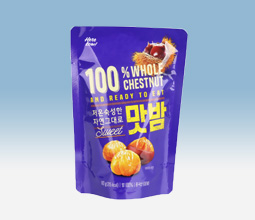
Storage Guidelines
To ensure the safety and quality of retort pouches, it’s important to store them properly. Here are some storage guidelines:
First, keep retort pouches in a dry area with low humidity levels.
This will help prevent the growth of mold or mildew on the packaging material.
Second, store them away from direct sunlight or other sources of heat, as this could cause the materials to become brittle or damaged.
Lastly, make sure they’re stored in an area that is free from dust or debris. This will help keep contaminants out of the food stored in the pouch.
By following these guidelines for storing retort pouches, you’ll be able to maintain their quality so they can be used safely for years to come.
Once a pouch has been opened, its contents must be consumed within several hours or else they may spoil and become unsafe for consumption.
Top 5 high-quality retort pouch suppliers in Australia
1. Vivo
Vivo Packaging is committed to ensuring the provision of high-quality packaging products. This company has different departments responsible for different obligations. This allows them to narrow their focus and create quality products every time. They work with qualified employees who have many years of expertise in the manufacture of packaging products. This allows them to produce high-quality products every time.
Their product range is very wide and it is a good choice for customers who need to see different options. The disadvantage of this company is that they do not provide printing services. This means that once you get a packaged product, you need to work with a printing company to classify your brand.
The feature of Vivo packaging is a spout bag carefully designed and made with high-quality materials. This allows them to hold liquids for a long time. The company has 2 factories, 2 departments, 2 warehouses, and 2 offices. With this, they can easily perform daily tasks to ensure they provide the best. They are located in Victoria, Australia.
2. Fine pack
The fine pack focuses on creating packaging solutions for different industries. They specialize in food and beverages, gifts, clothing, and agricultural products. They have a wide range of packaging options, with quality and function in mind when manufacturing. This company pays attention to its customers and realizes that printing services are an indispensable supplement. They strive to ensure that their customers’ brand image shines by ensuring that all designs meet high standards.
The best part is that they have custom designs that allow customers to comment on how they want everything to happen.
This is a great way to ensure that all your efforts to create the perfect package are rewarded. The company uses gravure printing and digital printing technology to ensure that all customer designs meet expectations.
This company prides itself on ensuring that its customers receive the best service.
This is why they themselves regularly review their systems and processes. This allows them to see where they can improve and how they should use their expertise.
They also pay attention to custom comments to make sure they solve all the issues that caught their attention. They are located in Leighton Square in Hornsby, Australia.
3. Of pack
Of pack is a manufacturing company that specializes in creating high-quality packaging options for customers.
The company was founded in 2016 and has grown and grown over the years to innovate its systems and processes. This allows them to accept new technologies and flexible packaging manufacturing options.
They are proud to provide products suitable for the needs of different industries. Their products guarantee quality and high performance to ensure that they meet customer needs.
They work with a group of qualified employees who have more than 50 years of comprehensive expertise in the field. This shows that they are proficient in their production process and will provide quality products.
Given that customers also need to print on their packaging, the company offers ready-made packaging options. This means you can let them finish printing to reduce hassle and pack and sell your products faster. Their series of spout bags are designed to provide great convenience and are manufactured with the highest quality.
The company is located in Melbourne, south of Oakley, Australia, and has international offices in other parts of the world.
4. Logos pack
Logos pack was established in 2004 and has always been the world’s leading manufacturer of flexible packaging. They work hard to ensure that all their products are of high quality and meet customer expectations. This allows them to gain the trust of their customers and earn a reputation for themselves. They have a team of experienced employees to ensure that all their products are manufactured in accordance with the highest standards.
They are well versed in the latest technology to ensure that all their processes are as efficient and cost-effective as possible. With this, you will find that the price attached to the packaging option is very friendly. They are a motivated company that aims to ensure that they contribute to sustainability and an eco-friendly environment. This is why they ensure that all raw materials are FDA approved and of the best quality.
This allows them to create products that can be used by customers for a long time and can reuse some products for different purposes. They have a wide variety of flexible packaging to meet the different needs of customers. Their spout bags are well-designed, made of high-quality materials, strong and flexible. They are located in China, but have established a strong influence in Australia, and have established systems and logistics to meet customer needs.
5. Primepac
At PrimePac, we bring together design experts and brand innovators to create fresh ideas, customized packages, and fully efficient processes.
We design creative packaging solutions that cater to a diverse global audience with the in-house knowledge and network of experienced professionals to meet the demands of every type of client.
From our dedicated sales team and warehouse staff in Australia to the experts at our production facilities in China, all of our employees are guided by four core values at the heart of our business: integrity, innovation, passion, and engagement.
With our team in China and Australia working as one, we reduce inefficiency so that you deal with one streamlined team from manufacturing right to delivery.
Service support team located in Guangzhou, the manufacturing hub of China, providing rapid response, and local industry knowledge. Warehouse and 3PL network located in Sydney, to provide rapid distribution, and delivery to your customers.
Conclusion:
According to the introduction, the retort pouches are different according to the material and the number of layers. During use, you can also choose different specifications and types of cooking bags according to different cooking environments and foods.
It is undeniable that retort pouches are indeed closely related to our lives. In order to meet the current public’s pursuit of environmental protection concepts, many manufacturers have also started to develop green retort pouches.
PrimePac is a manufacturer specializing in packaging production. It pays attention to every detail from material selection to production. Technological innovation is productivity and it is your trusted cooking bag manufacturer.
About Primepac
Primepac is Australia’s number 1 choice for plain and custom printed high-quality packaging.
At PrimePac, we bring together design experts and brand innovators to create fresh ideas, customized packages, and fully efficient processes.
We design creative packaging solutions that cater to a diverse global audience with the in-house knowledge and network of experienced professionals to meet the demands of every type of client.
From our dedicated sales team and warehouse staff in Australia to the experts at our production facilities in China, all of our employees are guided by four core values at the heart of our business: integrity, innovation, passion, and engagement.
Focus on the cosmetics packaging
About cosmetic packaging
Marketing situation right-now
In the period of modern high-speed development, people’s cultural level is getting higher and higher, thus their aesthetic concepts have also improved. As a product, its packaging is crucial. According to their consumer psychological characteristics, cosmetics packaging design should make full use of the rules of color association, fully satisfy women’s beauty, superiority, charming, which can display their personality and value, and thus promote the continuous increase of cosmetics consumption.
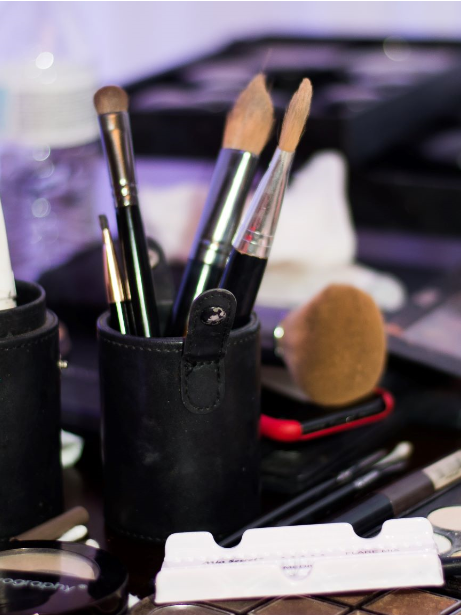
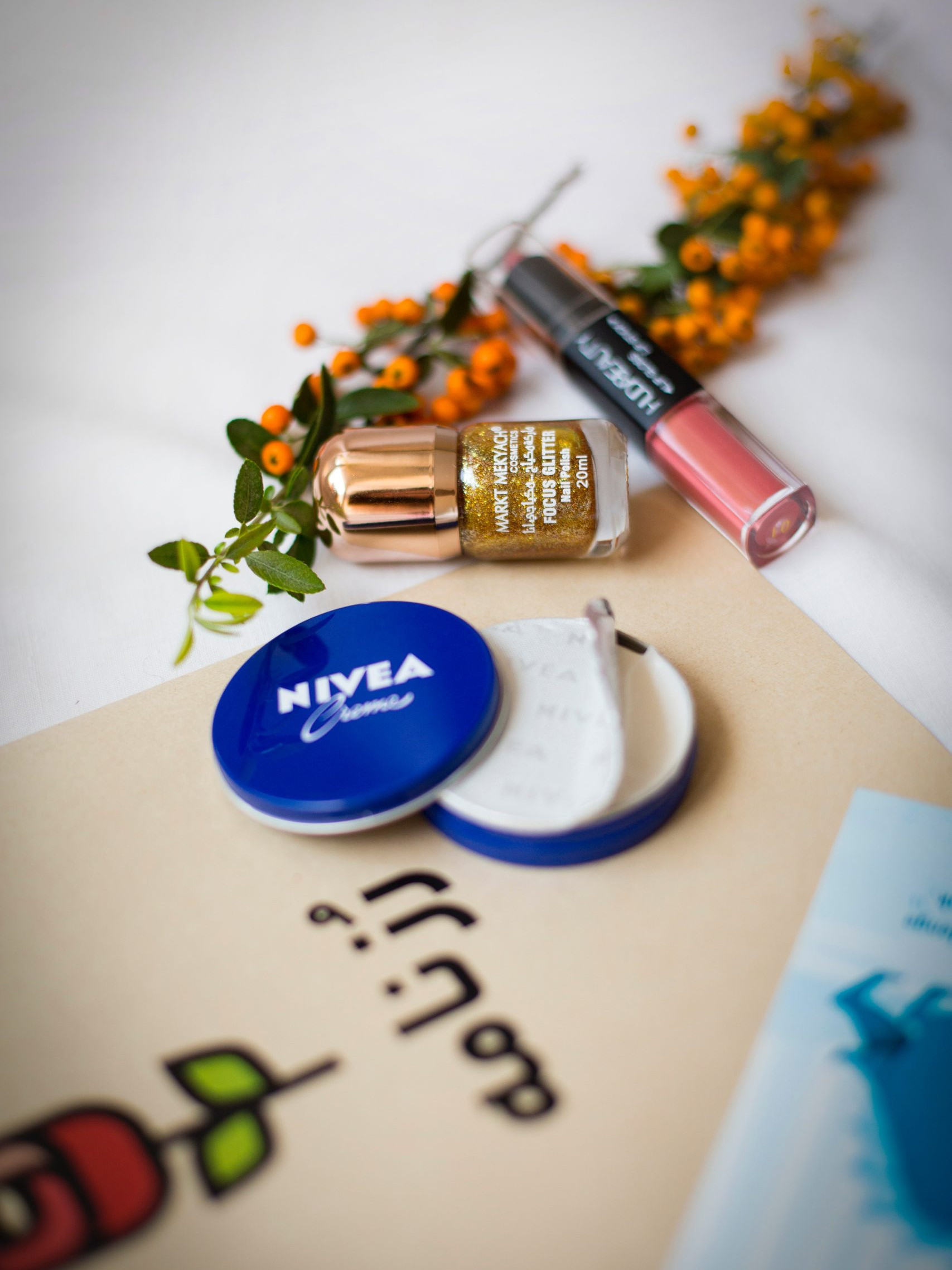


The main psychological characteristics of female consumers
The psychology of seeking beauty is outstanding. Everyone has a beautiful heart, and this is especially strong in female consumers. In the purchase process, women have a special preference for products that can beautify life, have strong decorative features, unique shapes and novel styles. In women’s memory process, they have strong emotional memory. Therefore, aesthetically pleasing and valuable products often form a strong stimulus for them to make them uncontrollably excited, affect their shopping mood, and then generate a certain desire to buy or possess, thereby laying the foundation for the realization of purchase behaviour.
The cognition is delicate and the decision-making has strong emotion. Female consumers have rich and delicate emotions. When they encounter interesting products, they are prone to purchase desires, and are also easily affected by the surrounding environment, and quickly make purchase decisions. When women make purchase decisions, they are easily tempted by the visual impression and the appearance of the product. Beautiful product packaging, bright window display, and a good shopping environment can arouse female consumers’ positive emotions and generate purchase desire.
Strong self-awareness and rich association. Female consumers often compare the self-comparison of goods in the purchase decision and associate the consumption effect of the goods. Female consumers often use the methods of peer evaluation and comparison in the propaganda media to feedback the impact of products on their self-image. Have a strong recommendation desire for the products you are satisfied with, and the rumor effect is more prominent for the products you are not satisfied with.
Packaging, originally designed to protect goods during transit, has long been expanded to include many highly innovative features. Products and packaging are coordinated and, where possible, personalized so that they can meet individual expectations without any additional cost.
Comparing to show off is more intense. Showing off the psychology of showing one’s superhuman place by shopping is a concrete manifestation of beauty and fashion. Contemporary women, especially young and middle-aged women with higher family incomes, like to compare with others in life, and always hope to live better, more comfortable, and richer than their colleagues, relatives, and friends. In their consumption activities, in addition to meeting their basic living consumption needs or making themselves more beautiful and fashionable, they may also pursue high-end, high-quality, high-priced brand-name products or have strange, vulgar, elegant appearance And other distinctive products to show their superior position, economic prosperity, and elegant taste.
The trend of cosmetic packaging design
Eco-responsible packaging should become a fashion. While the industrial revolution has caused rapid economic growth, it has also rapidly reduced ecological resources, severely polluted and damaged the living environment of human beings, which has aroused the general concern of the whole society. Nowadays, people’s awareness of the environment is increasing, and they are more and more aware of the urgency of environmental issues and the importance of green cosmetics packaging.

Modern packaging design applies color association to packaging design scientifically and reasonably, making color design closer to life, and more towards modern environmental protection and natural design direction, which is also a requirement for colour. The association of colors is closely related to human personality, gender, living habits, psychological conditions, living environment, nationality, age, and cultural level, etc., and changes with the changes of times and fashion.
Color can make the emphasized theme image more vivid and prominent, so it is easy to attract the attention of others, the goal is clear, and it can attract people’s attention. The ultimate purpose of layout design is to make the layout clear and organized, and to use a pleasing organization to better highlight the theme and achieve the best results. It helps viewers pay attention to design, enhance the understanding of content, and enhance the appeal and formal beauty of the design.
The trend of packaging is getting closer to people’s cultural needs. In a broad sense, culture includes things at the material level as well as things at the spiritual level. In the narrow sense, culture mainly refers to things at the spiritual level, such as philosophy, religion, art, morality, and some materialized essences such as interests, systems, and behavioural methods. Modern packaging design has the cultural characteristics corresponding to the market, and it is a reflection of the values, ethics, lifestyle, aesthetics, etc. of the local people.
Cosmetics packaging design today
Combining the development trend of cosmetics and its packaging, the DIY beauty packaging of modern cosmetics has the following characteristics in terms of choice of cosmetics packaging materials and containers, structural design of cosmetics packaging containers, and decoration design of cosmetics packaging containers:
Cosmetic packaging design trends
The application range of plastic materials and composite materials in cosmetic packaging is getting larger and larger, and the shape design of packaging containers, especially plastic bottles, tends to be diversified.
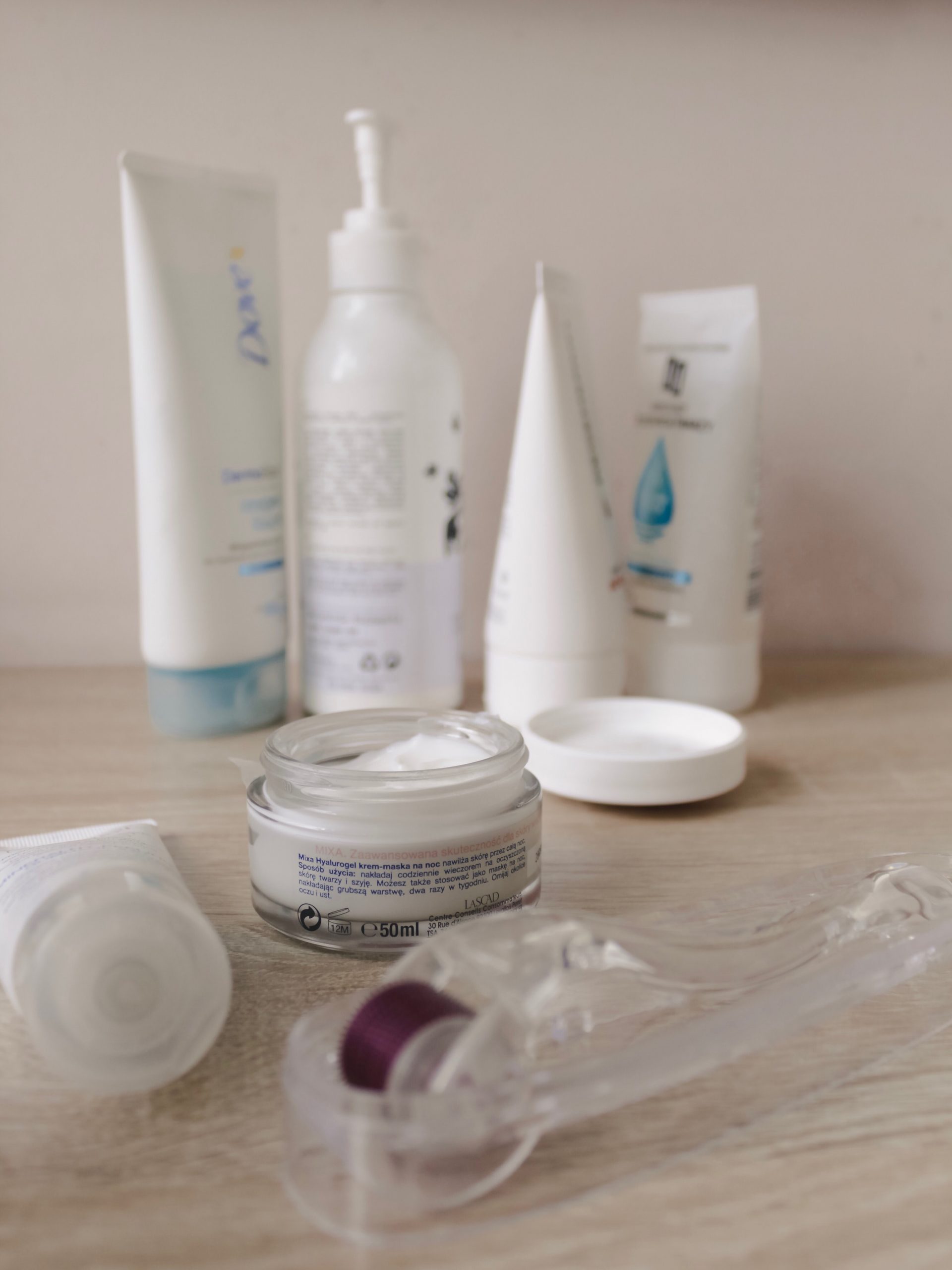
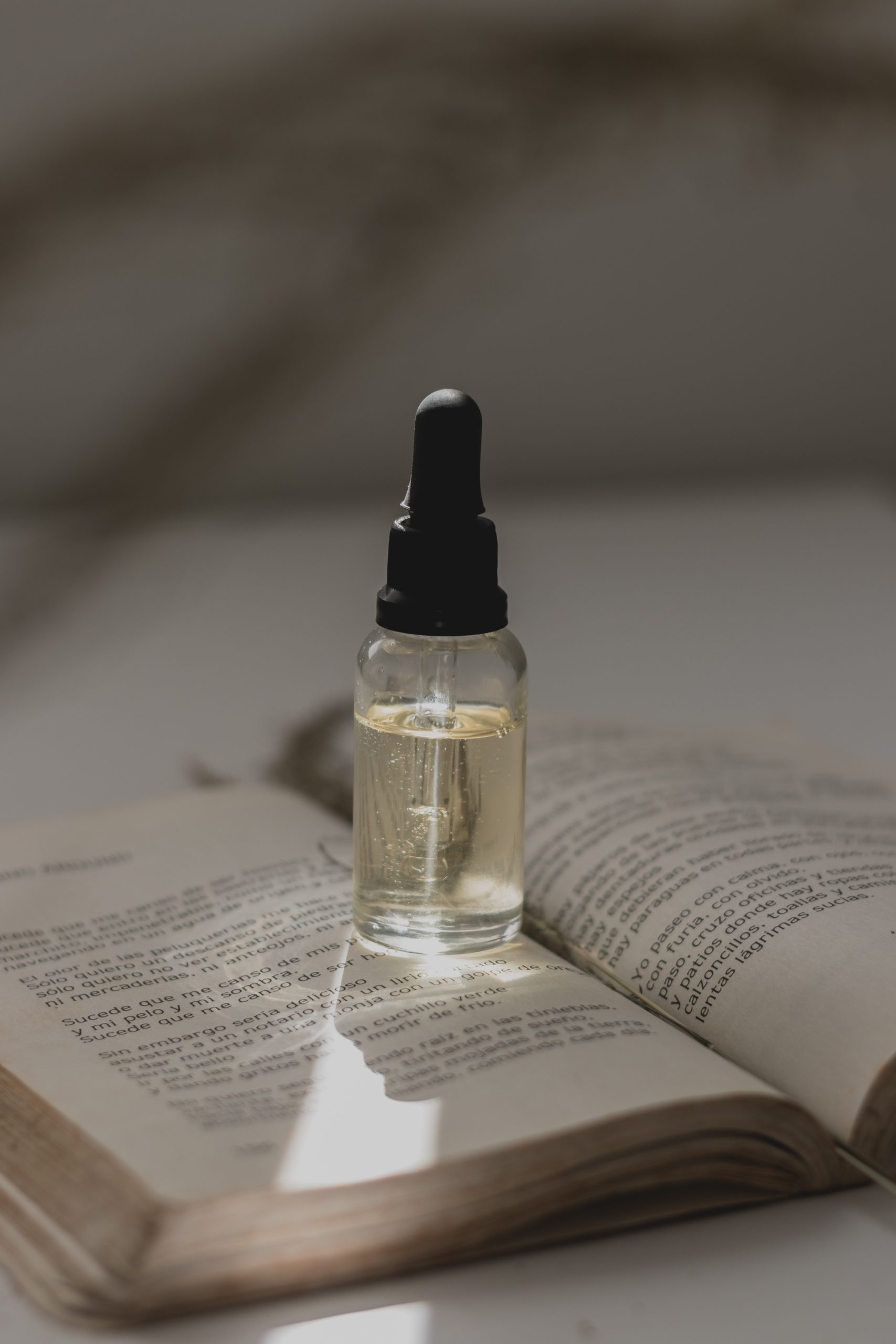
Use of glass bottles is restricted
Due to the inherent disadvantages of glass bottles (such as specific gravity, fragility, etc.), for general cosmetics packaging, if plastic materials or composite materials can be used instead of glass containers for packaging, plastic containers or composite containers are often used for packaging, and for high-end cosmetics Or volatile and easily scented cosmetics packaging, such as perfume, are usually packaged in glass bottles.
Diversification of packaging container
Diversification of packaging container specifications to meet different consumption levels. Due to the intensified competition in the cosmetics market, manufacturers are increasingly investing in cosmetics packaging. For low-to-medium-grade cosmetics, in order to meet different needs, the capacity of the packaging container is diversified to facilitate consumer choice; for high-end products, small-capacity packaging is used to meet the needs of low-income people, especially young girls Consumer psychology due to curiosity.
Serialization of cosmetic packaging design.
The so-called serialized packaging design refers to the same type of product packaging design based on the premise of a unified trademark pattern and text font and based on different colors, water patterns, or different modeling structures. The requirements are the same as the differences, and the differences are the same. , Both diversified and holistic. In the practical application of cosmetic packaging, there are generally two cases. One is: a series of packages of cosmetics of the same brand and different functions are packaged to facilitate the purchase of consumers, while the overall price is lower than the total price of individual purchases.
The characteristics of cosmetics required
Cosmetics packaging should increasingly meet the needs of individual development. Cosmetics packaging must correctly communicate the characteristics of cosmetics required by different individual consumer needs, and express the aesthetic taste of different people, in order to successfully achieve the sales of cosmetics.

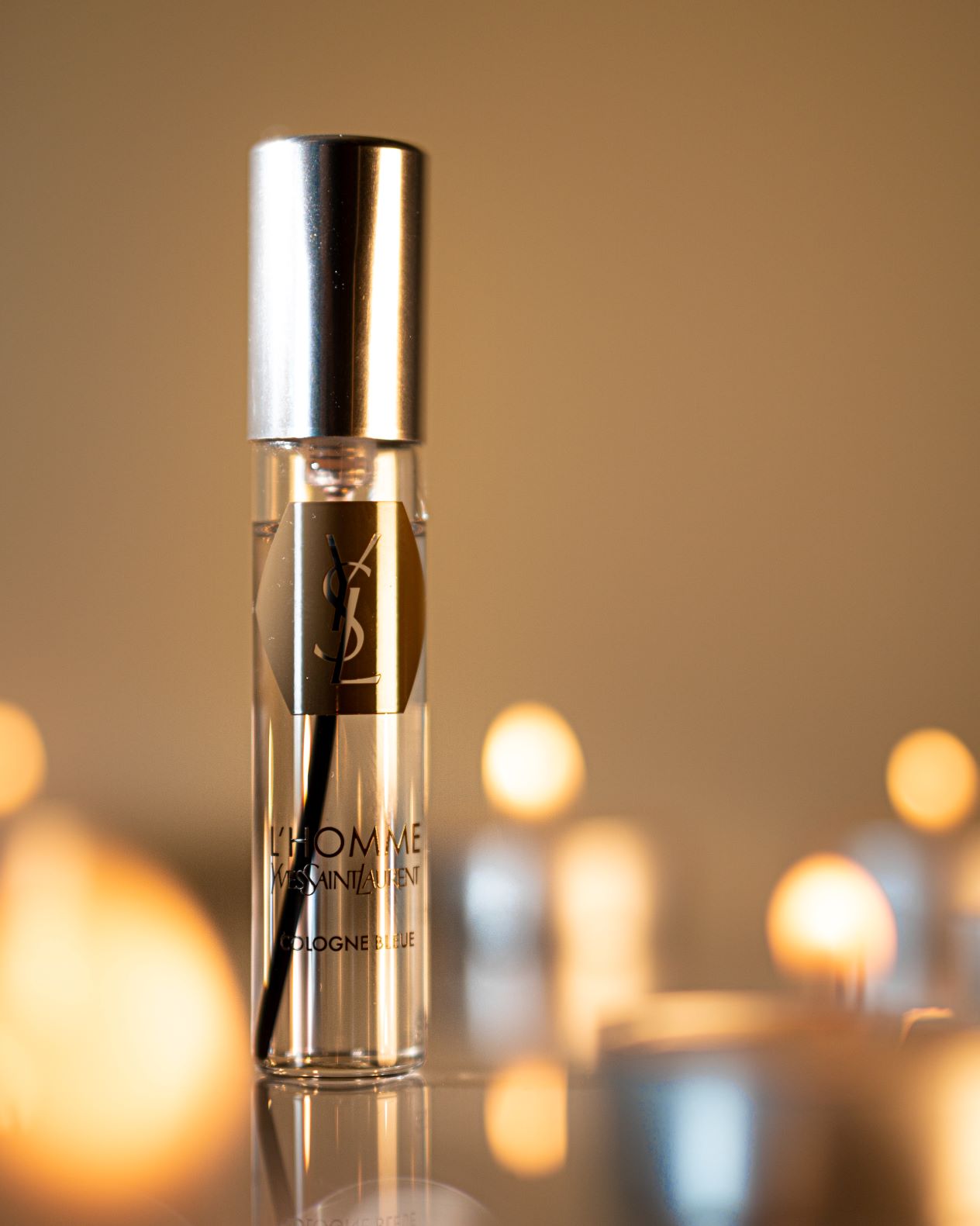
Spray packaging for the convenience of consumers
Some cosmetics such as mousse, perfume, and other products use packaging such as spray packaging for the convenience of consumers. The packaging of cosmetics is paying more and more attention to the design of the structure of the container and the design of accessories, making consumers easy to hold, easy to use, and easy to quantify in various environments.
High-end packaging
high-end cosmetics packaging, modern cosmetics packaging design focuses on the interaction between consumers and goods. Consumers rely on the transmission of design to create interactive emotional dependence on products, such as the packaging design of many beverages, which constantly change the original basic pattern. The image of the most fashionable image spokesperson is continuously passed on to fashionable young consumers. “Forefront” information concept to meet the emotional requirements of consumers in specific age groups.
The application of carton packaging
In the paper packaging structure of modern goods, the carton of the glue-free molding structure is becoming more and more popular.
In the fully automatic molding process, a lot of folding boxes of the glue-free structure began to replace traditional cartons with adhesive structures.
① Single carton cosmetics packaging and double-side wrapping folding carton This carton is mainly based on surface decoration to match the shape of the carton. The shape of the carton needs to be matched with the product design to highlight its practical features. The variety of make-up, such as pressed powder, eye shadow box, makeup box, etc.
②Single bottle with compartment folding carton This is a perfume box that comes with a soap gift in China. This carton consumes more paper, but the compartment structure can provide a good buffer Effect, can effectively protect goods, and the size of the cosmetics packaging content can not be seen from the surface, more suitable for cosmetics packaging. It should be noted that the structure of the carton must be made of cardboard with better flexibility.
③Cross-sealed folding carton This is a folding carton used by Shiseido cosmetics to packaging perfumes. The design direction is to open the display in the window as the main purpose, which can better display the goods. The inside of the box is also printed with exquisite patterns to match the packaged perfume container. The sealed carton can be suitable for transportation and sales needs. It is a typical display and transport dual-use carton.
In addition, combination packaging is a branch of serialized cosmetics packaging, which can also be called collective cosmetics packaging. It is to package cosmetics of the same brand and different functions in a series of packages to facilitate the purchase of consumers and at the same time make the overall price lower than the total price of individual purchases. For example, there are various kinds of noble cosmetics such as makeup packaging gift boxes powder, eye cream, lipstick, etc. are packaged in complete gift boxes, which can improve the valuable quality and sales force of the products. Coupled with the successful decoration design to enhance its visual impact, it is even a good cosmetics packaging choice. The most typical one is a folding carton. The compartment design in the structure can be flexibly adjusted according to the number and shape of the contents.
Conclusion
Cosmetics packaging directly affects customers' purchasing psychology, and product cosmetics packaging is the most direct advertisement. Excellent packaging will not only attract customers' attention in the store but also further enhance the product. It is a market strategy that no well-known company dares to ignore. We have focused on cosmetics packaging design for many years. For all kinds of packaging, we are pursuing fashion, environmental protection, and quality.
INTRODUCTION
At PrimePac, we bring together design experts and brand innovators to create fresh ideas, customized packages, and fully efficient processes.
We design creative cosmetics packaging solutions that cater to a diverse global audience with the in-house knowledge and network of experienced professionals to meet the demands of every type of client.
From our dedicated sales team and warehouse staff in Australia to the experts at our production facilities in China, all of our employees are guided by four core values at the heart of our business: integrity, innovation, passion, and engagement.
With our team in China and Australia working as one, we reduce inefficiency so that you deal with one streamlined team from manufacturing right to delivery.
Service support team located in Guangzhou, the manufacturing hub of China, providing rapid response, and local industry knowledge. Warehouse and 3PL net work located in Sydney, to provide rapid distribution, and delivery to your customers.
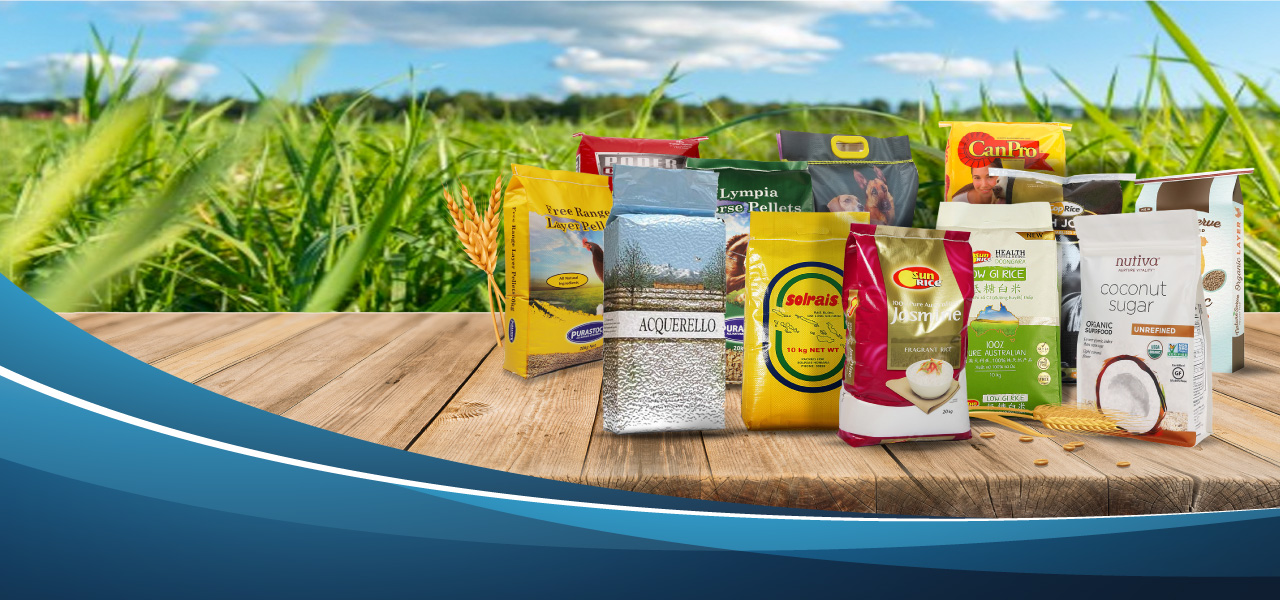
Wisely Use Eco-Friendly Packaging For Your Online Business
What is Eco-friendly packaging?
Eco-friendly packaging, also known as sustainable packaging, refers to packaging designs that have the lowest environmental impact possible. They achieve this by limiting the packaging waste created, maximizing sustainable materials (such as recyclable or biodegradable packaging elements), and the use of renewable energy during production. In short, sustainable packaging and eco-friendly packaging are all about being mindful of your business’s carbon footprint.
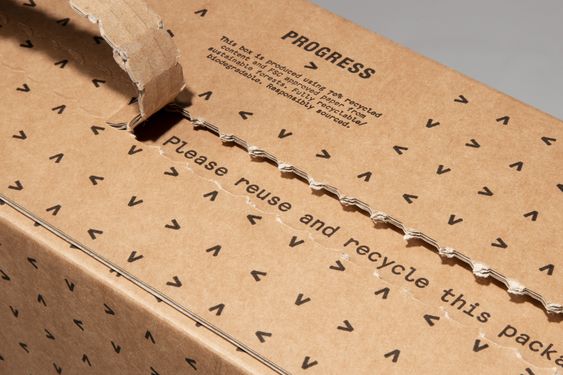
Despite the fact that sustainable shopping has become much more accessible than it was a decade ago, and consumers are in fact buying more sustainably marketed consumer goods, eco-friendly packaging is still important for both brands and shoppers.
Why eco-friendly packaging?What’s the packaging marketing situation right now?
With the growth of consumption, product packaging, as one of the important product factors, plays an important role in influencing purchasing decisions. In order to meet the demand of customers, various product eco-friendly packages are coming up.
What kind of problems and situations will the packaging markets face? What will happen to the packaging industry? Let’s see together!
Eco-friendly packaging, or green packaging, is a way to push back against traditional, highly disposable shipment methods. After all, almost half of the plastic produced worldwide will only be used once before it is thrown away.
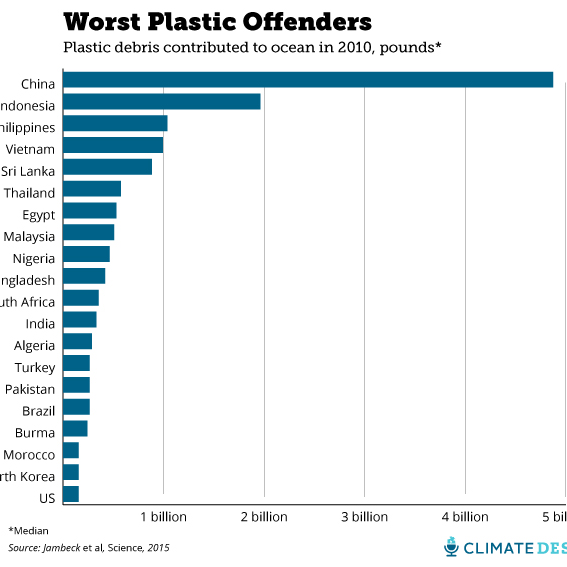
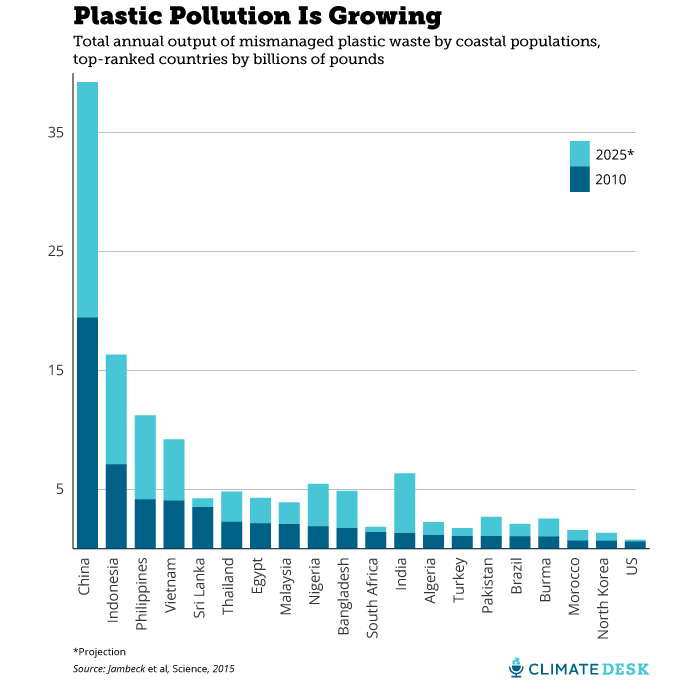
Data from : CLIMATEDES
#Problem 1 : Excessive Packaging
When we order products, when we find that we always need more product eco-friendly packaging than we expected, we will be confused by surprise. Must our products have five different layers of paper and plastic? Unfortunately, the answer is: maybe.
As the experts point out, if not everything is shipped with some kind of protective material, there is a good chance that when it arrives in your hands, the new product will not bring you the ideal state. Especially if you order goods from a larger brand, then your product must be packaged before it is processed a lot, and the product must have some water resistance and durability to keep the product intact and undamaged in many cases. travel.
The next question is security. Food packaging poses other problems because it must meet FDA safety standards, which prohibits packaging food in recycled plastic. Of course, for hygiene and sterilization reasons, products such as medical equipment, medicines, and supplements must meet strict packaging standards.
#Problem 2: Non-Biodegradable, Non-Recyclable Materials
Most of the packaging in our lives today because has to be water and tear-resistant, most of this packaging is plastic. Sure, some of it can be recycled, but most of it can’t. (And recycling should not be our first choice anyway—it still requires a lot of fossil fuels.)
Take the dreadful polybag, for example. Pretty much everything you buy online—from electronics and apparel to home goods and food—comes wrapped in a thin, polyethylene, virgin plastic bag.
They’re made out of the same material that plastic grocery shopping bags are, and they are technically recyclable in some places, but they are so cheap and often contaminated that even if consumers actually put in the effort to take them to the provided bin at the grocery store, only a percentage of the bags actually get recycled into something new.
#Problem 3: ‘Biodegradable Plastic’ Greenwashing
With increased awareness about how terrible single-use plastic is for our planet, ‘biodegradable plastic’ is popping up everywhere. These materials are plant-based alternatives that are meant to solve a lot of the problems that plastic does (water resistance, etc.) but are made from natural materials and supposedly biodegradable.
Some of these types of bio-plastics simply break down into smaller and smaller pieces, causing microplastics or plastic-like bits that are perhaps more destructive and even harder to clean from our lands and waterways than whole plastic products. Others, primarily oxo-biodegradable products, rarely even break down at all. And others still can actually be composted, but it has to be at an industrial facility, not your backyard compost, that's meaning consumers are much less likely to actually get that good to the necessary location where it can be broken down properly.
Eco-friendly packaging materials
Therefore, what to look for in eco-friendly packaging? Here we got several eco-friendly packaging materials!
Palm leaf products
The thickness varying palm leaf products rack sumptuously stylish over the shelf of elegantly compostable products that serve to the requirement and takes sprint to join the nature. Biodegradable Palm leaf plates, platter trays, and bowls can be reused with a quick wash or wipe.
This so-natural product cracked out from the sources like vegetable fats, pea starch, corn starch shows the similarity of a usual plastic though embodied with the renewable and recycling characters. Unlike plastics taking big bout to form from the finite oil and hundreds of years to decompose the bioplastics are worthy to foster our environment with low greenhouse gases impact.
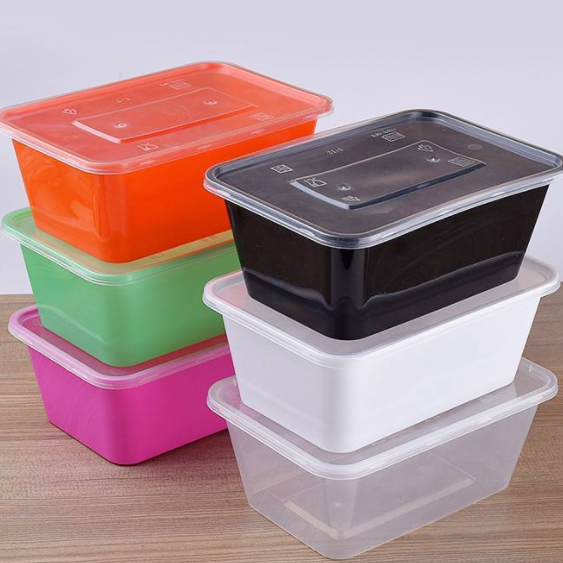
Mushroom packaging
Made from mycelium, which is the root structure of mushrooms, this material is biodegradable, compostable, and can even be grown to fit the shape of a product.
Biodegradable foam
Biodegradable foam, also known as “bio-foam,” is a type of packaging material that is made from natural materials like cornstarch or other renewable resources.
It is designed to break down the environment over time, reducing waste and minimizing harm to the environment.
Biofoam is often used as a substitute for traditional foam packaging materials like Styrofoam or expanded polystyrene (EPS), which are not biodegradable and can have a negative impact on the environment.
Biofoam is made from materials that are renewable and can be easily broken down by microorganisms in the environment, making it a more sustainable option.
One potential downside of biodegradable foam is that it may be more expensive than traditional foam materials.
However, as more companies adopt sustainable packaging practices and demand for biofoam increases, the price may become more competitive.
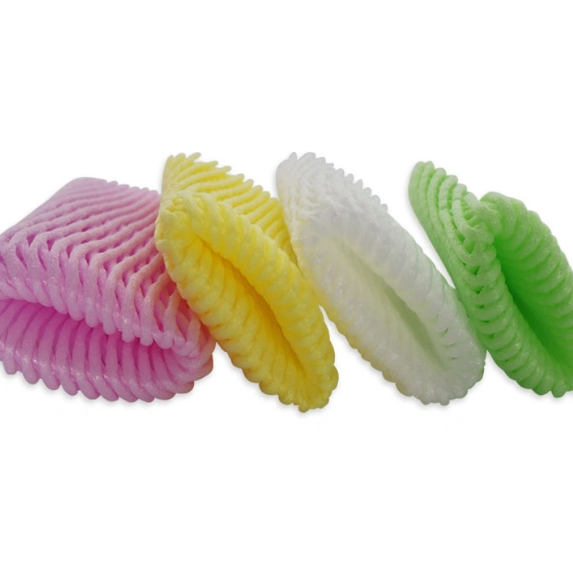
Forest Wood
Wood packaging involves utilization of wooden products that are made out from renewable plant resources for packaging of boxes, cases, drums, crates, pallets, box pallets and other similar packaging products to hold commodity.
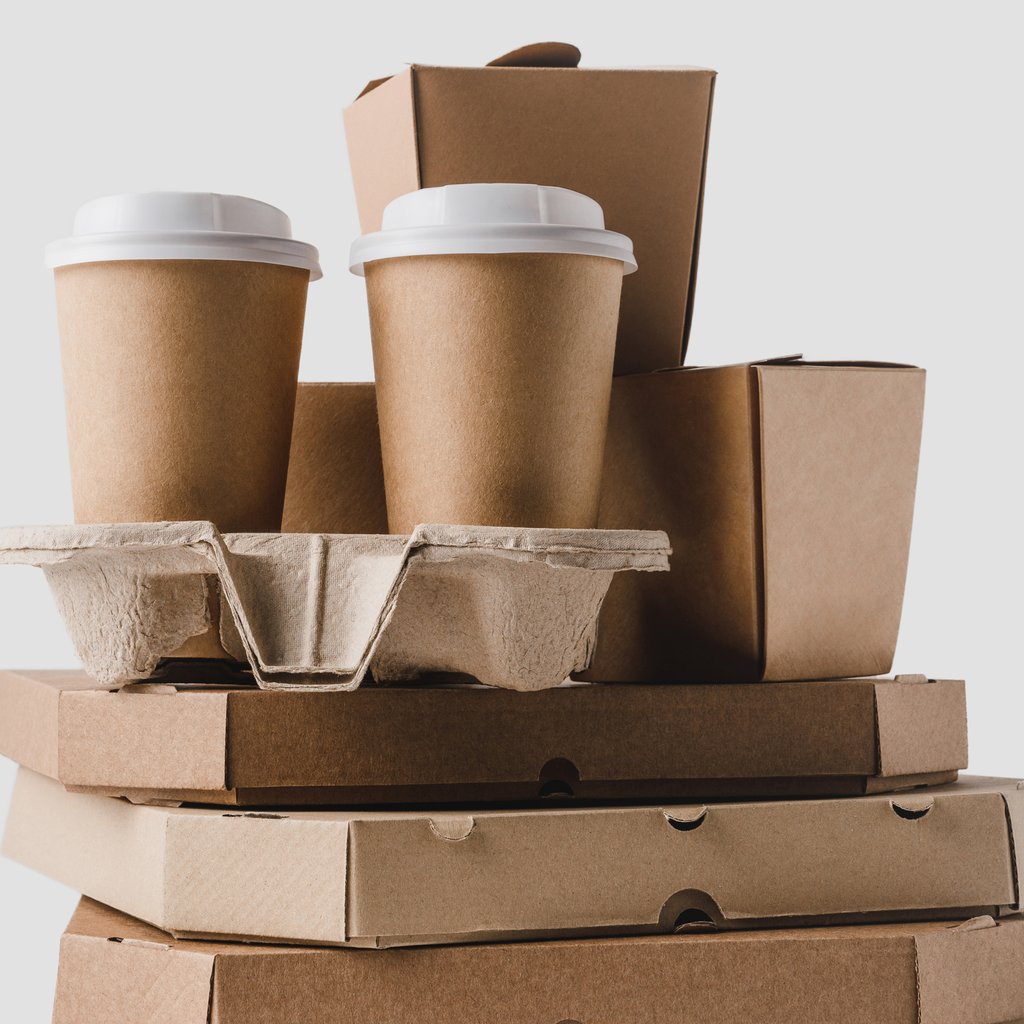
Recycled paper
The recycled paper packaging products contribute to the glory of the environment through their inherited significant properties of compostable and biodegradable alongside some notably benefiting non-polluting, clean, and safe characteristics. In addition, the consumption of energy for the production of eco-friendly packaging products with recycled paper acquires less than the products that come out from trees.
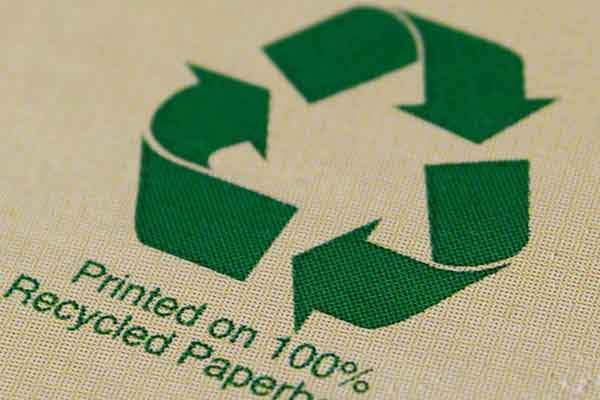
Plant Starch
Plant Starch Materials extracted from renewable crops are biodegradable plastics with flexible nature. Starch derived from potatoes, corn, cassava root called Tapioca, and grass fibers individually constitutes for the production of eco-friendly packaging products that are bio-based. In addition, they are heat resistant and fit stringent to carry hot food.
Glass
Glass is a highly sustainable and eco-friendly packaging option due to its unique properties.
Glass is made from natural materials like sand, soda ash, and limestone, and does not contain any harmful chemicals or additives that can leach into the Product. This makes it a safe and healthy packaging option for food, drinks, and other products.
Glass containers can be reused many times, which can reduce the carbon footprint of packaging and shipping.
That’s why Glass packaging has been commonly used in the cosmetic industry
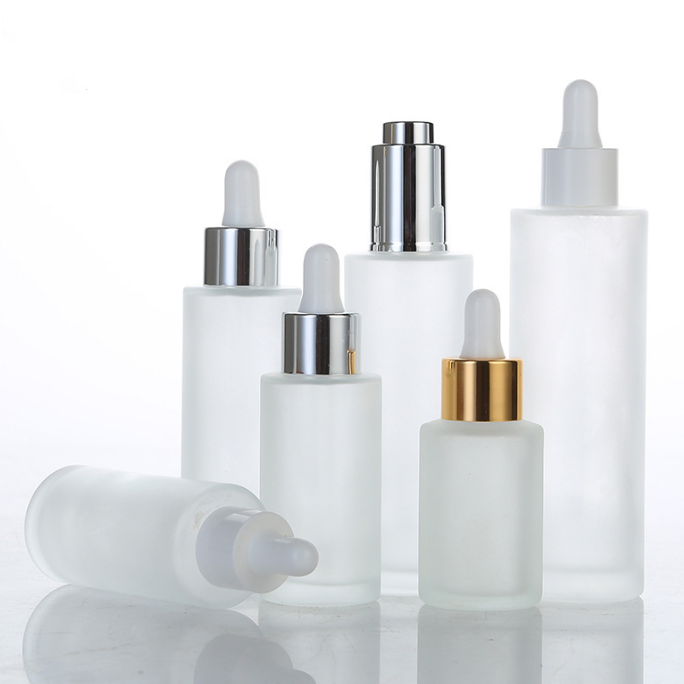
Beeswax wraps
These reusable and compostable wraps made from cotton and beeswax can be used as an alternative to plastic wrap.
Bamboo
Bamboo is a fast-growing, renewable resource that can be used to make a variety of packaging materials, including utensils, containers, and even paper.
Cork
Cork is a sustainable and biodegradable material that can be used to make packaging materials, such as wine stoppers, and even as an alternative to bubble wrap.
Edible packaging
Made from ingredients such as seaweed, potato starch, or even chocolate, edible packaging can eliminate waste and provide a unique and tasty experience for consumers.
Jute
Jute is a natural fiber that can be used to make bags, sacks, and other types of packaging that are biodegradable and compostable.
Silk
Silk is a natural and biodegradable material that can be used to make unique and sustainable packaging, such as gift wraps.
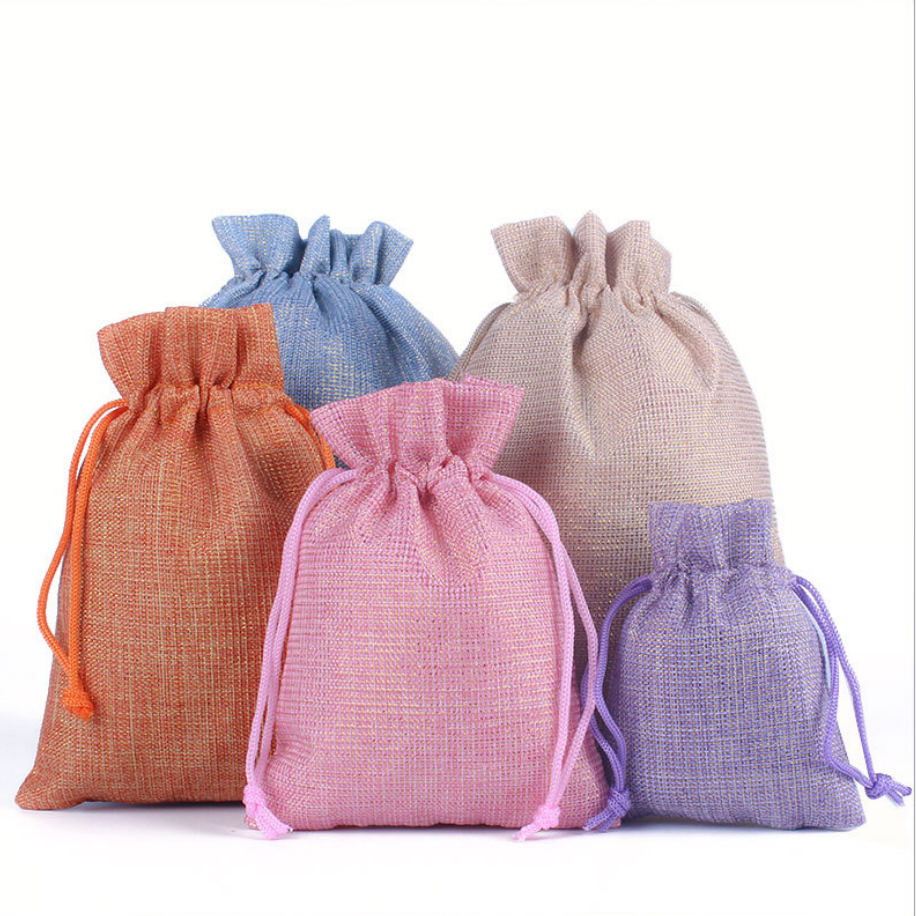
So, you must wondering how to make your business more eco-friendly right now?
Here we list 10 simple tips below which will help you wisely optimize website spendings and make your business more attractive to eco-conscious consumers. No matter which of these steps you will take, remember to inform customers about all green activities you are involved in.
1.MAKE YOUR PACKAGE DESIGN FUNCTIONAL
A food container shaped as a teddy bear or a puzzle box will ensure that packaging gets a second life and won’t end up in landfills.
2. REDUCE PACKAGING
Although from the eco-friendly perspective, the best packaging is no packaging, it’s hardly possible to refuse to wrap at all. However, as we’ve already mentioned, reduced packaging will significantly decrease your material and transportation costs.

3. PROMOTE YOUR PRODUCTS USING LONG-LIFE ITEMS
Select substantial items like pencils, bags, t-shirts, mugs etc. for your marketing campaigns. These promo materials can be used for a long time and will definitely increase your brand awarenes
4. INSTRUCT CUSTOMERS
Properly mark recycled/recyclabe packaging and give instructions on their possible reuse or recycling. For example, Dell has a bunch of corporate website pages explaining how the company strives to be more eco-friendly in design, production, and packaging as well, also giving information on recycling possibilities in different world regions.
5. PROMOTE YOUR PRODUCTS USING LONG-LIFE ITEMS
Select substantial items like pencils, bags, t-shirts, mugs, etc. for your marketing campaigns. These promo materials can be used for a long time and will definitely increase your brand awareness.

6. USE BIODEGRADABLE MATERIALS
Many marketers avoid using compostable eco-friendly packaging because it’s more expensive and looks less appealing. But all they need to do is to find a green material that suits their specific business needs. E.g. Soy-based ink is a sustainable option that offers a rich set of colors, spicing up plain boxes. Plastic packaging is another option, as it can be recycled or reused.

7. DON’T MIX ITEMS INCOMPATIBLE FOR RECYCLING
Two or more polymers used together may prevent packaging of recycling. Therefore, while choosing plastic materials for your package stick to one single plastic-type.
8. OFFER RELATED ECO-FRIENDLY SERVICES
Refilling printer ink or reusing any kinds of packing materials will not only cut down on customer spendings but will attract them to you as a green business in eco-friendly packaging.
9. BECOME AN EXAMPLE TO FOLLOW
Utilize green hosting. Green web hosts companies that participate in a great number of activities, such as forest planting, using renewable energy sources, and many others. Apart from that, most green companies cost less than their non-eco-friendly rivals.
Properly recycle your own garbage.
Make your business paperless by shifting to electronic workflow if possible.
Motivate and engage your employees by rewarding them with new eco-friendly packaging ideas and positive changes.
10. FIND WAYS TO SCALE ‘GLOBAL’ IDEAS FOR YOUR SMALL BUSINESS
1.Stock up with recycled paper for your packaging.
2.Find local paper suppliers (paper recycling plants or centers) to reduce spends on eco-friendly packaging. This way you can support local recycling activities and encourage
3.Think out of the box! For example, offer your employees to take a couple of cardboard boxes or a bag of plastic glasses and bottles home to include them into their municipal recycling programs at a zero cost to your company.
4.Even a small company can reduce printed output by using a slide projector for its presentations instead of printing out the slides.
5 eco-friendly packaging alternatives
Green packaging does not have to look like boring, brown, recycled cardboard, nor does it have to be more expensive than traditional methods.
For many companies, the packaging is a way of expressing their brand, so they should also use environmentally friendly packaging to develop their creativity!
Many new materials imitate plastics and other common packaging products, but companies can also think outside the box (literally) to create reusable packaging and even add value to consumers.
For companies looking to upgrade to environmentally friendly packaging, here are some options.
1. Starch-based packaging peanuts.
Traditionally packaged peanuts are made of Styrofoam, which may take up to 500 years to biodegrade.
Starch-based peanuts have the same protective power as traditional foamed polystyrene, but they can be dissolved in water within a few minutes, thereby minimizing the impact on the environment.
In contrast to polystyrene, which is made from petroleum, starch-based packaged peanuts are made from agricultural waste.
These foam particles are an excellent choice for transporting fragile goods that require significant protection.
2. Biodegradable plastic
Plastic is famous for sticking around. By 2025, every 3 tons of fish will produce 1 ton of plastic in the ocean.
Biodegradable plastics can be decomposed in the sun and are usually made from plant by-products rather than petroleum.
Although they may not be as cost-effective or durable as ordinary plastics, biodegradable plastics can significantly reduce waste from packaging.
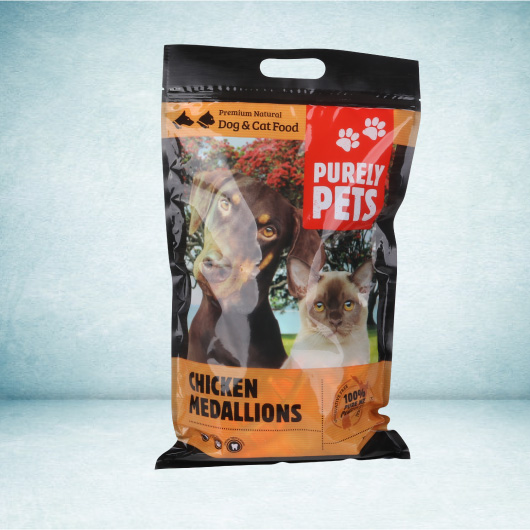
3. Natural fabric

If the item being sent is not fragile, it may not require much protection beyond the original packaging.
After all, most products end up in double or triple packaging when they reach consumers.
Instead, try wrapping the product in cotton or burlap to protect the original packaging from bumps and scratches.
When buying in bulk, this packaging option may be more cost-effective than the box and produce fewer toxins during the production process.
4. Paper or reusable envelopes.
Paper and cardboard are common packaging materials and can already be recycled.
However, suppliers often make boxes that are too large for internal products, thus wasting materials and space.
This kind of waste not only wastes materials, but also increases the cost of e-commerce business, and creates thinner and smaller packaging (such as envelopes) that fit more closely with the product to reduce shipping costs and wasted cardboard.
Even better, using reusable envelopes, customers can send the item back after receiving it.
5. Creative, reusable packaging
Instead of using materials that should be thrown away, it is better to design new uses for your packaging.
A box with cutting instructions can be turned into a dollhouse or a new cat’s nest.
A very durable container can be folded up and sent back to the retailer for reuse. A burlap bag can become a new reusable grocery tote bag.
With the right mindset, e-commerce companies have thousands of choices, hoping to rebrand in a more environmentally friendly way.
6. Food-grade paper box
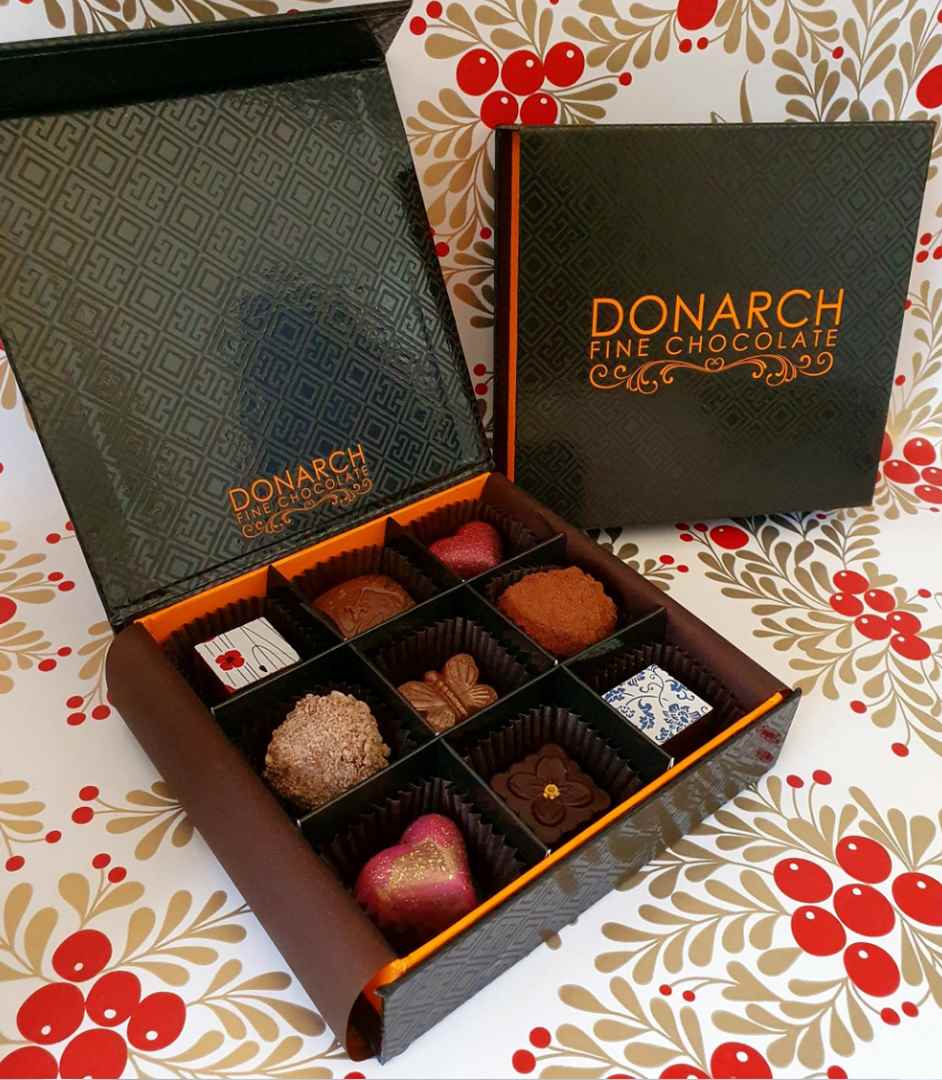
A food-grade paper box is an eco-friendly packaging option made from paperboard, which is a type of paper that is thicker and more durable than regular paper.
7. Pouch
A pouch is an eco-friendly packaging option made from flexible materials like paper, plastic, or a combination of both.
Pouches are commonly used for items like snacks, pet food, and personal care products.
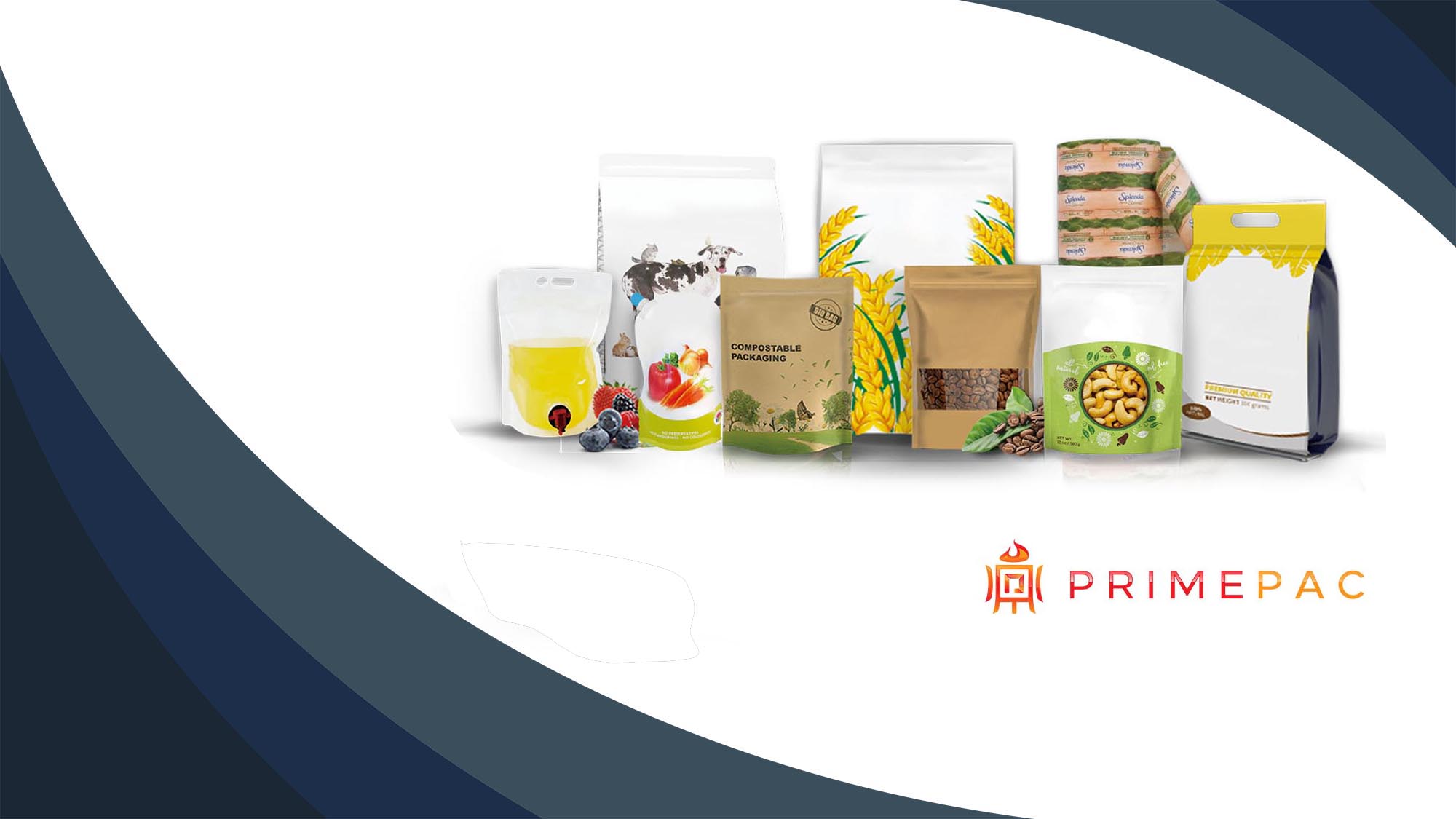
Where can I buy environmentally friendly packaging
Compared with the usual plastic and cardboard packaging, the procurement of sustainable packaging materials may be slightly more difficult. You may need to do some research to find a supplier that can design and build creative packaging materials that do not harm the environment.
In the United States, several start-up companies have emerged to meet this challenge. Limeloop is a green packaging startup that uses billboard vinyl and organic cotton to make strong, reusable packaging.
These packages are also connected to sensors that monitor your cargo and can send updates on the environmental impact of the packages to your smartphone.
The data package can be reused for up to ten years and is very simple to use; the company only needs to rent or purchase a “shipper” to send the item, and the customer sends the package back after receiving the product.
Limeloop’s European counterpart, Repack, uses sturdy yellow envelopes, which can also be returned to the company for reuse, reducing waste by up to 80%.
This option is cost-neutral for e-commerce businesses because it is a choice made by the customer at checkout, and the startup company bears the cost of returning the package to the sender.
Other companies focus on improving the materials that make up traditional packaging, creating innovative alternatives to styrofoam, plastic, and cardboard.
The Brazilian oil company Braskem has developed plastic packaging made of sugar cane instead of petroleum for use in shopping bags and flexible transport materials.
Another Brazilian company, Tatil Design, has won numerous awards for designing sustainable and environmentally friendly packaging alternatives by companies in dozens of industries.
In California, Cruz Foam developed an alternative to polystyrene foam made from shrimp shells.
Globally, from start-ups to enterprises, hundreds of companies have begun to feel ecological and commercial push to create more sustainable transportation packaging.
Even in China, the world’s largest e-commerce market, online retail giant Alibaba is promoting 100% recycling bins and electric transportation vehicles due to the large amount of waste generated by the e-commerce industry.
How Large and Small Scale Businesses can Use Eco-Friendly Packaging
Although green packaging is the current trend of market economy development, there are also different contingency methods for enterprises of different sizes.
Large and small-scale businesses may require different approaches to adopting eco-friendly packaging, mostly due to variables like cost, production volume, and the variety of products being shipped.
Large-Scale Businesses
For a company like Amazon or Alibaba, the difficulties of adopting sustainable packaging are two-fold. First, these sites are made up of thousands of suppliers that are scattered around the country (or the world), all of whom must comply with the same regulations.
Making a wholesale packaging switch might be a slow and painful process. Second, as these sites offer millions of products, they must be able to find a producer who can create packaging that is flexible to every item available on the site, and do so at scale.
However, the environmental impact of improving packaging for giant retailers is undeniable. These three e-commerce retailers alone probably dwarf all other businesses in their region in terms of packaging waste.
Therefore, a large business could streamline its transition to sustainable packaging by partnering with a factory or large corporation that uses green replacements for traditional materials. These producers will be able to adapt to the needs of a massive operation that ships out thousands, or even millions, of different products every day.
Small-Scale Businesses
A small e-commerce business might look like anything from an individual’s craft store – selling just a few items a month – to an independent bookstore that sells a few hundred products a month in eco-friendly packaging.
However, for the most part, smaller businesses will deal with a much less varied set of products, meaning they might be able to depend on a single packaging system.
Small e-commerce stores looking to implement green packaging would be a great fit for startups like Limeloop or Repack since they would be able the handle the reusable package turnover more easily.
While a reusable package model might require some upfront costs, depending on the provider, these options tend to be cost-neutral – or even more cost-effective – for small businesses in the long term. They also eliminate waste of all kinds, a goal which is next to impossible for any large company.
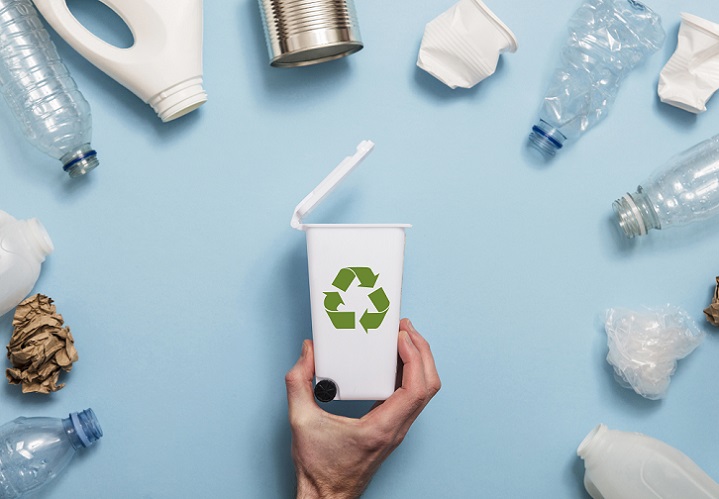
Conclusion:
To be eco-friendly, packaging can be biodegradable (but preferably compostable), recyclable, reusable, non-toxic, made from recycled products, based in biomass or natural products, or manufactured through low-impact means. Enterprises that choose eco-friendly packaging can more effectively save money from packaging costs, transportation, and distribution. At the same time, it can better establish a green and healthy brand concept and increase consumer attention and confidence. Increasing brand prestige and market share virtually.
Therefore, you may need to choose a reliable packaging supplier! PrimePac——can be your first choose!
About PrimePac
At PrimePac, we bring together design experts and brand innovators to create fresh ideas, customized packages, and fully efficient processes.
We design creative packaging solutions that cater to a diverse global audience with the in-house knowledge and network of experienced professionals to meet the demands of every type of client.
From our dedicated sales team and warehouse staff in Australia to the experts at our production facilities in China, all of our employees are guided by four core values at the heart of our business: integrity, innovation, passion, and engagement.


NETWORK
With our team in China and Australia working as one, we reduce inefficiency so that you deal with one streamlined team from manufacturing right to delivery.
Service support team located in Guangzhou, the manufacturing hub of China, providing rapid response, and local industry knowledge. Warehouse and 3PL net work located in Sydney, to provide rapid distribution, and delivery to your customers.

Truth about the vacuum packaging you may want to know !
Talk about vacuum bag packaging
Vacuum packing or vacuum packaging is a form of modified atmosphere packaging found around the world. Vacuum packing removes atmospheric oxygen from the primary package products are enclosed in. Oxygen is the primary source of product degradation. The removal of oxygen can often extensively help extend product life. Consumable and non-consumable products are protected by vacuum packing.
The basic form of vacuum packing removes oxygen from a vacuum bag and seals off the bag once a vacuum cycle is complete.
Vacuum packaging does have its problems. No one is perfect. Unfortunately, vacuum packaging is currently not as easy to recycle as other types of packaging.
That said, as the global population stabilizes but continues to grow, estimated to reach around 10 billion by 2050, we need to urgently address ways to provide those numbers. Ultimately, the amount of waste is unsustainable, and smarter, more efficient ways of packaging food will allow us to begin the fight against malnutrition and sustainability in the food industry.
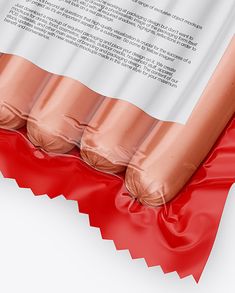
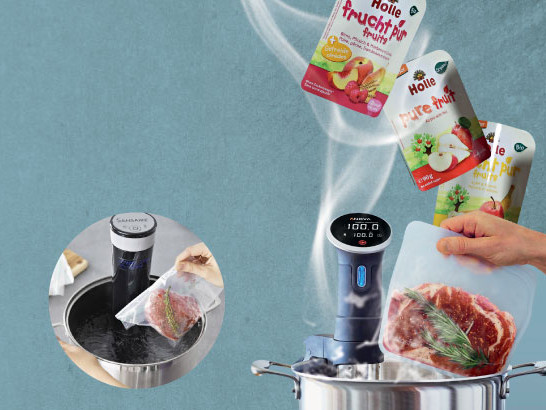
Though early experiments of modified atmosphere packaging have been traced back to the early 19th century, most accounts of vacuum packaging are not acknowledged until after World War II. In France before WW II, the air was removed from rubber latex bags, and the bags were sealed. This concept proved to increase the shelf life of frozen products.
The Cryovac vacuum packaging process created in the 50s to package whole turkeys was the first commercial use of vacuum packaging perishable items. Since the introduction of industrial vacuum packaging, many companies and individuals have contributed new methods, materials, and machines that have improved the quality of human life.
By the 70s, the idea of introducing an inert gas into vacuum packaging helped to increase the shelf life of perishable products dramatically. Since then, the advancements in vacuum packing efficiency and increased shelf life have made incredible advancements.
Now it’s seem you have a basic know of vacuum packaging, let’s see the types of vacuum bags packaging we commonly use in our life.
Types of vacuum bags packaging
1.Side seal bags
Side seal bags are ideal for storing in foods while retaining freshness and aroma, for maturing food products or attractively displaying them on the shelf. PrimePac produces the three-edged vacuum bags made of high-quality PA/PE barrier film in numerous formats. The PA (polyamide) provides an oxygen barrier and aroma protection, while PE (polyethylene) ensures a moisture barrier and optimal sealing properties.
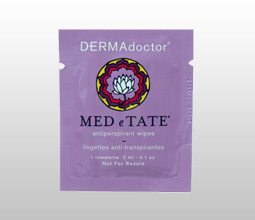
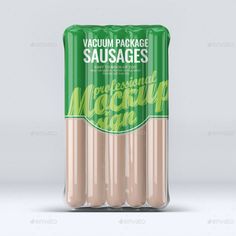
Types of vacuum bags packaging
2.Tubular bags
All products demand an impeccable appearance. We recommend tubular bags without side seams, which cling closely to the products, showing off their contours to their best advantage. These bag types are manufactured from high-quality PA/PE composite films which feature an excellent oxygen barrier, high transparency, and puncture resistance as well as outstanding sealing properties.
Types of vacuum bags packaging
3.Shrink bags
The ASB shrink bag (PVDC) or our ASBC shrink bags with EVOH barrier extend the shelf life of the products with an almost “invisible” packaging. The special film structure and selected high barrier materials ensure high puncture resistance, low air-penetration rates and long-lasting protection.
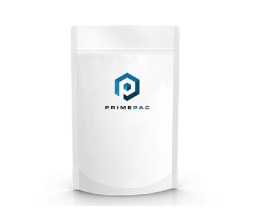

Types of vacuum bags packaging
4.Cook-in bags
They withstand any temperature without delamination, leaking, flex-cracking or streaking. The temperature resistance of -40°C to +121°C allows gentle cooking in the Sous-Vide process, making them a must-have in every canteen kitchen. Cook-in bags with a tolerance of up to 121°C can also be used for sterilisation.
VACUUM PACKAGING COMMONLY USED IN LIFE
OVER PURCHASES OR BUY-INS
Preserve quality and extend shelf life or stored raw foods-meats, dairy, vegetables, fruits.
OVER PRODUCTION
Preserve cooked food without exposure to air or dehydration.
MEATS
Portion and re-package for assured shelf life. Store (refrigerated or frozen) and preserve quality of prime items for future use.
SMOKED MEATS
Most smoked products contain a percentage of water.Vacuum Packaging prevents moisture evaporation (yield loss) plus provides an attractive temper resistant package.
VEGETABLES
Portion pack “in-season” product and refrigerate for later preparation. Re-package bulk quantities for menu rotation. Maintain salad freshness and crispness.
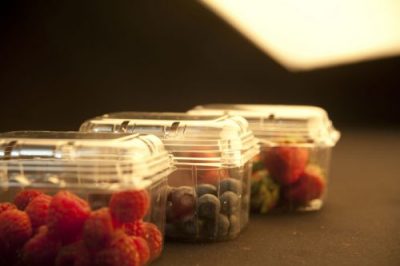
SANITATION
Prevents cross-contamination of flavours and aromas. It also prevents yield loss of products (i.e. blood, water).
CHEESE
Prevents drying, crumbling and mold of bulk and grated. Eliminates the labour cost of trimming and rewraps.
Typical shelf lives of vacuum packaged :
All vacuum packaged foods must be top quality, fresh and prepared in a sanitary method in order to reach optimum shelf life. In addition, shelf life can be affected by acidity, pH level, temperature and ingredients.
Some typical shelf lives of vacuum packaged refrigerated products, as compared to normal refrigeration, are:
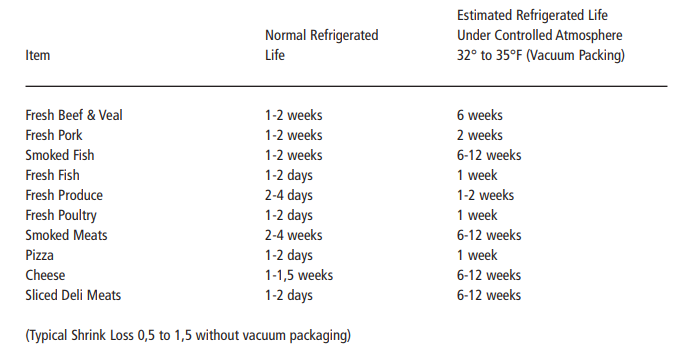
The above shelf lives may vary and can be affected by product freshness, acidity, pH level, temperature, ingredients, sanitation and laminates used in pouch construction.
Previously we mentioned the application of vacuum bags packaging in our daily life, you may confuse about why there is everywhere using vacuum bags packaging? What are some special advantages of Vacuum Packaging? Thus, we list several FAQs about vacuum packaging, also the advantage introduction about using vacuum bags packaging as well.
Let’s see!
Q: Do Vacuum Packaged products still need to be refrigerated?
A: Yes. Some organisms are resistant to high carbon dioxide levels. Their growth is slowed at lower temperatures
Q: What are some special advantages of Vacuum Packaging?
A: Only a sampling of the advantages include:
- Vacuum packaging reduces product shrinkage. There is no moisture loss or evaporation in sealed vacuum bag. Therefore, the weight you package will be the weight you sell.
- Vacuum packaging reduces trim losses by eliminating oxidation and freezer burn.
- Vacuum packaging can enhance product quality. Vacuum packaged meat held at 32° to 35°Fdoes not hinder “aging” or tenderising.
- Vacuum packaging allows more efficient use of time. Food can be prepared in advance without loss of freshness, so slack times are more productive and busy times are more manageable.
- Vacuum Packaging allows for money saving quantity buying. Products such as cheese, continental small goods, fish, bacon, coffee and nuts, processed meats and many other food items may be bought in bulk at a lower price and then pre-packaged by either a central warehouse or in each supermarket or restaurant outlet.

8 Vacuum Packaging Benefits You Should Know !
- Increased Shelf Life – Studies have shown that vacuum packaging can increase product shelf life from 50%-400%. Vacuum Packaged SalmonThe key to increasing product shelf life is determining the ideal atmosphere within the packaging for the product being packaged. This could be the introduction of inert gas or the reduction of oxygen to ideal levels. Vacuum packaging is also and preferred form of packaging for many products going into long term freezer storage. The proper vacuum bags can dramatically reduce freezer burn. It is a chosen form of packaging for meat storage around the world.
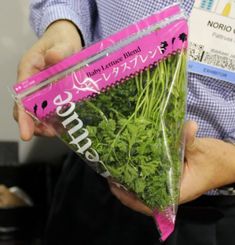
- Reduced Product Loss – Increased shelf life directly affects the reduction in product loss for companies inventorying products. The reduced product loss helps to increase bottom lines.
- Sealed Barrier From External Elements – The most common vacuum bag thickness is a 3 mil thickness with some Vacuum Packaged Dried Fruit bags up to a 6-8 mil thickness. With the proper seal, vacuum packaging can protect products from dust, moisture, insects, and a variety of other external elements that may harm or damage products. Vacuum packaging is also an excellent barrier of protection against freezer burn during long term freezer storage.
- Seals in Flavors – Wet aging meats is a popular form of curing meat before preparing it. This often uses natural juices from the meat with spices and flavours vacuum sealed to lock in flavours during the curing process.
- No Chemical Preservatives Required – Vacuum packaging eliminates the need for chemical preservatives. With the right mixture of oxygen to inert gas, products can last longer without the use of commonly used preservatives. The earth’s atmosphere is made up of 78% nitrogen which is the most commonly used inert gas for vacuum packaging.

- Improved Product Presentation – Most vacuum bags are crystal clear allowing products within the packaging to be displayed on shelves. Vacuum packaging is an affordable packaging solution the enables products to be shelf-ready Vacuum Packaged Dried Tomatoes with the application of a custom printed sticker.
- Multiple Packaging Options – Vacuum sealing materials come with multiple packaging options. Users can buy rolls of film or bags to seal products. Bags can be found with reclosable zippers, easy-open tear notches, foil-lined, channeled, and with a variety of other options to choose from.
- Quick and Efficient Packaging – With the proper machines and materials, vacuum sealing can be a very efficient process enabling hundreds or thousands of products to be sealed per hour.
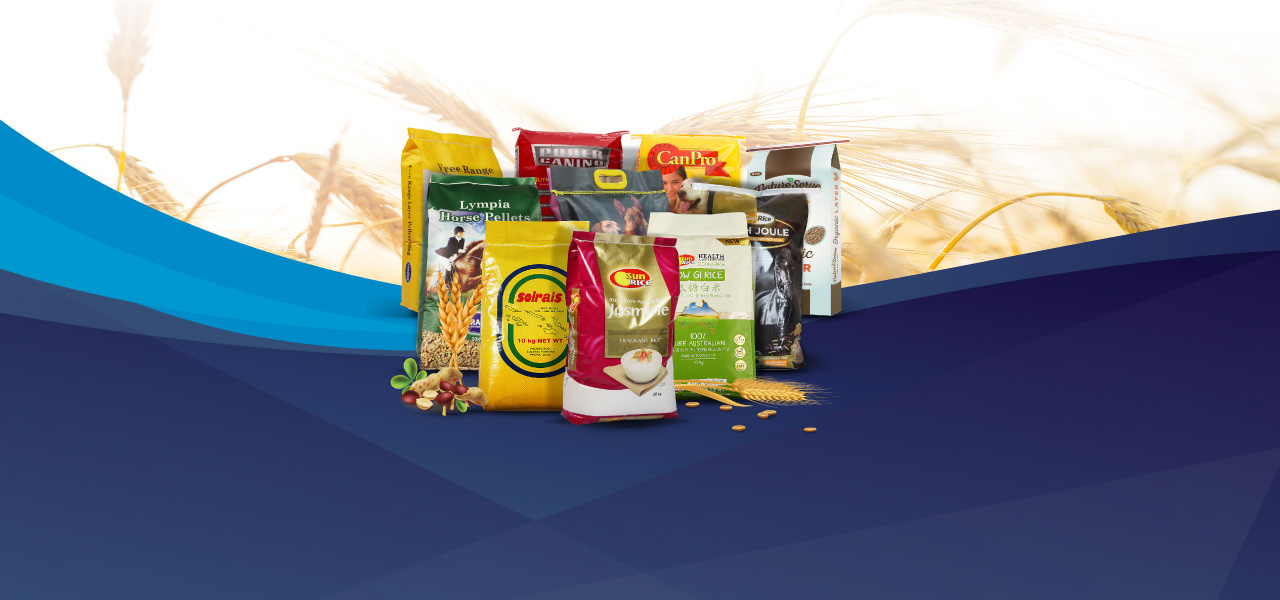
Conclusion:
Now, we see the vacuum packaging not only provides a clean and hygienic packaging method for food, but also do help to saves the space. It is an indispensable packaging for the industry!
Therefore, choosing the right packaging method can improve the effectively of the product. Similarly, choosing a reliable packaging manufacturers is also an important thing!
About PeimePac
At PrimePac, we bring together design experts and brand innovators to create fresh ideas, customized packages, and fully efficient processes.
We design creative packaging solutions that cater to a diverse global audience with the in-house knowledge and network of experienced professionals to meet the demands of every type of client.
From our dedicated sales team and warehouse staff in Australia to the experts at our production facilities in China, all of our employees are guided by four core values at the heart of our business: integrity, innovation, passion, and engagement.
Network
With our team in China and Australia working as one, we reduce inefficiency so that you deal with one streamlined team from manufacturing right to delivery.
Service support team located in Guangzhou, the manufacturing hub of China, providing rapid response, and local industry knowledge. Warehouse and 3PL net work located in Sydney, to provide rapid distribution, and delivery to your customers.

Food Packaging - Your 2023 Complete Guide
Food packaging is an integral part of food commodities. One of the major projects in the food industry process. It protects food and prevents the damage of biological, chemical, and physical external factors during the circulation of food from the factory to the hands of consumers. It also has the function of maintaining the stable quality of the food itself, and it is convenient for food consumption. It is the first to express the appearance of food and attract consumers. It has value beyond material costs. Therefore, the food packaging process is also an integral part of the food manufacturing system engineering.
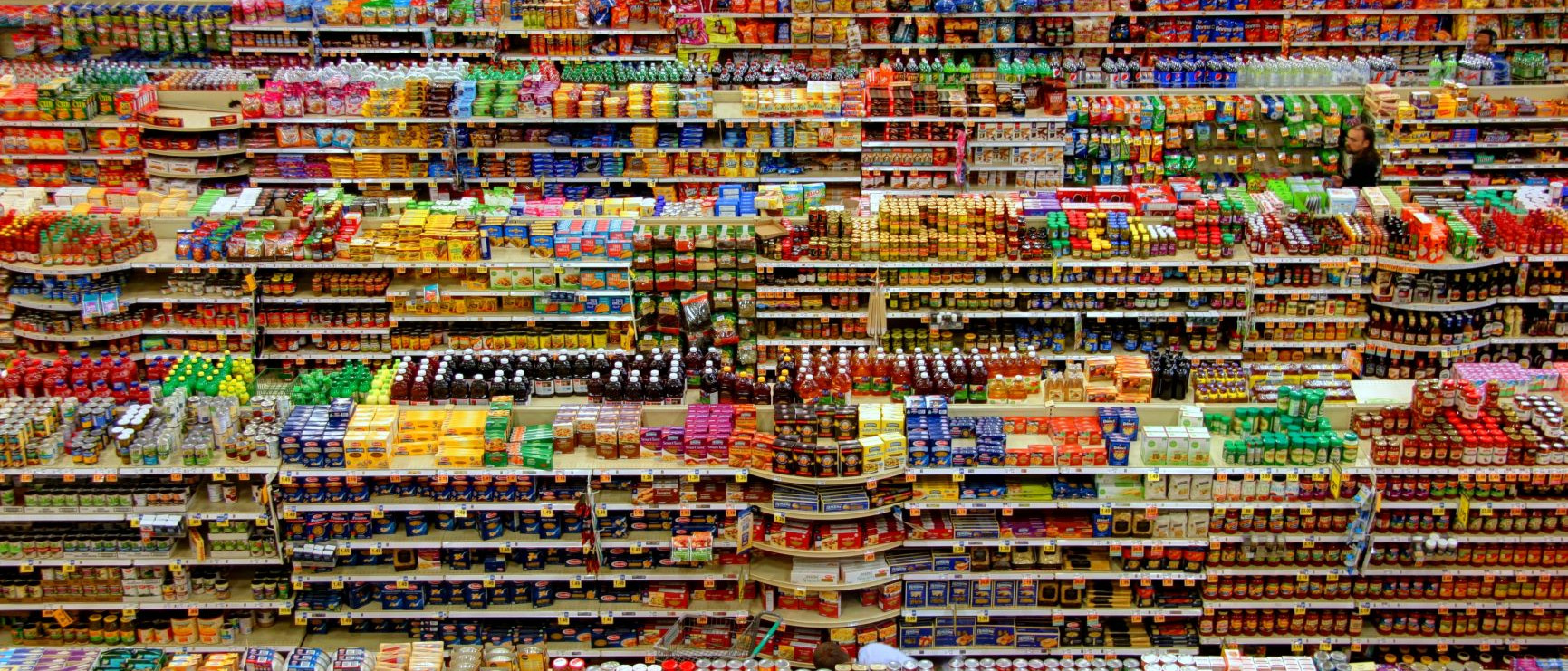
Food packaging plays an important role in the industry, also it’s an indispensable presence in our life. Nowadays, more and more consumers choose green products. Thus, is undoubtedly an industry innovation for food packaging. From production standards to use standards, manufacturers have begun to focus on the development direction of eco-friendly protection and recycling technological innovation.
Let’s see the development of food packaging and the subsequent market situation! In order to boost your business, here are some key points you have to know about the food packaging industry!
Food packaging situation right now:
For some types of food packaging, the food contact material determines the name. A plastic bottle is made of plastic and has this material type in direct contact with the foodstuff. For glass jars, the materials in contact with the foodstuff are glass and coated metal from the closure.
In the case of beverage cartons, the direct food contact layer is not a carton, but laminated plastic. For aluminum cans, a coating is in direct contact with the beverage. Some types of paper can also be coated (for example with a grease-proof coating).
What are the requirements of food packaging in Australia?
If you're a food business, it's important to know what types of packaging are safe to use with your food products.
Under Standard 3.2.2 – Food Safety Practices and General Requirements, food businesses must:
- Only use packaging material that is fit for its intended purpose.
- Only use a material that is not likely to cause food contamination.
- Ensure there is no likelihood that the food may become contaminated during the packaging process.
Access the Food Packaging Infobite as a PDF here:
All Types of Food Packaging Material
Food packaging is widely used in our life. You may also know a lot about the materials and types of food packaging.
Food packaging material is an essential component of the food industry, as it helps to preserve and transport food items.
Packaging materials are available in a variety of materials such as metals, paper, and polymers. Each material has its own unique properties which make them suitable for different types of food products.
The use of packaging materials dates back to the early 19th century when glass jars were used to preserve food items.
Since then, advances in technology have enabled manufacturers to produce packaging materials with improved strength, durability, cost-effectiveness, and lless health risks.
Today’s packaging materials include everything from paper cartons and plastic wraps to aluminum cans and polyethylene bags.
Each material has its own unique properties which makes them suitable for different types of food products.
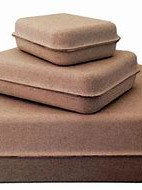
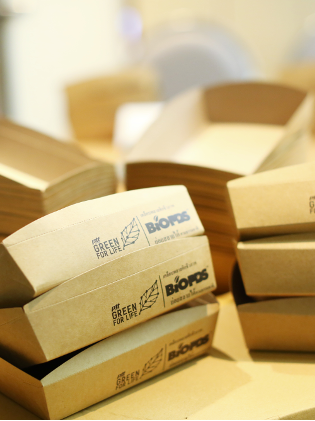
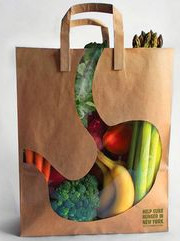
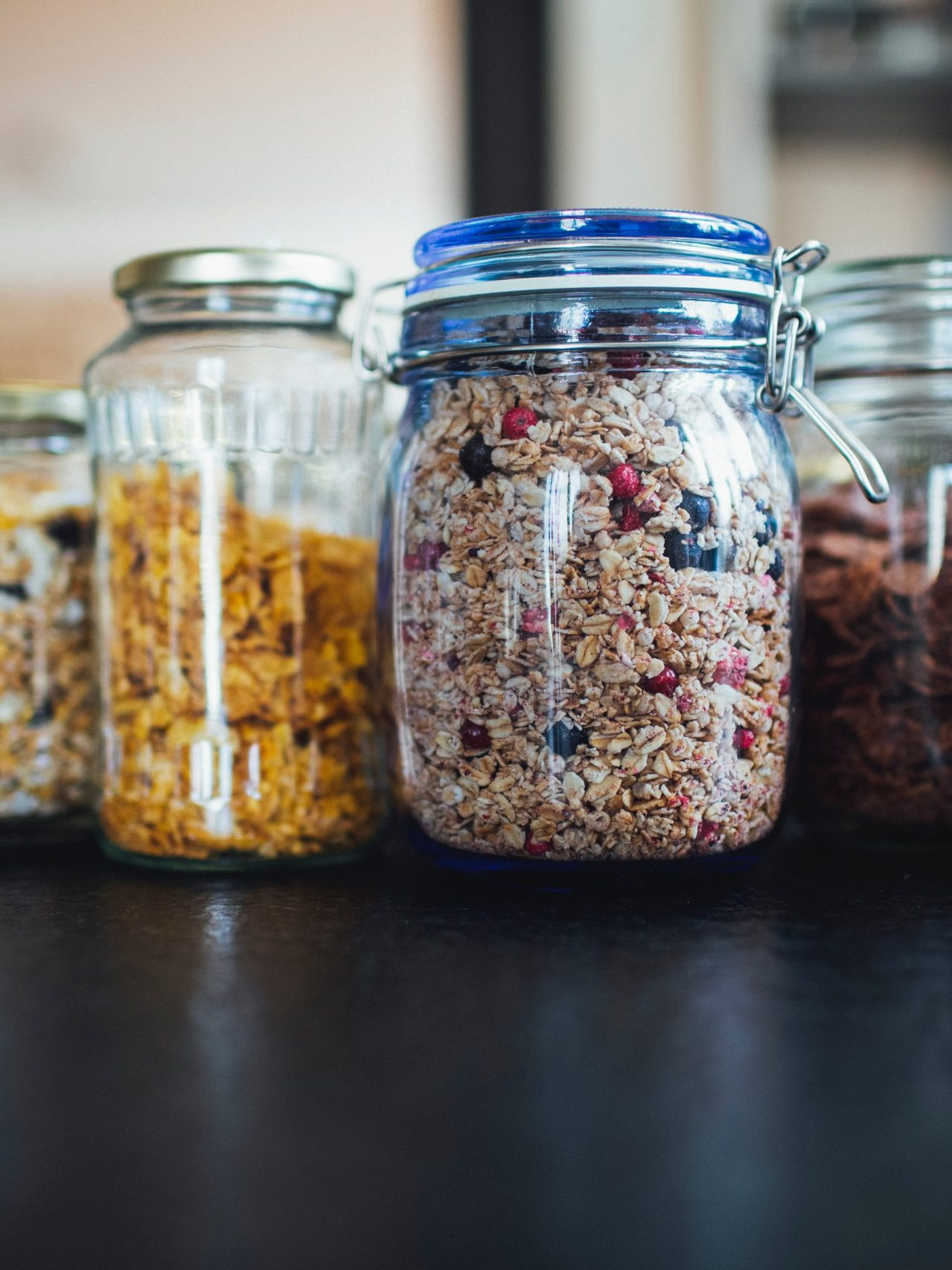
Cardboard, and papers:
Paper And Cardboard
Paper And Cardboard are other types of food packaging material. It is derived from renewable resources, has a low carbon footprint, and is biodegradable. Paper and board are versatile in terms of design and cost-effectiveness.
The advantages of using paper and board for food packaging include:
* Environmental benefits:
* Renewable resource
* Low carbon footprint
* Biodegradable
* Versatility:
* Wide range of designs available
* Cost-effective compared to other materials
* Safety:
* Non-toxic if disposed of properly
Paper and board are also relatively lightweight which makes them easy to transport and store.
Furthermore, depending on the type of paper or board chosen, it can be printed with various colors or designs that can make the product more appealing to potential customers.
In addition, some types of paper are treated with wax or plastic so they become moisture proof which is beneficial for wrapping foods that need to stay dry such as crackers.
However, there are some drawbacks when using paper and board for food packaging.
For example, they cannot be used in hot filling applications because they will not maintain their structure or shape when exposed to high temperatures.
Also, they may not provide enough protection against oxygen or moisture which can cause food spoilage over time.
Additionally, paper products can absorb grease or oils which could cause problems during the packaging process if not managed correctly.
Overall, paper and board offer many benefits for food packaging due to their environmental friendliness, versatility in design options, safety features, lightweight characteristics, and cost-effectiveness;
Wood
Wood is a traditional packaging material that provides a natural, sustainable, and biodegradable option.
It is strong, yet lightweight and can offer superior protection from environmental elements such as temperature and moisture.
In addition, wood has the ability to absorb odors, making it suitable for food packaging applications.
Wood can be easily manipulated into various shapes and sizes through cutting or shaping processes.
For example, wooden boxes can be made to fit any product size requirements and their walls can be customized with additional padding if needed.
Furthermore, wood may also be used in combination with other materials such as plastics or metal fastenings to create multi-layered packages.
Due to its strength and durability, wood is an ideal choice for long-term storage of goods.
Its natural characteristics also make it aesthetically appealing which is an advantage when creating attractive packaging designs.
Additionally, wooden packaging can help reduce distribution costs by providing reliable protection during the transportation process.
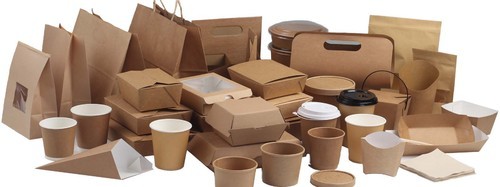
Plastics
Plastics are organic polymeric materials that can be molded into the desired shape. The lightness and versatility of these have been confirmed over decades in the processing and packaging of food. Plastic containers and packaging protect against the contamination of food and offer adequate mechanical strength.
Due to a lower cost and lower energy consumption during manufacturing, plastics have replaced traditional packaging materials. In addition, they are able to preserve and protect the food for longer, minimizing the use of preservatives.
In relation to the consumer, they are easy to handle and open and offer an effective surface for printing labels or brands. However, although plastics are recyclable materials, they are pollutants.
In the plastic manufacturing process, there are many varieties of plastic resins, with the most used being:
Polyvinyl chloride (PVC): very resistant to humidity, fats and gases
Polyethylene and its varieties (PET, HDPE, LDPE). The development of the PET range has revolutionized the packaging industry, allowing plastic to compete directly with glass bottles.
Polystyrene (PS) is the plastic of choice for thermoforming due to its strength, malleability and low cost.
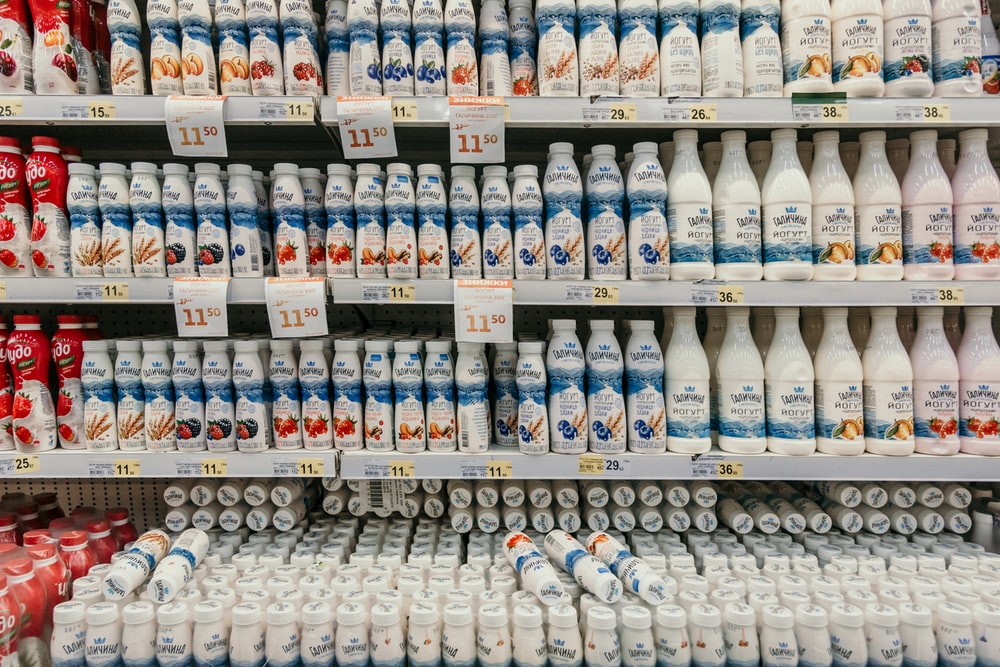
Metals (steel, tin, aluminum)
Metals are one of the most commonly used materials for food packaging.
They offer a number of advantages such as strength, durability, and chemical resistance.
Metals are also recyclable and can be easily reused after they are emptied.
Additionally, metals provide excellent barrier properties to protect the contents inside from oxygen, light, and moisture.
Commonly used metals for food packaging include tin-plated steel, aluminum foil, and foil laminates.
Tin-plated steel is a popular choice for cans and trays due to its strength and low cost.
It provides good protection against oxygen but requires an additional barrier layer to keep out moisture.
Aluminum foil is lightweight and provides excellent barrier properties against both oxygen and moisture while still being malleable enough to form various shapes.
Foil laminate materials combine aluminum foil with paper or plastic films for added protection against light or humidity.
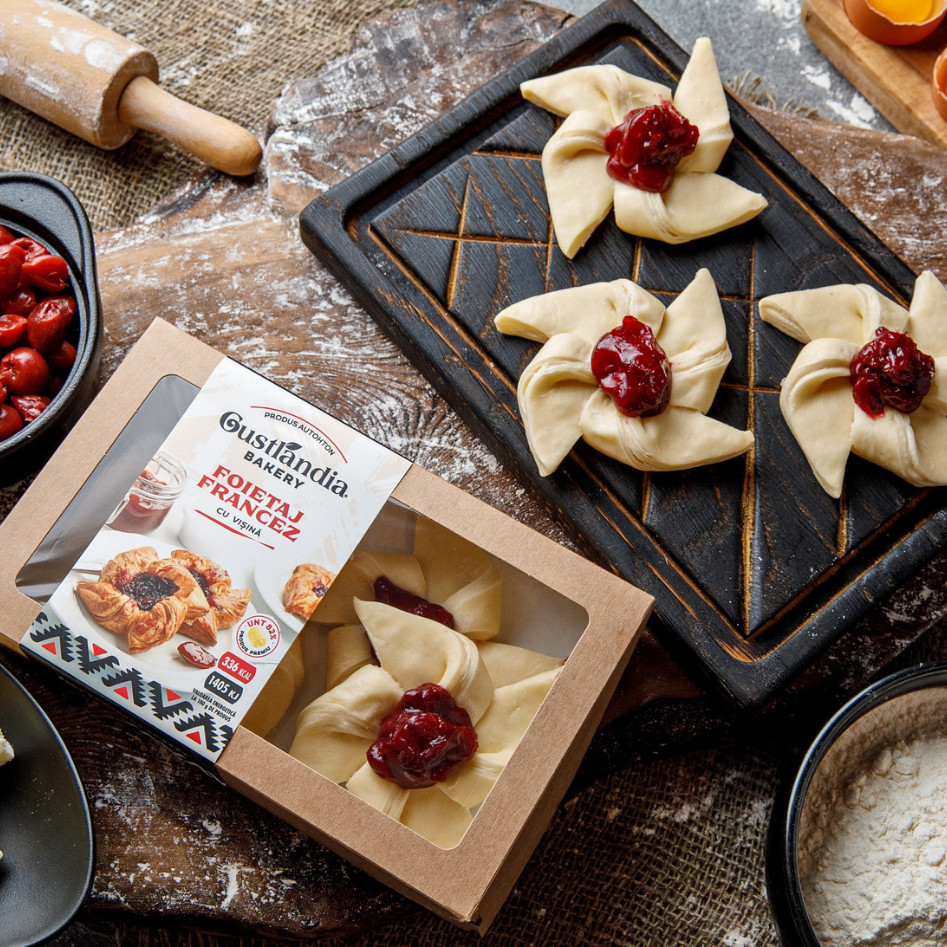
The main use of these metals is the preservation of canned foods and beverages. The most commonly used are tin-coated steel and aluminum cans. It is an opaque material that provides an advantage for food that is sensitive to light.
Tin cans are made of steel sheets coated with tin as a measure of protection against corrosion of steel.
Aluminum is increasingly used for canning due to its lightness, low cost and capacity to be recycled. It can be found in packaging, bottle closures, and wraps, and laminates. It has the same barrier properties as steel but with the advantage of being resistant to corrosion.
Aluminum foil is formed by layers of laminated aluminum. It is a highly flexible product that allows to preservation or protect food in the domestic environment. However, it is difficult to use in modern fast packaging equipment due to wrinkles, rips, and marks.
Thin-walled aluminum cans are suitable for carbonated beverages, while wide-walled cans are suitable for steam sterilization. Optionally, internal lacquers can be used to avoid interaction with the product and externally to protect the ink from the labeling.
Glass
Glass is a popular packaging material for food items due to its longevity and unique aesthetic qualities.
It is strong, heat-resistant, and non-porous, which makes it suitable for storing various types of food products.
Additionally, glass containers provide an excellent barrier against oxygen, moisture, and light.
This ensures that food remains fresh for longer periods of time without compromising taste or nutritional value.
Furthermore, glass packaging is easy to clean and sterilize, making it ideal for use in a variety of settings including commercial kitchens and restaurants.
Glass food containers are also recyclable and reusable.
Consumers can use them again to store other items or return them to the manufacturer or local recycling center where they can be broken down into raw materials such as sand and recycled into new products.
Recycling glass reduces waste and conserves natural resources while still providing consumers with durable packages that preserve their food quality over time.
The benefits of glass packaging make it a logical choice for many food manufacturers looking to give customers safe, long-lasting products at an affordable price.
Its visually appealing qualities further add to its appeal as a practical material in the food industry
Glass containers can be bottles (the most used), jars, glasses, ampoules, jars, etc. However, this material is not used for frozen products due to the risk of breakage.
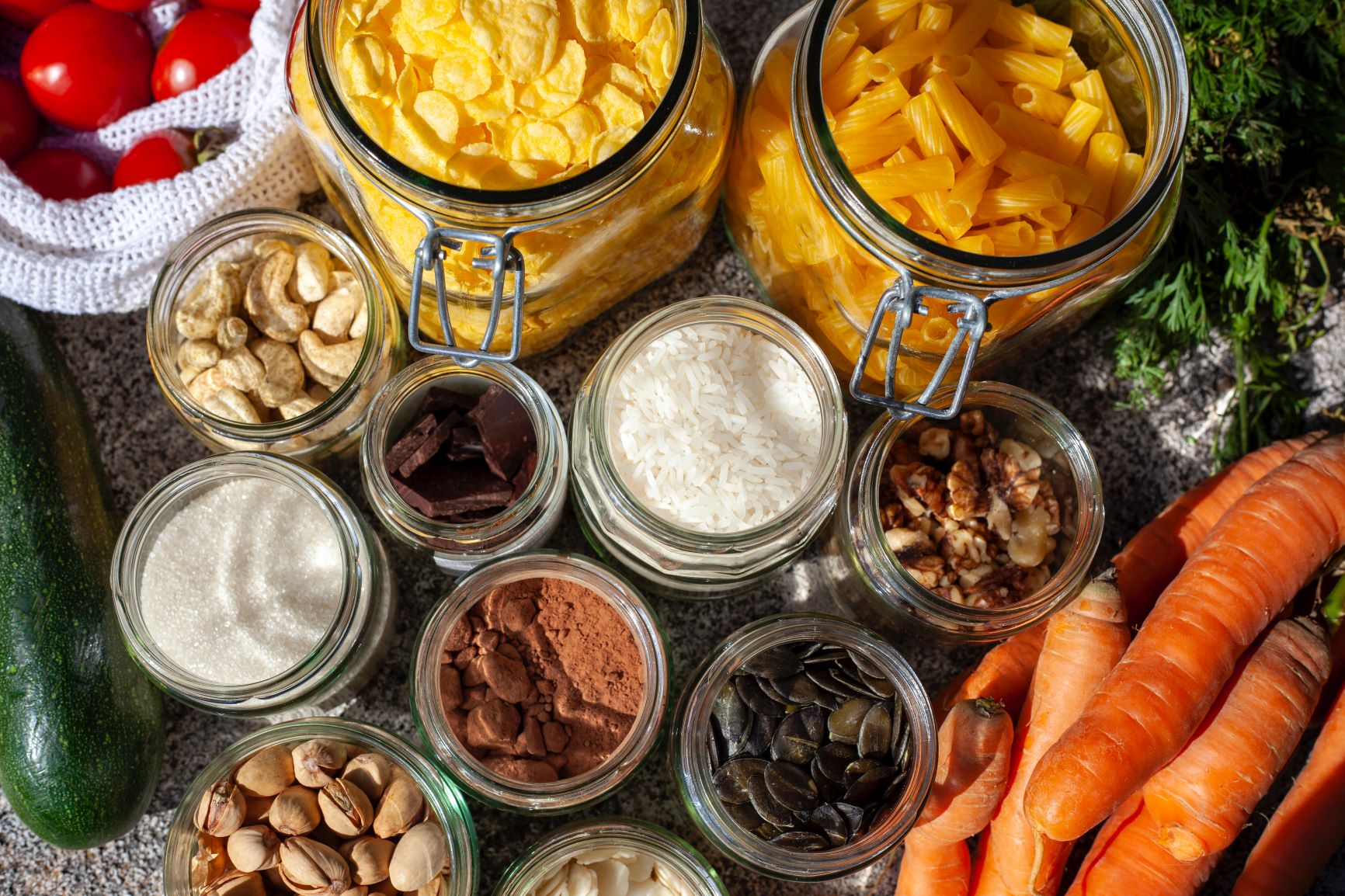
Ceramic
Ceramics are an important material used in food packaging.
They are a type of non-metallic inorganic compound, made up of metallic and non-metallic elements.
Ceramics have been around since Ancient times, and have been used to package food for centuries.
Characterized by their low thermal conductivity, high hardness, and chemical inertness, ceramics are highly resistant to heat and pressure. Moreover, they offer good physical strength and protection for the food product being packaged.
Foods that need to be kept at cold temperatures require special ceramic packaging materials due to their low thermal conductivity.
Examples of such foods include milk products, ice cream, frozen fruits, vegetables, and juices.
Ceramic packages also provide extra insulation from air and moisture which can cause spoilage or contamination of the food product inside.
Additionally, the use of specialized coatings on the outside surface of ceramic packages can help protect against microbial growth or leaching out of toxic substances from the package into the food product.
Due to their properties, ceramics are ideal materials for food packaging as they are able to provide a safe environment for storing and transporting foods while keeping them free from contaminants or spoilage agents.
As a result, they are often used in combination with other materials such as glass or plastic to create multi-layered packaging solutions that offer optimal protection for various types of foods.
Printing Inks
Printing inks are a key component in food packaging materials, providing the visual information that allows consumers to identify, select, and purchase products.
Inks can be formulated with a variety of components depending on their intended application.
The following table describes the three most common types of printing ink used in food packaging:
- Solvent-Based
Made from petroleum oil-based solvents, these inks have good adhesion to nonporous surfaces such as plastic or metal
Labels and graphics on PET containers, shrink sleeves
- Water-Based
Comprised of water-soluble resins, these inks are easy to clean up and eco-friendly Cartons and boxes for dry goods such as cereals, and snacks
- UV Curable
This type of ink cures instantly under ultraviolet light, forming an impermeable layer that resists abrasion and chemicals
Direct food contact labels for frozen products
In addition to providing product identification information, printing inks may also add functional properties to food packaging materials.
For example, metallic or fluorescent colors can be used for tamper evidence applications. In order to meet regulatory requirements for direct contact with food items, printing inks must also be certified as food safe.
Therefore it is important to consider the type of ink required when selecting a suitable material for a specific application.
Wax
Wax is an organic compound with a long history of use for preserving and coating foods.
It has a number of advantages over other materials, including its low cost, ease of application, and ability to repel moisture.
Wax also provides an effective barrier against oxygen and other gases that can cause spoilage.
The two most common types of wax used in food packaging are paraffin and beeswax.
Paraffin is derived from petroleum and is more affordable than beeswax, but it does not offer the same level of protection against moisture or gases.
Beeswax is made by bees and has been used for centuries to preserve food; it offers superior protection against moisture and gases but is more expensive than paraffin.
Wax-coated paper and cardboard are widely used for products such as cereal boxes, cracker boxes, snack bags, and candy wrappers.
The wax helps prevent water from seeping through the paper or cardboard, which can cause staining or discoloration over time.
As such, wax-coated paper and cardboard are ideal materials for food packaging that needs to be stored at room temperature or in humid conditions.
Moving on from wax, the next material to discuss when it comes to food packaging is wood.
Types of food packaging:
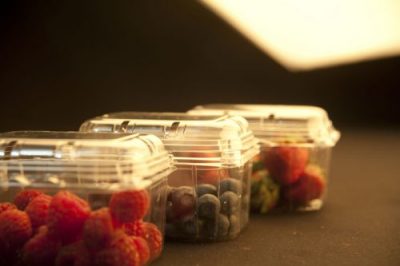
Types of food packaging:
TRAYS AND PUNNETS
Relatively shallow containers that may have a lid. They are used as food containers. There are plastic trays of all kinds: those used as a primary food-contact packaging, such as foamed, transparent, high-barrier, peelable, and reclosable trays, and those used as secondary packages, which are normally thermoformed for containing other food packages.
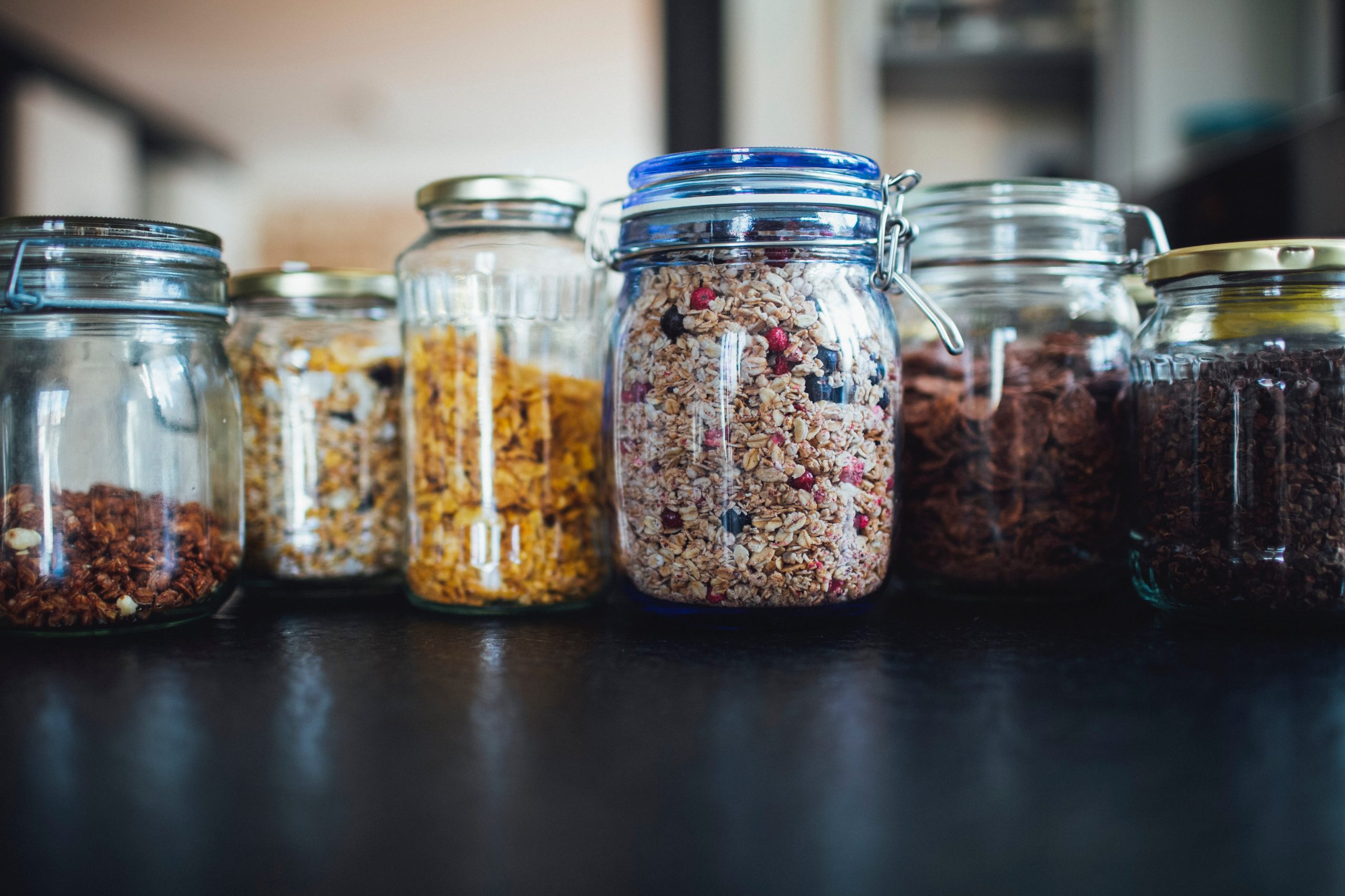
Types of food packaging:
JARS
Rigid containers consisting of a round neck with a diameter similar to that of the body diameter and with a relatively large opening capable of supporting a lid to keep the product inside. The section of the body is usually round or square
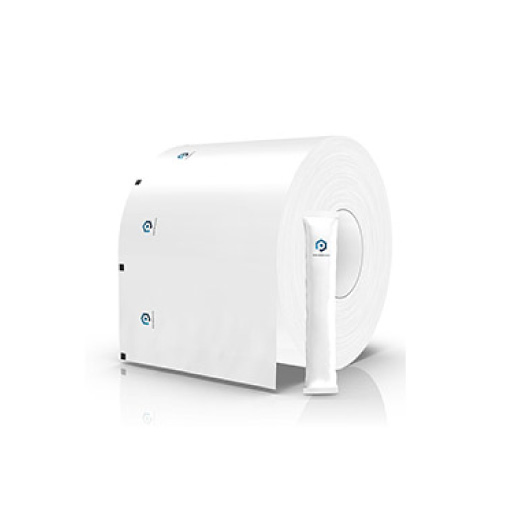
Types of food packaging:
FILM
A continuous and thin layer of plastic material with a small thickness. When the thickness is higher than approximately 250 microns, we do not consider it a film, but a sheet.
Bags
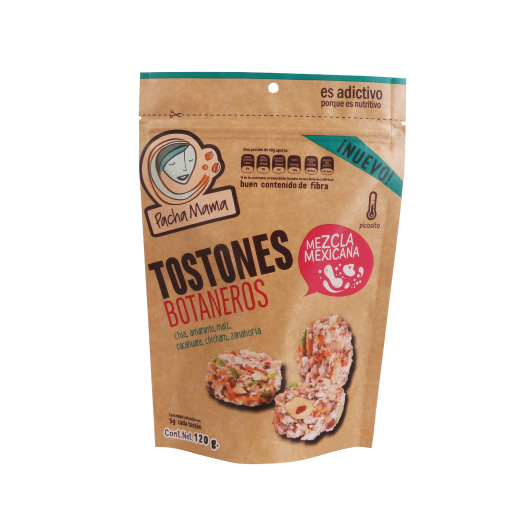
Bags offer a number of benefits for both retailers and consumers.
They are lightweight, relatively inexpensive, and easy to store compared to other forms of packaging.
Furthermore, they can be made with a variety of materials, such as plastic films or multi-layer films which provide additional protection against oxygen or moisture ingress.
The perforation and reliability features further enhance their utility, making them convenient for customers who wish to consume only part of a package at one time without having to repackage the remaining product or worry about spoilage due to exposure.
In addition, bags can also be custom printed with brand logos or product information that help attract attention on store shelves and create stronger brand recognition among customers.
Finally, they can also be produced in various sizes which makes them suitable for different markets by allowing producers to customize their packaging based on customer needs and preferences.
With these features considered, bags remain one of the most attractive forms of food packaging available today.
Box
Boxes are used to package a wide range of foods and food items.
They are generally made from cardboard but can also be produced from plastic or fiberboard.
Boxes come in various sizes and shapes, with the most common being rectangular or square.
Depending on its contents, a box may have one or more compartments either inside or outside of it.
Some boxes are designed to be opened and closed multiple times while others are meant to be single-use only.
The primary benefit of using boxes for food packaging is that they provide a secure method of protecting the product without adding too much weight or bulkiness.
This is especially important when it comes to products that are fragile or require extra care during shipping.
Additionally, boxes can be printed with logos and other marketing materials which can help increase brand awareness and recognition when selling online.
Finally, they offer an economical option for businesses looking to reduce their packaging costs while still providing a safe and secure solution for their products.
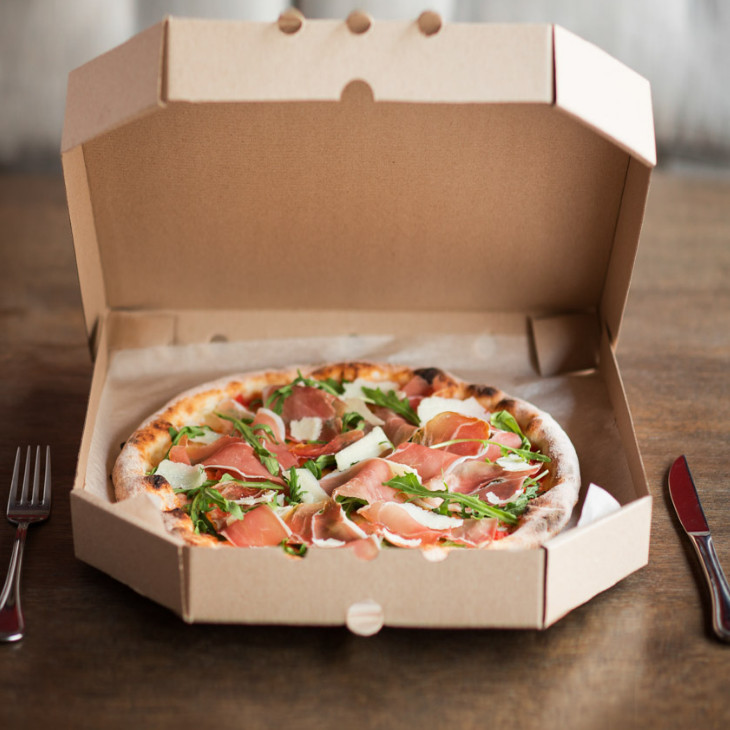
Cans
Cans are one of the most common types of food packaging.
They are made from thin sheets of metal that have been rolled into a cylinder shape and then sealed at either end with an airtight lid.
Can offer a number of advantages over other forms of packaging:
* Cost-effective: Cans are relatively inexpensive to manufacture and can be used to package a wide variety of products.
* Convenient: Cans are easy to store and transport, as well as being lightweight and stackable.
* Durable: Cans are strong and durable, making them ideal for long-term storage and shipping.
Can provide an effective barrier against oxygen, light, and moisture which helps maintain the quality, freshness, and safety of the food.
The interior is often lined with a protective coating to prevent corrosion or contamination from the metal container itself.
As such, cans are well suited for preserving foods with extended shelf lives.
Can also come in a variety of sizes, shapes, colors, and materials which can help distinguish one product from another on store shelves. This makes them an attractive choice for marketing purposes as well as packaging.
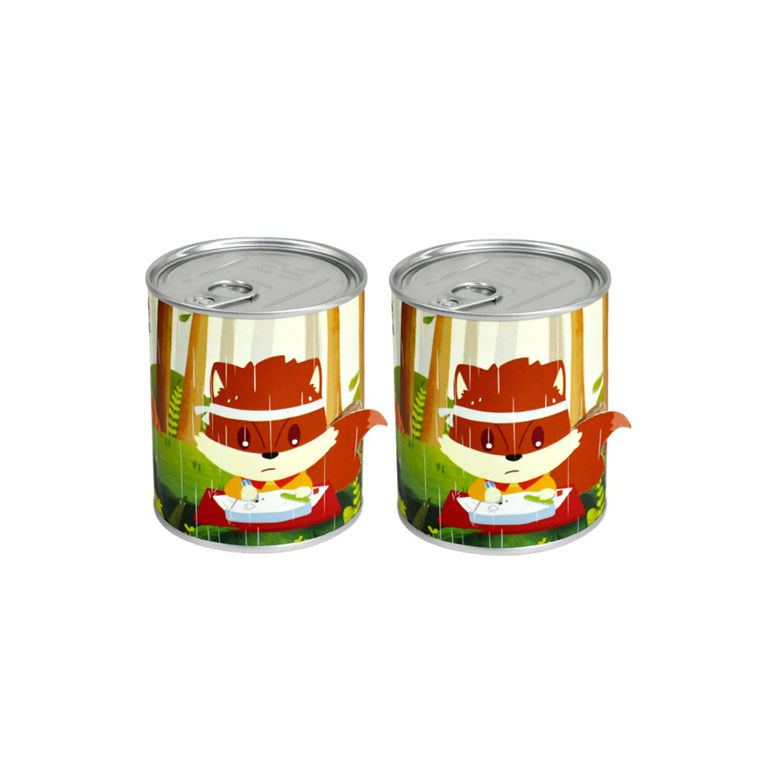
Flexible Packaging
Flexible packaging offers numerous advantages over cartons and other types of food packaging
Flexible packaging is usually made from materials such as plastic, metalized film, or paper-based structures with a plastic or wax barrier.
It can be used for a variety of items such as snacks, cereals, and even liquid products like milk and juice.
The main advantage of flexible packaging is that it takes up less space than traditional rigid containers making it easier to store and ship.
Additionally, it weighs less than cartons which further reduces shipping costs.
Flexible packaging also offers a number of other benefits including improved product visibility, longer shelf life due to better barrier properties against oxygen, moisture, and light, affordability compared to other forms of food packaging, and excellent printability for branding purposes.
Furthermore, it is more environmentally friendly since it uses significantly less energy in production than traditional rigid containers.
The ease of use associated with flexible packages makes them ideal for a wide range of applications ranging from retail to food service operations.
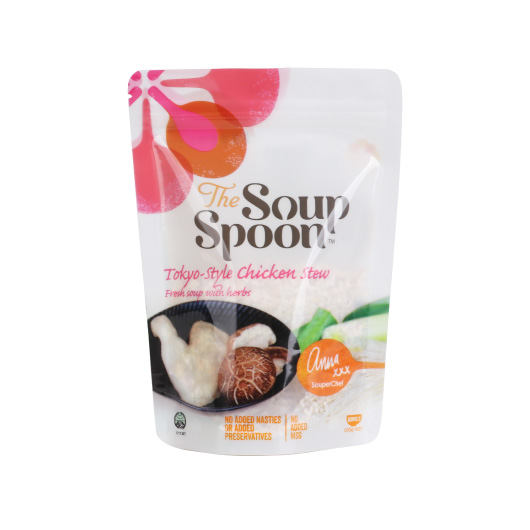
Inspiration packaging design in life
When you go to the supermarket, the most attractive product on the shelves is the packaging. Therefore, the unique packaging design is important. Here, we have collected a lot of special food packaging design for you, which one can inspire you?
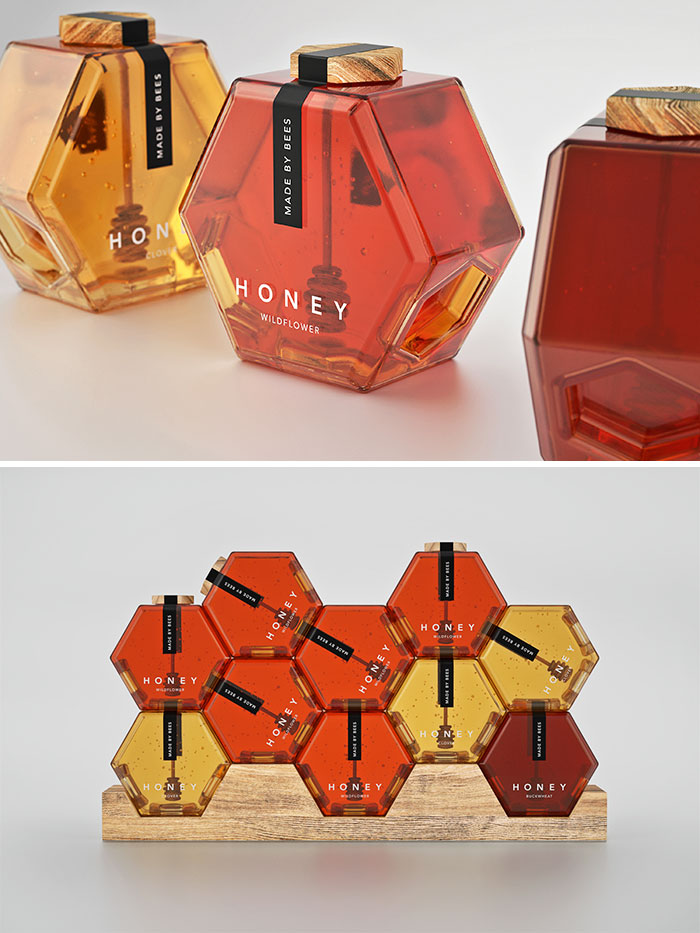
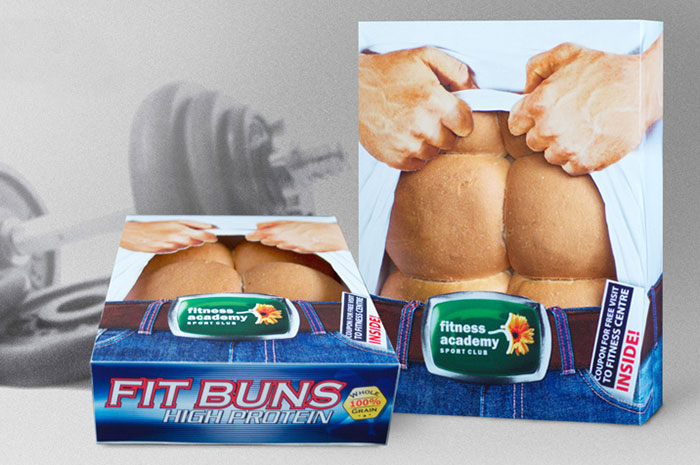
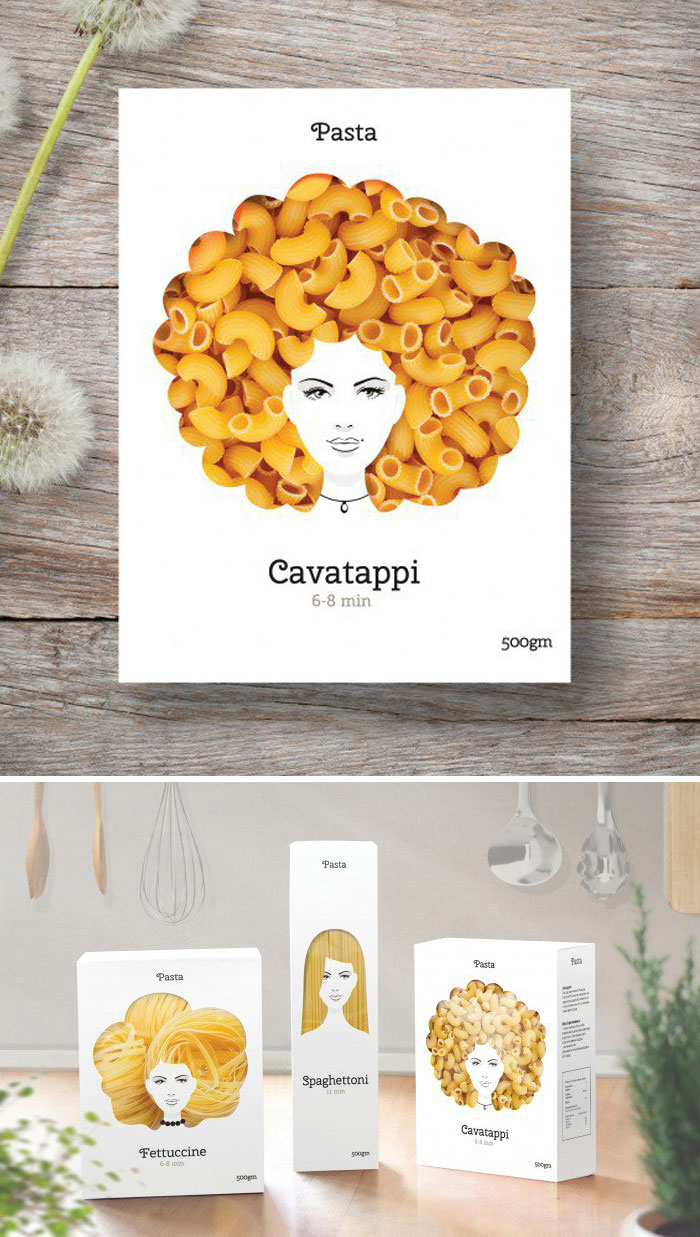
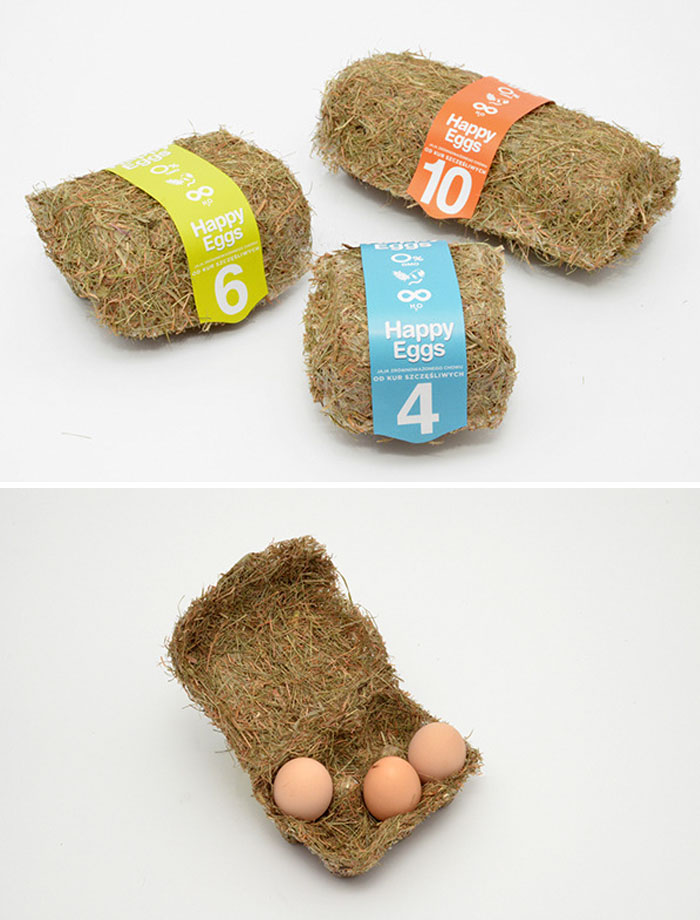
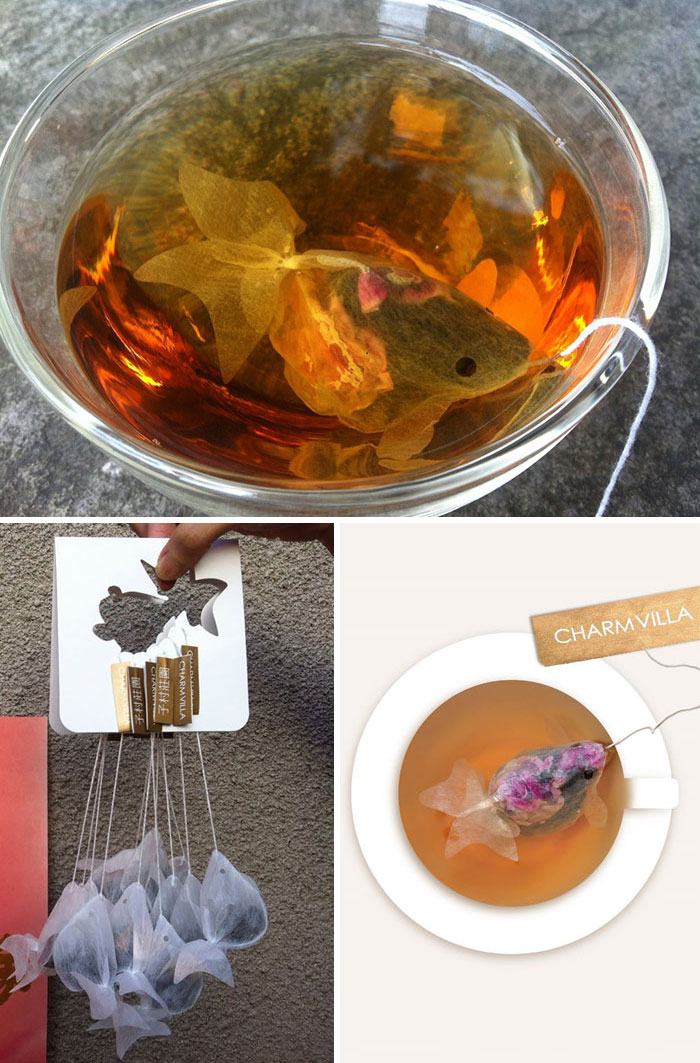
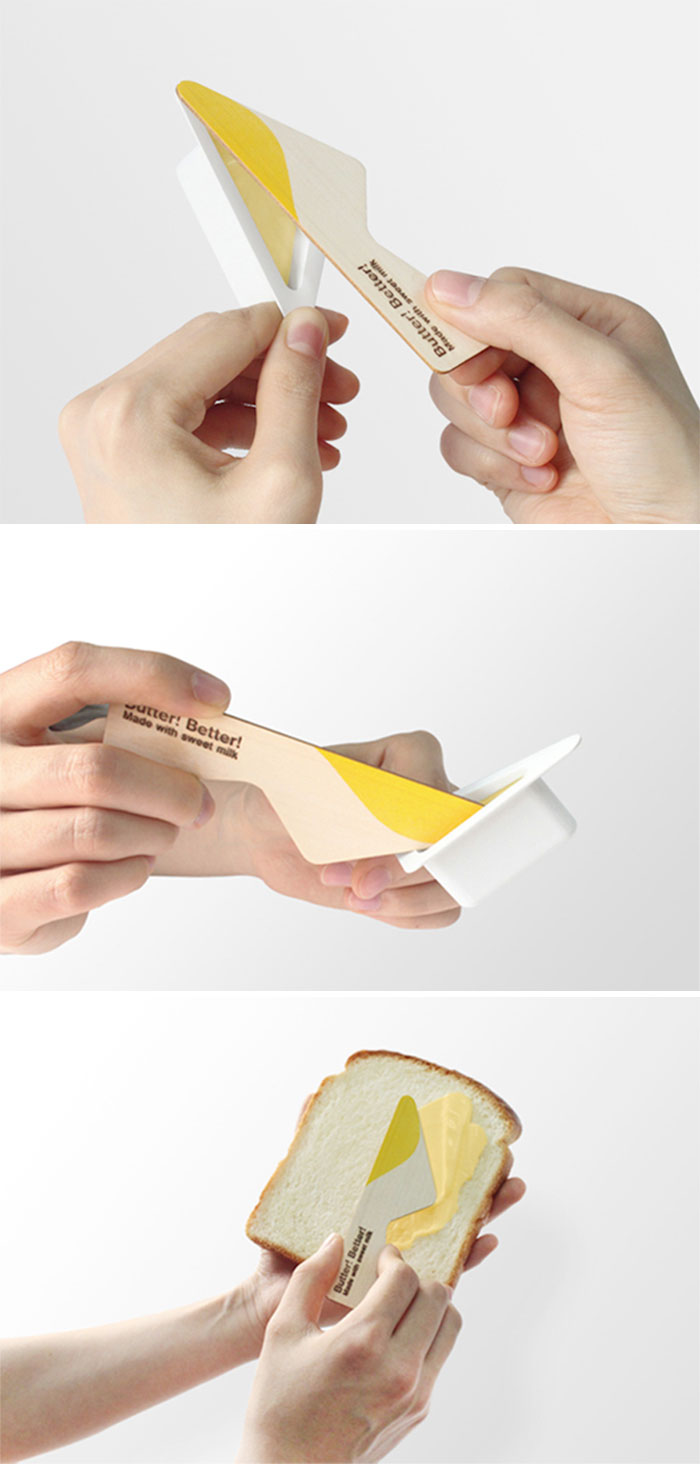
With the increasing awareness of environmental protection, three major points of recyclable, degradable and recyclable will become the development trend of the packaging industry. So what is the green development prospect of food packaging?
Three Sustainability Trends Reshaping the Food Packaging Industry
Corporate leaders are embracing sustainable food and beverage packaging
A key food packaging trend in 2018 has been toward recycled and recyclable materials, partly in response to stunning media reports of waste plastic, notably the Great Pacific Garbage Patch (three times the size of France).
Beyond plastics, leading beverage and restaurant brands have answered the call and announced major sustainability-oriented commitments in 2018. The trend-setters include:
Coca Cola stated that by 2030 it will collect and recycle one bottle or can for each one it sells; and
McDonald’s announced a commitment to have 100% of its guest packaging made from renewable, recycled or certified sources by 2025.
These actions have pleased everyday consumers as well as committed environmentalists, and will have trickle-down effects, encouraging other companies to follow.
Governments are not only banning plastic, but mandating recycling and reusable materials
In Australia, national, state and territory environment ministers have agreed on an admirable target: 100% of Australian packaging is to be recyclable, compostable or reusable by 2025. This is only a few short years away, and a major opportunity for the food packaging industry.
The worldwide trend is clear on the legislative front: Less in the way of plastics and single use materials, more in the way of recycling and sustainable food packaging.
Innovative and sustainable food packaging is creating new solutions
Innovative recycled and recyclable food packaging materials are emerging as sustainable alternatives to plastics, Styrofoam and other environmentally-unfriendly materials. Such as Kraft paper packaging and pp woven bags currently used in the market.

Benefits of food packaging
In previous chapters the reasons why used food packaging has been described in detail. Here we have summarise several key poins of the benefits of food packaging! These benefits include:
– improved protection for the food and an increased shelf-life,
– better quality products reaching the consumer,
– more attractive products to compete with other manufacturers,
– easily identifiable products for consumers to select from retail shops,
– sometimes re-usable containers,
– tamperproof packages reduce the risk of adulteration,
– making foods more easily handled and stored by retailers and consumers,
– increased production output as a longer shelf-life enables a larger market to be found and year-round production possible.
What Is The Most Cost-Effective Type Of Food Packaging?
The most cost-effective type of food packaging is an important consideration for businesses seeking to reduce their overhead.
Packaging materials can represent a significant portion of the total costs associated with a product, so understanding the various options and their associated expenses is key to making the best decision.
In this article, we will discuss some of the most cost-effective types of food packaging available today.
1. Cardboard
Cardboard is one of the most affordable and versatile materials used in food packaging today.
It can be easily printed with a variety of branding and labeling options, and it is also lightweight and durable. Furthermore, cardboard is recyclable, which helps reduce waste and contributes to sustainability efforts.
2. Plastic
Plastic is another popular material used for food packaging due to its affordability and versatility.
It can come in a variety of forms such as pouches, trays, and tubs that provide protection for products during shipping or storage.
Additionally, plastic can be manufactured into containers with different shapes that conform to specific product requirements for presentation purposes.
3. Glass
Glass is also an effective material for food packaging because it does not contain any chemicals that could leach into food products or affect their flavor or texture negatively.
Plus, glass containers are easily recycled if they are disposed of properly and safely collected from landfills or other sources.
4. Aluminum: Aluminum provides an excellent barrier against moisture, oxygen, light, and odors while still being lightweight and relatively inexpensive compared to other materials like glass or plastic.
Aluminum containers are reusable after being washed thoroughly with warm water and soap making them both economical and sustainable options for many businesses today.
In addition to these four primary types of materials used in food packaging today, there are also other more specialized mediums such as biodegradable plastics that may be suitable depending on individual needs or preferences.
Ultimately though when selecting a material for food packaging it’s important to consider all factors including budget constraints as well as environmental impact before making a final decision in order to ensure the most cost-effective solution possible without sacrificing quality or safety standards.
What Types Of Food Packaging Are Best For Preserving Food?
Food packaging is an important consideration for those looking to preserve the freshness of their food.
It helps to protect food from spoilage, contamination, and other external influences that can damage it over time. In order to best preserve food, it is important to consider which types of food packaging are most suitable for the particular type of food being stored.
Various materials are used in the production of food packaging, each with its own set of properties that make it well-suited for various applications. Common materials used in food packaging include plastics, paper and cardboard, metals, glass, and biodegradable substances.
Depending on the desired length of preservation and other considerations such as price-point or environmental impact, one material may be more suitable than another.
For example, plastic is a popular choice due to its low cost and durability. However, plastic containers can leach chemicals into foods over time or even become brittle if mishandled or exposed to extreme temperatures which could lead to spoilage.
Paper and cardboard are lightweight and easy to recycle but may not provide adequate protection from moisture or oxygen which could lead to mold growth or oxidation of compounds in the food product.
Metals offer excellent protection but require specialized equipment for sealing and do not offer any insulation from temperature variations.
Glass offers good heat resistance but can be fragile if mishandled, making it difficult to transport without risk of breakage.
Biodegradable materials offer an environmentally-friendly option but may not provide adequate protection from external factors such as humidity or sunlight which could degrade the food product over time.
Considering these factors when selecting a type of food packaging can help ensure that the desired level of preservation is achieved while also accounting for cost-effectiveness and sustainability concerns as needed.
By taking into account all relevant variables when making this decision consumers can ensure they have chosen a packaging solution that will effectively preserve their desired food product while also being safe and responsible with regard to environmental impacts associated with its use.
Conclusion:
Consumers everywhere are increasingly looking at companies and brands to take the lead on environmental issues. And, as outlined above, the broad legislative trend toward bans and restrictions on unsustainable materials is encouraging the adoption of sustainable materials and practices.
For the food, beverage and restaurant industries, environmentally-friendly post-consumer recycled products can reduce environmental impact and contribute to the development of a truly sustainable economy, aligned trends.
Why choose PrimePac ?
At PrimePac, we bring together design experts and brand innovators to create fresh ideas, customized packages, and fully efficient processes.
We design creative packaging solutions that cater to a diverse global audience with the in-house knowledge and network of experienced professionals to meet the demands of every type of client.
From our dedicated sales team and warehouse staff in Australia to the experts at our production facilities in China, all of our employees are guided by four core values at the heart of our business: integrity, innovation, passion, and engagement.

5 Types Of Stand up Pouch Packaging And Their Advantage
What is stand-up pouches packaging ?
Stand up pouch packaging are the most popular packaging form used across various industries. This flexible packaging type offers multiple benefits to the companies and the users also. They are cost-effective compared to traditional rigid packaging.
The popularity of a stand-up pouch derives from its durability, cost-effectiveness, and convenience compared to other forms of packaging. I
t is lightweight and compact, which makes it easy to store and transport without taking up too much space.
Additionally, it is highly customizable and can be designed with various features such as zippers and spouts to facilitate opening and resealing the package.
Furthermore, the stand-up pouch provides an effective barrier against moisture and oxygen which helps ensure the product’s freshness during storage or transit.
It also offers superior printability compared to other types of packaging materials which allows businesses to create eye-catching designs that help build their brand recognition in the market.

Packaging makes the world go round! Well, the world of food and consumer products, anyway. Think that’s an exaggeration? Imagine today’s grocery/retail store aisle without effective product packaging, Exactly. Products not packaged appropriately are not likely to do well and customer satisfaction will be largely nonexistent.
Given the development of new packaging materials, manufacturers and distributors are presented with a seemingly endless variety of primary packaging choices: boxes, cartons, displays, bottles, composite cans, and flexible packaging to name a few. With all of these options, one stands out and is uniformly effective in protecting contents and convenient to the consumer, that is stand-up pouches!
Stand-up pouches in our life :
The stand-up pouches are being application in most of the industries. They are ideal for packaging food items. They are used for packaging across many industries like medical and pharmaceuticals, industrial items, gardening products, etc.
These pouches offer many benefits over the traditional packaging form. The current article details some of the most popular and widely used stand-up pouches in the flexible packaging industry.
Popular stand-up pouches types in life :
Flat Bottom Stand up Pouches
The flat bottom stand-up pouches are becoming increasingly used in the packaging industry. When filled, these pouches stand on their flat bottom on the shelves and attract the customer’s attention.
They also take less space on the shelves and thus more products can be displayed compared to other packaging types. One of the biggest advantages of using these bags is that they take lesser raw materials to manufacture (12% less film) and store more quantity.
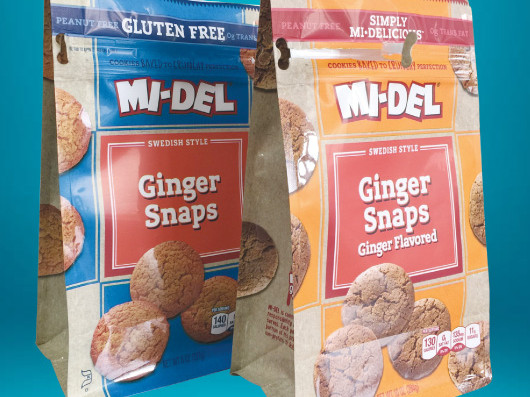
Benefits:
For sure, it takes less energy to manufacture them and they weigh less as well, both of which reduce the manufacturing cost. The flat bottom stand-up pouches eliminate the need to use cartons for outer packaging of the product.
Benefits
It can be elegantly displayed on the shelves and are easily stackable which catches the customer’s attention. These bags come with a tearing zipper which makes it very convenient to open the bags.
Eco-Friendly
The flat bottom bag is also eco-friendly, as it uses less material to manufacture and stores a greater quantity of products. This reduces the carbon footprint of these bags.
Popular stand-up pouches types in life
Flat Bottom Bag with Tearing Zipper
The flat bottom bag with tearing zipper is ideal for packaging food products. It has a flat bottom and is stable.
Popular stand-up pouches types in life
Stand-up Bag
More brands are moving from the rigid packaging towards flexible packaging and stand-up bags are one of the most common flexible packaging options.
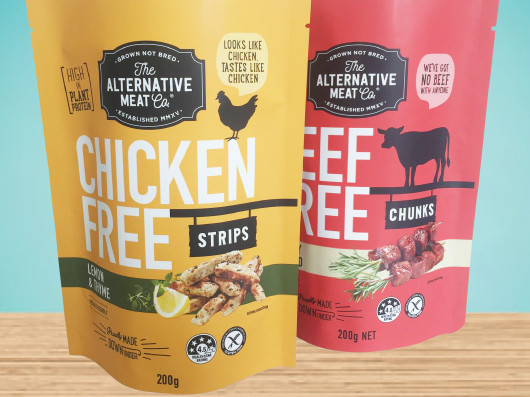
Benefits
These bags offer the most versatile and excellent printed graphics on the bag which will catch the attention of potential customers. They can be produced in a number of shapes and sizes which adds to their convenience.
The stand-up bags also provide an excellent moisture barrier and protection against other elements which keep the product safe for longer.
The stand-up packaging bags are inevitable when the objective is a cost reduction on the packaging. Rigid packaging costs at least 3-6 times more than the flexible packaging.
Benefits
The customers can open the packaging by sliding the zipper which is very convenient for them. the stand-up zipper bags are retail-ready.
The stand-up zipper bags are also an excellent packaging option for protecting the packaged products. They provide a high degree of protection from UV light, oxygen, moisture, etc.
thereby helping to keep the packaged products safe and fresh.
Cost-Effectiveness
They also ensure that no secondary outer packaging is required. This helps to save considerable costs on the packaging. These zipper bags also take the lesser volume in transportation and helps to save costs on transit and distribution.
Popular stand-up pouches types in life
Stand-up Zipper Bag
The stand-up zipper bags are one of the most prevalent forms of flexible packaging which comes with a zipper for easy opening and resealing of the package.
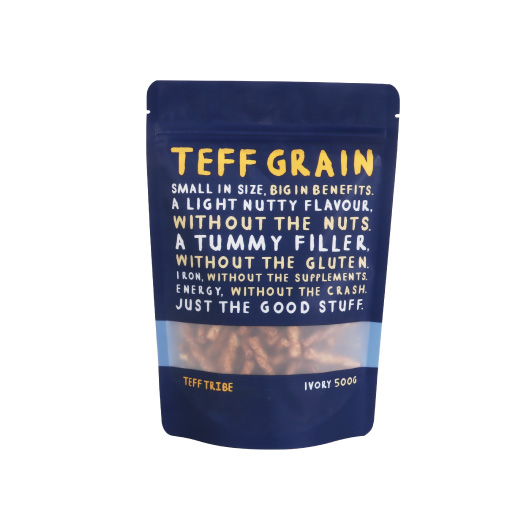
Stand up pouches with spout
A stand-up pouch with a spout is a specialized form of the traditional stand-up pouch.
It is typically made of a laminated film that combines multiple layers to form a durable and flexible barrier, allowing products to be safely stored while remaining visible and accessible.
The spout can be incorporated into the design of the bag, or it can be attached externally. Spouts come in many shapes, sizes, and colors and can be used for liquid or dry goods.
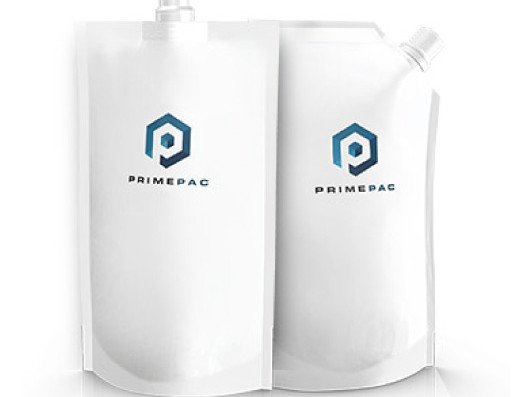
Benefits
They are also mostly used in the personal hygiene industry for packaging products like shampoo, liquid soaps, etc. These spout bags are convenient to carry around while traveling.
The primary benefit of using a stand-up pouch with a spout is its ability to reduce product leakage, thanks to its unique design features.
It also provides consumers with an easy way to access the contents without having to open the entire bag. Additionally, as the name implies, this type of packaging allows products to stand upright on store shelves and counters without taking up much space.
This improves visibility and allows brands to effectively market their products.
Stand-up pouches with spouts are widely used for food applications such as soups, condiments, and beverages but are also suitable for non-food items like laundry detergents and automotive chemicals.
The combination of convenience, portability, and visibility makes them an ideal packaging solution for a wide range of products.
Other Types of Pouch for Reference
Pillow Pouches
Pillow pouches, also known as flat pouches, are a type of flexible packaging that lays flat when empty and can be filled with a variety of products. Pillow pouches are a popular packaging choice for food, pharmaceuticals, and other consumer goods.
Pillow pouches are usually made from a single layer of material, such as polyethylene, polypropylene, or polyester.
They can be printed with high-quality graphics and customized to meet specific packaging requirements, such as resealable closures or tear notches.
Compared to gusseted pouches, pillow pouches have a simpler design and are often used for products that don’t require as much structure or stability.
However, they can still be used for packaging products like snacks, candy, and small items like hardware or craft supplies.
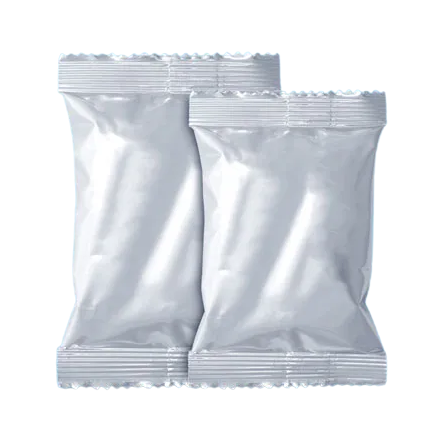
3 Side Seal Pouches
3 Side Seal Pouches are a type of flexible packaging that is formed by sealing three sides of a flat film or laminate, leaving one side open for filling.
The open side can then be sealed using heat, pressure, or adhesive to create a complete seal.
3 Side Seal Pouches are often used for packaging products like food, pharmaceuticals, cosmetics, and other consumer goods.
They come in various sizes and shapes and can be made from a range of materials depending on the product being packaged and the required barrier properties.
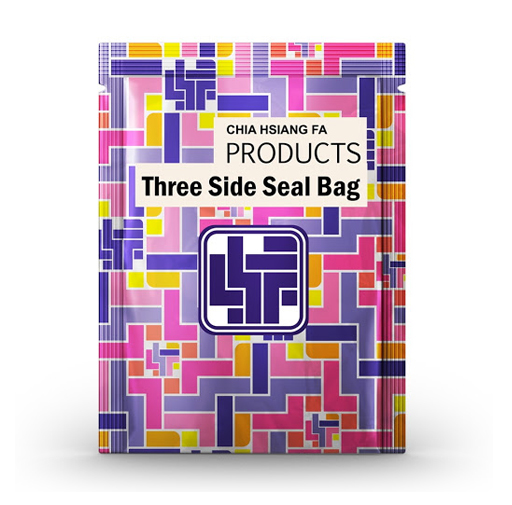
Benefits of 3 Side Seal Pouches
- Cost-effective
3 Side Seal Pouches are often less expensive than other types of packaging, making them a cost-effective option for small businesses and startups.
- Customization
3 Side Seal Pouches can be customized with a variety of features, including resealable closures, tear notches, and hang holes.
- Branding
3 Side Seal Pouches can be printed with high-quality graphics, making them a great option for branding and product promotion.
- Barrier properties
3 Side Seal Pouches can be made from a range of materials that provide various barrier properties, protecting the contents from moisture, oxygen, light, and other environmental factors.
- Convenience
3 Side Seal Pouches are easy to use and store, and can be designed with easy-opening features like tear notches or peel-off labels.
- Sustainability
3 Side Seal Pouches can be made from recyclable or biodegradable materials, reducing the environmental impact of packaging.
Material of Pouch Packaging
Moving on from the discussion of types of pouches, this section will focus on pouch materials.
While plastic and paper are the two most common pouch materials, there are also stand-up pouches that are made from other materials such as aluminum, glass, and even fabric.
Each material has its own advantages and disadvantages depending on the product’s intended use.
Plastic is used for lightweight products such as food or beverage packaging because it is water-resistant and cost-efficient.
Additionally, it can be printed with eye-catching designs to attract customers.
However, due to its low barrier properties, it may not be suitable for products that require protection from moisture or oxygen.
Aluminum has a high barrier property which makes it a good choice for products that need to be preserved for long periods of time.
It is also resistant to punctures and offers good shelf appeal. But it is heavier than plastic which could increase shipping costs and limit the amount of product that can fit in a package.
Overall, each material has its own pros and cons when it comes to stand-up pouch packaging.
Careful consideration must be taken when selecting an appropriate material based on the product’s needs and requirements.
Are There Any Health Or Safety Concerns Associated With Pouch materials?
To address this, it is important to consider the material used in their manufacture and how they are used.
The most common material used in the production of stand-up pouches is plastic, which is known to be a potential source of hazardous chemicals leaching into food and beverages.
This can happen when hot foods or liquids are placed in containers made of plastic, as the heat tends to cause more chemicals to leach out of the container and into the product inside.
Therefore, it is important for consumers to make sure that any stand-up pouch they use does not contain toxic materials like phthalates or BPA.
In addition to considering what materials stand-up pouches are made from, it is also important to take into account how they are being used.
If a consumer is heating food or liquids in one of these containers, then it is important that they do not put them in the microwave or oven since this could lead to further leaching of chemicals into the products inside.
Furthermore, consumers should not wash these containers with abrasive cleaners or place them in dishwashers since this can also cause additional damage and leaching of chemicals.
To ensure safety when using a stand-up pouch, consumers should only use ones made from non-toxic materials and take care when heating contents inside them.
Additionally, they should avoid washing the pouch with harsh cleaners and refrain from putting them in dishwashers as well as microwaves or ovens.
Taking these precautions can help limit potential health risks associated with using stand-up pouches while still allowing individuals

Biodegradable Packaging and Stand Up Pouches
Biodegradable packaging. Most consumers have heard the term and many believe they know what it means. But do they? Despite increasing public concern about the environment, do people know which packaging materials are biodegradable? And is biodegradable packaging the only type that is environmentally friendly? Stand up pouches offer a good way to examine these issues.

Stand up pouches are generally not a form of biodegradable packaging. While many packaging materials made of polyethylene (PE) and polypropylene (PP) are biodegradable, they require a great deal of time and certain specific conditions in order to actually biodegrade in a landfill. Materials that do biodegrade are made of such things as paper, starch, wood pulp, potato, cotton, sugar beet, corn, to name but a few. However, although stand up pouches aren’t made of these materials, it doesn’t mean that they are bad for the environment.
Each stand up pouch is made via a very energy-efficient process whereby multiple layers of special film are laminated together to form a barrier bag that protects contents from vapor, odor, moisture, air, pests and/or light, depending on what the particular product needs. Of relevance to our discussion is the fact that although stand up pouches are made from multiple film layers, they actually take up to 12 percent less film to construct than most other packaging bags.
Less material ultimately generates less waste, of course, but there is another environmental benefit as well. Less material means less weight which means that less fuel per unit is consumed to transport stand up pouches.

Are Eco-friendly Stand-up pouch Freezer-Safe?
To answer this question, it is beneficial to first examine the material that these pouches are typically made from.
Generally, stand-up pouches are constructed from plastic films and laminates, which can be either polyethylene or polypropylene-based products.
The second factor to consider is the ability of the pouch materials to withstand extreme temperatures.
Generally speaking, both polyethylene and polypropylene-based products can endure a wide range of temperatures without significant structural damage or loss of performance.
Next, the type of closure used on the stand-up pouch should be taken into account when determining if it is suitable for use in a freezer environment. A seal closure? such as zippers or adhesive tape?
That is designed to meet specific temperature requirements that may need to be used depending on the product being stored in the pouch and how long it will remain in a frozen environment.
Additionally, any labeling on the pouch should indicate if it has been tested and approved for use in a freezer set.
In summary, stand-up pouches can generally withstand freezing temperatures without suffering any structural damage or loss of performance;
However, there are various factors that must be considered when determining whether they are suitable for freezer storage.
The material used to construct the pouch and the type of closure employed should both be examined before using a stand-up pouch for frozen items.
Additionally, any labeling on the pouch should indicate if it has been tested and approved for use in a freezer set.
Advantage of using stand up pouch
Strong Branding & Marketing
Rotogravure printing – the bright colours and graphic opportunities, strengthens brand presentation and recognition, ability to stand up on shelves, strong visual impression for sales
Advantage of using stand up pouch
Excellent Barrier Properties
Improve shelf life and protect the product from of moisture, oxygen, light, infestation, odour etc. or a combination of these
Advantage of using stand up pouch
Cost Reductions
Cost-effective light-weight packaging and transport, low material costs for pouches.
Advantage of using stand up pouch
Environment Friendly
Low packaging waste to dispose, recyclable, reusable and more environmentally-friendly
Advantage of using stand up pouch
Product Visibility
Visibility of products before purchasing through the use of transparent pouches or window pouches.
Advantage of using stand up pouch
Perfect for special applications and purposes
Customized pouches for special uses with microwavable, sterilizable, and pasteurizable material.
How stand-up pouches boost your business?
For Manufacturers
For the manufacturer, stand-up pouch packaging helps save on shipping costs as pouches are far lighter than bottles and jars. This allows for shipping of more product and less packaging, and are also space saving. Bottles, jars and cans take up a lot of room on trucks and in warehouses, but pouch material is supplied in roll form. Cost reduction is another benefit as stand-up pouches are less expensive than bottles, jars and cans.
For Retailers
The stand-up pouch also ends up benefiting the retailer once the product hits the shelf. With a flat front, the stand-up pouch is ideal for large graphics explaining what's inside (and the back provides plenty of room to meet labeling requirements.) It also allows for multiple display options as pouches can stand on flat shelves or can be hung from hooks at aisle-ends or on carousels. High shelf utilization is another benefit as less weight and more rectangular shape mean more product in a given length of shelving.
Flexible packaging – in every sense of the word
Boxes, cans and jars allow only so little packaging design options and stifle creativity. Stand up pouches, on the other hand, leave artists free to create virtually whichever packaging design they like. And that’s not all! Not only does flexible packaging allow the most interesting and gorgeous packaging designs, it also costs little to produce – no matter how colourful or ‘out of the box’ the design may be.
Stand up pouches are cheap to ship
When it comes to shipment costs, every gram and millimetre of packaging counts. Now, this is where stand up pouches really shine! For one, they are easy and cheap to have delivered to your site because they are so lightweight and hardly take up any space when flat. Once filled, stand up pouches still take up little space as they can be easily arranged in bunches to fit any box or stockroom. Secondly, a packaging designer who knows the tricks of the trade can easily tweak his design so that the pouches take up even less space!
Conclusion:
Stand-up pouches packaging not only meets the needs of consumers for product display, but also saves material resources and transportation costs for manufacturers and suppliers. The concept of catering to green consumption is an indispensable packaging option in the packaging market!
Therefor, is importan to choose a reliable stand-up pouches manufacturers. PrimePac, can help you !
How Primepac Can Help You in stand-up pouches Packaging?

At PrimePac, we bring together design experts and brand innovators to create fresh ideas, customized packages, and fully efficient processes.
We design creative packaging solutions that cater to a diverse global audience with the in-house knowledge and network of experienced professionals to meet the demands of every type of client.
From our dedicated sales team and warehouse staff in Australia to the experts at our production facilities in China, all of our employees are guided by four core values at the heart of our business: integrity, innovation, passion, and engagement.

Sustainable packaging research from design to shipping!
With the progress of industrial modernization, building materials, electronic waste, chemical waste, and white pollution that we often hang on our lips have become our environmental killers. Among these waste materials, except for a few copper, iron, metal, waste paper, etc., which can be recycled, the rest of the waste materials are disposed of by filling or incineration.
However, such a treatment method will cause a certain degree of damage to our environment. Environmental issues such as water pollution and air pollution are entangled around us.
In the face of scarce resources and increasing pollution, sustainable environmentally friendly materials have become the first choice of many businesses.
What is sustainable packaging?
Sustainable packaging is packaging that, over time, reduces its environmental footprint.


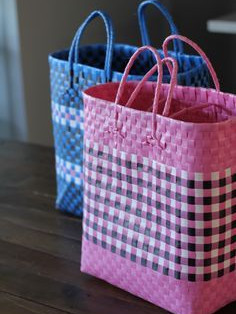
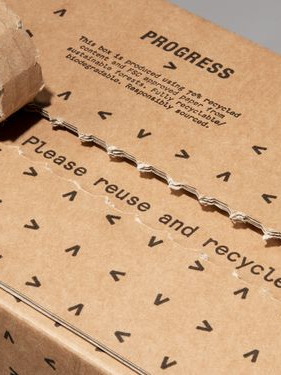
This can happen in a number of ways:
- Ingredients: Using raw 100% recycled or raw materials
- Production process: By minimizing the production process, supply chain, and carbon footprint
- Reusability: Creating a circular economy around the packaging, extending its lifecycle and usability.
As consumers become more aware of their impact on the environment’s safety and future, they are taking bigger steps to live more sustainably, whether through making their homes more energy-efficient or buying products that are packaged with recyclable, sustainable materials.
Thus, sustainable packaging is showing up everywhere in our life – potato chip bags, beverage bottles, CD cases, cosmetics, and more.
Are you really know sustainable packaging?Follow this article, we’ll tell you everything about sustainable packaging you may want to know!
sustainable packaging material:
There are many sustainable packaging on the market, but most of them are used the similar material, and the most common sustainable packaging in our life are as below :
sustainable packaging material
Kraft packaging
Kraft paper bag structure: Kraft paper bag is a composite material or pure kraft paper packaging container, non-toxic, odorless, pollution-free, low-carbon environmental protection, meets national environmental protection standards, has high strength, high environmental protection, is currently the most popular in the world One of the environmentally friendly packaging materials.
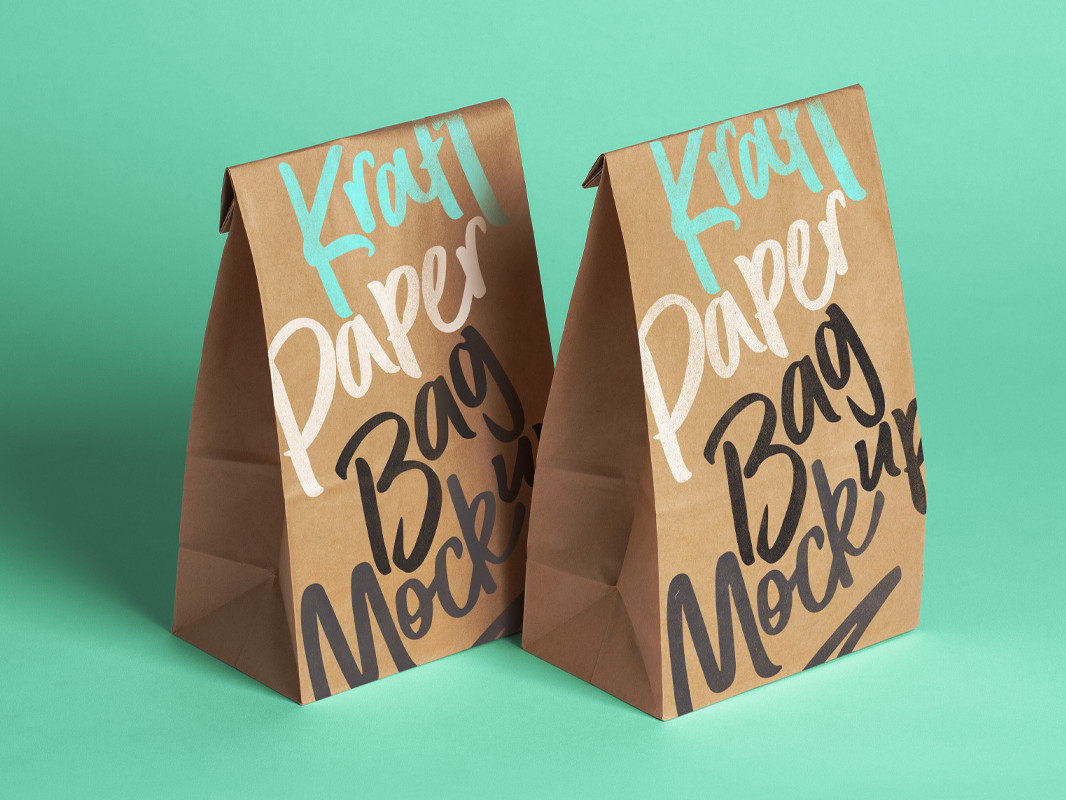
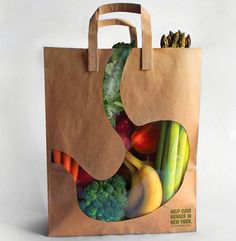
sustainable packaging material
Paper packaging
When it comes to paper packaging there is a lot to take in, like did you know that there are in fact 4 different types of paper packaging,
- Kraft
- White cardboard
- Coated paper
- Offset paper
Paper Packaging is a versatile and cost-efficient method to transport, protect and preserve a wide array of items. It is engineered to be sturdy, yet lightweight, and is customizable to meet product- or customer-specific needs.
sustainable packaging material
Pp woven bags
PP woven bags are made from polypropylene resin. Polypropylene, which is also known as PP for a short name, is one kind of thermoplastic resin material. During our production process, it is first made into a plastic film, then drawn into flat tapes. And then the polypropylene tape will be woven in two directions (warp and weft) to create a light, but strong and heavy-duty fabric, which will be used as the main material for packaging making, hence the name woven package.
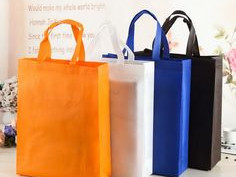
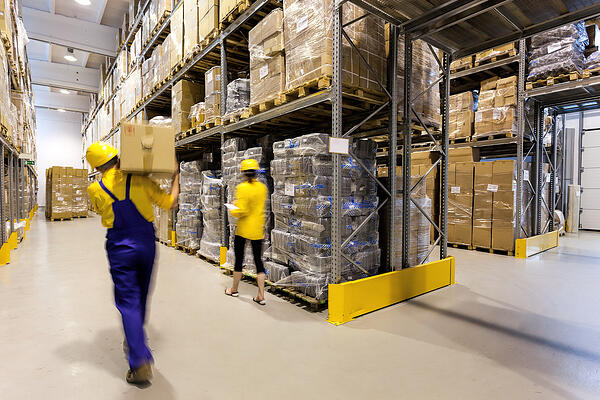
Tips for sustainable packaging and shipping:
However, sustainable packaging are commonly used in our daily life. As consumers become more conscious of their shopping habits, they’re looking not only for sustainable products but businesses dedicated to being environmentally friendly in all aspects of their operations.
Here are some of their tips for sustainable packaging and shipping:
- Offer carbon-neutral shipping by offsetting emissions
- Ship items in bulk
- Use sustainable packaging that can be repurposed
- Offer a returns program for your empty product containers
- Recycle on behalf of your suppliers and offer shipping-friendly items
- Work with wholesalers to reduce individual shipments and limit return shipping
- Reduce the size of your packaging
- Use compostable mailers
After we have talked so much about sustainable packaging, you must be interested in sustainable packaging. And the most interesting aspect of the packaging is not only the sustainable materials, but also the sustainable packaging design concept!
Do you know what sustainable packaging design is? Let’s have a look!
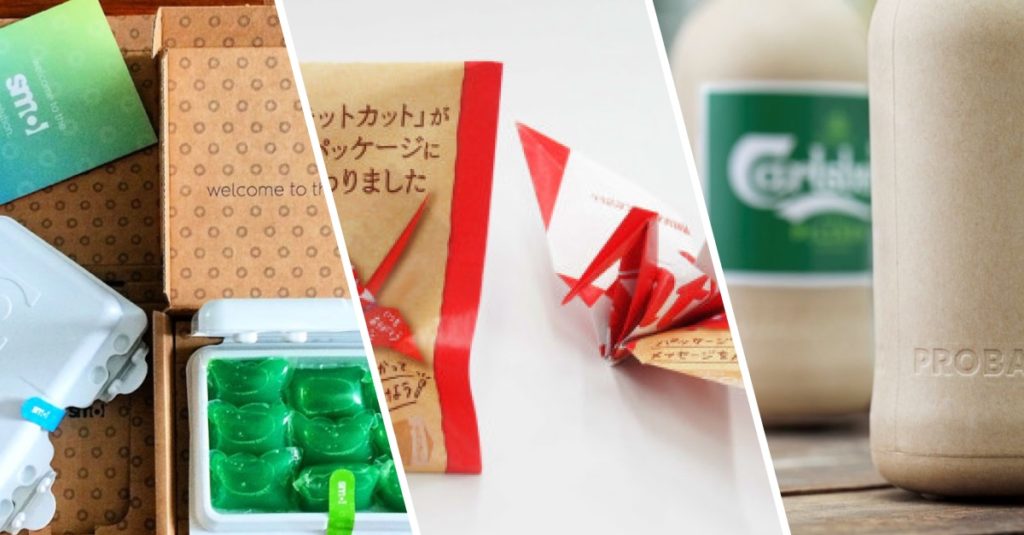
sustainable packaging design:
The sustainable design of products requires designers to not only meet the needs of users when designing products but also pay attention to energy consumption and environmental pollution in the production and use of products. For different design objects, designers can make the design consistent with the concept of sustainable development from a single or multiple perspectives.
Therefore,meet the sustainable design,we have 5 points needs to consider :
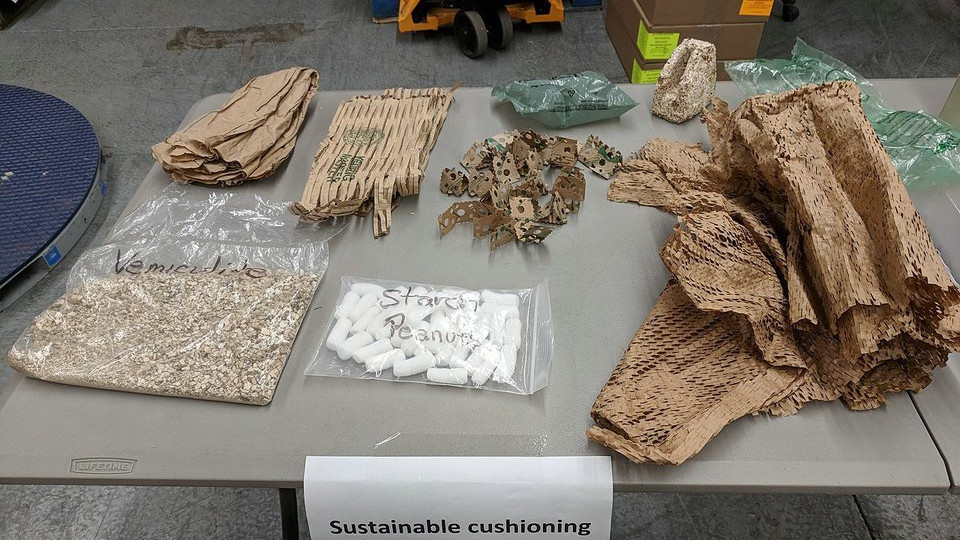
1. Design concept
The creative and design stages are the key to achieving sustainable products. Designers can improve existing products or design products that are more conducive to sustainable development based on the existing use problems. Many products are now pursuing multi-functionality to attract daylighters, but there are not many functions actually used, which results in excess product functions and is a waste of a certain degree. In this regard, designers can re-examine the functions of existing products and optimize the functionality of products. In addition, extending the product life cycle also requires attention when designing the concept. The frequent replacement of products in a short period of time is a great waste of natural and social resources and is naturally unsustainable.
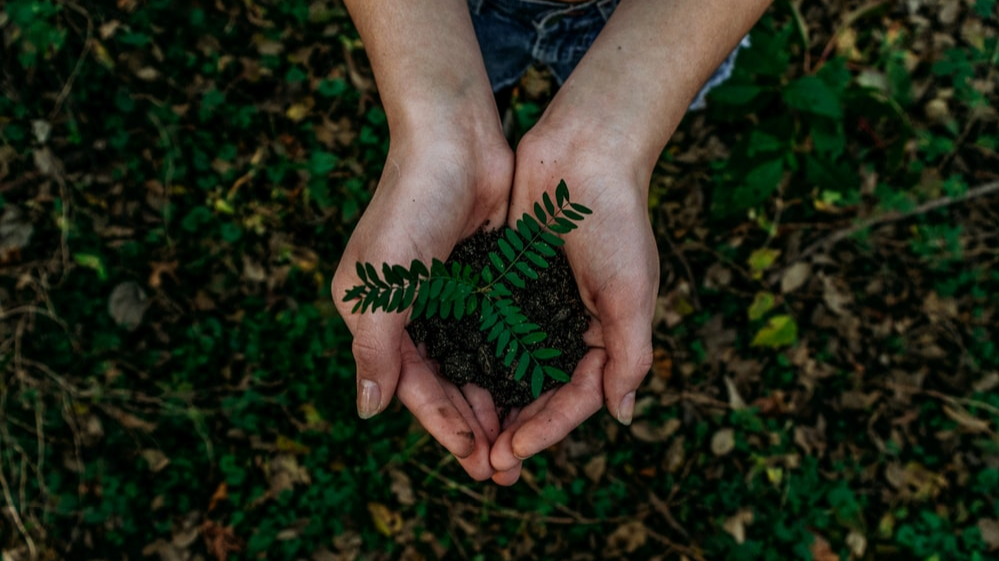
2. Green materials
The greening of materials not only refers to the green choice of materials, that is, the selection of environmentally friendly and legally harvested natural materials in the design, but also can reduce the use of materials or avoid the use of materials without affecting the basic function and strength. Low utilization, reducing waste of materials.
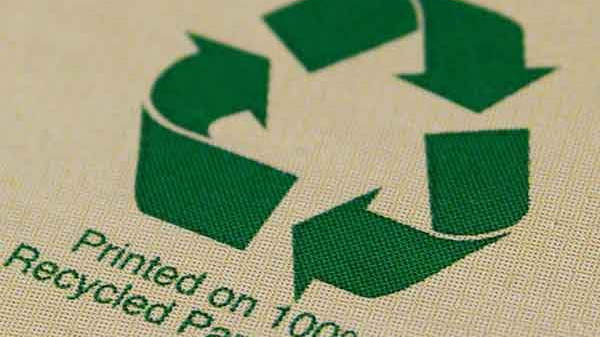
3. Recyclingmaterial
In a circular economy, all products should be designed to be biodegradable, recyclable, or a combination of both. Through recycling, all materials and components in the product can be recycled for new products or new processes, thereby avoiding any waste. Therefore, in the early stage of product design, designers should fully consider the possibility of recycling their parts and components, and achieve the purpose of recycling through existing technology treatment methods and processes.
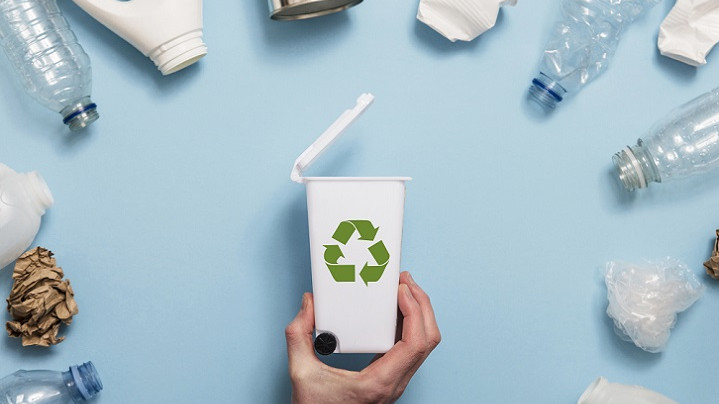
4. Energy saving
Energy saving is mainly reflected in the three parts of manufacturing, transportation and use in product design. When designing products, designers need to consider the production consumption in the manufacturing process, reduce energy consumption, reduce production processes, and improve energy efficiency. In transportation, designers can also use stacking, folding, and disassembly to reduce transportation costs. In the process of user use, it is also the most energy-saving part of the entire design. Designers should reduce energy consumption in use through design concepts.
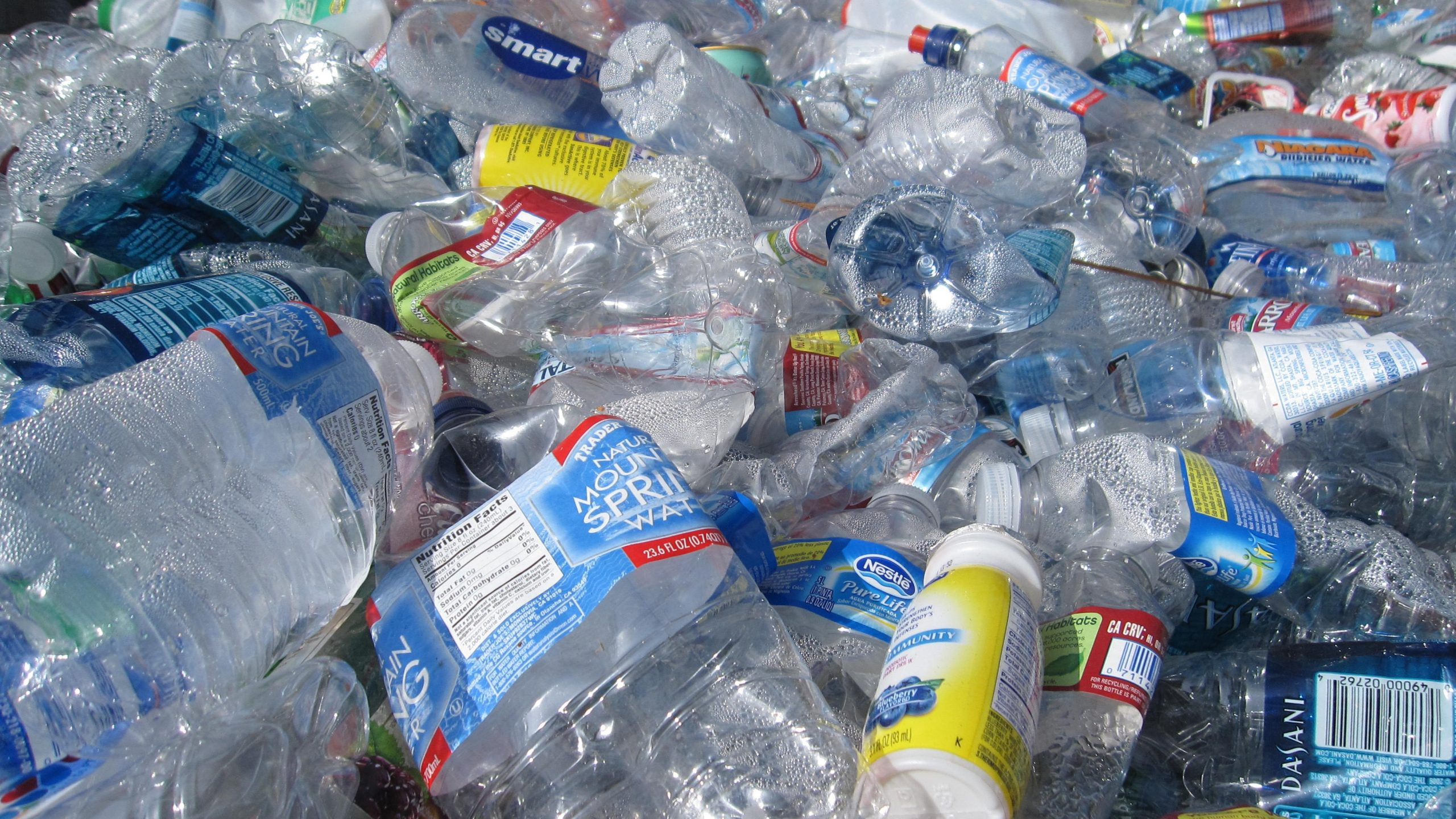
5. Reduce environmental pollution
The initial design models of products are often rough. In order to pursue refinement and beauty, designers usually treat the surface of materials to different degrees, the most common of which are sanding and painting. However, the use of paint can cause pollution to water, air and even soil. So sustainable design requires designers to consider more environmentally friendly processes.
Your consumers are increasingly concerned with the impact they’re making on the environment. This inclination is even more common with the millennial generation, where the majority of these consumers not only recognize but want to fix the impact of years of unsustainable practices.
Today, product manufacturers like you have to walk a fine line between package sustainability and quality. You need sustainable packaging that provides a safe barrier from elements like moisture and cold air. You also have to ensure that your packaging is shelf-stable and that it doesn’t feel flimsy or cheap.
Cost-Effective Packaging Solutions
While many people may think that environmentally-friendly products are unavoidably expensive, such as organic foods that can often be double the price of others, sustainable packaging is actually cost-effective. Innovative designs that use less harmful materials not only reduce waste, but they also reduce space. The ability to fit more weight and more products within shipments can greatly lower shipping and transportation costs, allowing for more products per shipment and reducing the use and cost of fuel.
Promote the Product
Let’s face it: Consumers feel better and happier when they know they are contributing to a greener future. Keep your customers satisfied, and associate your product and your brand with greener living. When you show customers that you care about the environment and how your product affects the safety of others, you’ll gain a positive reputation that help promote your business and product.
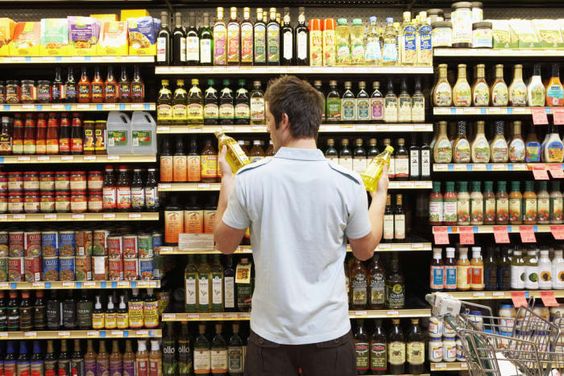
A Greener Future
Plastic materials such as PVC (polyvinyl chloride) are not biodegradable, and some chemicals used in PVC production have been shown to cause cancer, kidney or reproductive system damage in animals. The H-Loc Trapped Blister uses recycled PET (RPET) to contain products, and a minimal amount at that. The majority of the package uses corrugated cardboard, the most recycled material on the planet. And with water- and soy-based inks and adhesives, the trapped blister reduces the need for harmful oils.
Save Yourself Money Sustainable Packaging
Sustainable and eco-friendly products tend to be packaged in more lightweight materials which ultimately can help you save on shipping costs. Think locally when sourcing freight carriers and materials for packaging. A well-thought-out logistics plan will directly impact your costs in a positive way. Not to mention your consumers will also appreciate it when products are lightweight and easier to recycle.
How Do Brands Benefit from Sustainable Packaging?
There are many ways a brand or manufacturer can benefit from a focus on sustainability in its production. One huge advantage to eco-conscious packaging is that it will attract a demographic of environmentally conscious, like-minded consumers to your product. This demographic is growing fast and if you aren’t supporting the eco-friendly movement with your brand now, you are going to be left behind your competitors in the marketplace.
This is a call to arms for your product lines! The customer base for eco-friendly companies is steadily growing, as people are becoming more aware of the damaging effects that modern living—packaging included—has on the environment.
Prominent companies such as Walmart and Coca-Cola have already invested in sustainability-related packaging, in part because it is a lucrative transition to make. The Coca-Cola Company made its product packaging more sustainable by adopting more resource-efficient designs, as well as using recycled and renewable materials. Since investing in sustainability, Coca-Cola reports it has saved approximately $180 million a year.
Conclusion:
As consumers become more aware of their impact on the environment’s safety and future, they are taking bigger steps to live more sustainably, whether through making their homes more energy-efficient or buying products that are packaged with recyclable, sustainable materials.
At the same time, sustainable packaging also has a lot of positive impacts on companies, bringing more environmental protection concepts to consumers and improving brand image. Green and healthy brands are first for many consumers!
PrimePac adheres to the green business philosophy of sustainable and environmental protection, with sustainable packaging as its main business product, and is the perfect candidate for your packaging business partner.
About primepac:
At PrimePac, we bring together design experts and brand innovators to create fresh ideas, customized packages, and fully efficient processes.
We design creative packaging solutions that cater to a diverse global audience with the in-house knowledge and network of experienced professionals to meet the demands of every type of client.
From our dedicated sales team and warehouse staff in Australia to the experts at our production facilities in China, all of our employees are guided by four core values at the heart of our business: integrity, innovation, passion, and engagement.

PP Woven Bags - The Useful Guide
What are pp woven bags? Here is the complete guide to pp woven bags you need to know!
Pp Woven bags are quite popular products on the market with many different uses. Follow this article, let’s learn more about this new type of environmentally friendly packaging. All you want to know about pp woven bags is here!
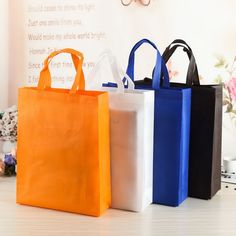
What is pp woven bag?
PP woven bag is made from polypropylene resin. Polypropylene, which is also known as PP for a short name, is one kind of thermoplastic resin material. During our production process, it is first made into a plastic film, then drawn into flat tapes. And then the polypropylene tape will be woven in two directions (warp and weft) to create a light, but strong and heavy-duty fabric, which will be used as the main material for packaging making, hence the name woven package.
1. Woven
Woven, or weaving is a method by many threads or tapes woven in two directions (warp and weft), to form a fabric for plastic industry needs.
In the plastic woven industry, with a plastic film is drawn into filaments, woven into fabric/sheet/cloth. It can be into a tarpaulin, woven bags, container bags, tons of bags, geotextile fabric, color of the cloth and so on.
2. Woven polypropylene
Polypropylene, which is also known as PP for short name, is one kind of thermoplastic resin material that produced by the polymerization of propylene. Thus, woven polypropylene is polypropylene strips/threads that have been woven in two directions (warp and weft) to creat a light, but strong and heavy duty material.
Different names of pp woven bags
different regions have different names for different products. Here are the different names for pp woven bag
1. Pp woven bag = woven polypropylene bags = woven polypropylene sacks
2. Short names of woven polypropylene bags
pp bags
wpp bags
woven bags
woven pp bags
woven poly bags

What’s the types of pp woven bags?
There are different types of packaging according to different materials. Therefore, there are also different types of pp woven bags.
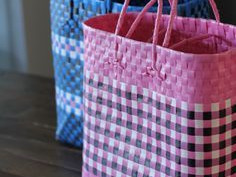
Different types of pp woven bags
Traditional PP woven bags
Products made of woven uncoated or woven PP bonded, white or colored plastic. Products folded bottom garment, open mouth. On printed or non-printed Flexo 2-sided cover, simple images or colors or according to customer requirements. The bag withstands a load of 5 –50 kg. Products used to pack animal feed, seafood, agricultural products, fertilizers, flour, salt, sugar, chemicals, raw materials ...
Different types of pp woven bags
PP Woven Bag Laminated Film
Products made from woven PP laminated BOPP film, translucent or BOPP gravure seal. How bottom folds sewing, open mouth. The ends are folded with a splint, sewed with cotton thread or stuck with a PP flap (bag with a block shape), with a corner shaped valve. 2-sided printing covers, multicolored, beautiful, sharp images, images and colors according to customer requirements.
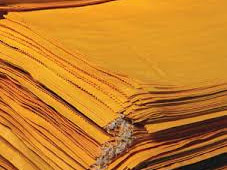
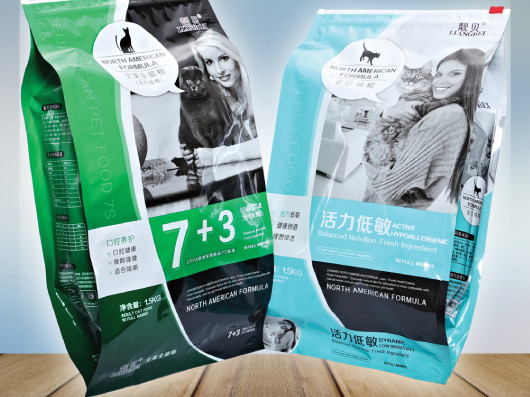
Different types of pp woven bags
PP Woven Bag and Bottom Splint
The bag has 1 layer of PP woven fabric coated with PP bonding plastic. The ends of the bags are glued or not glued with PP strips, folded with a brace and sewed with cotton thread, shaped at the corner, the valve has a 1-way principle, self-closing. 2-sided Flexo printing covers, images, and colors according to customer requirements.
Different types of pp woven bags
PP Woven Bag with Bottoms
The bag has 1 layer of PP woven fabric coated with PP bonding plastic. The two ends of the bag are covered by rectangular PP adhesive when the material is closed, it will be in the form of a block, with an inlet valve at the corner, the valve has a 1-way principle, self-closing.

What’s the production process of pp woven bags?
Tape Extrusion
Tape extrusion is the most critical process of the woven industry since the quality of the tape has a direct impact on the quality of the packaging. During the extrusion stage the mixture will be heated to a specific temperature for plasticization, and then extruded in a flat sheet and cooled in a water tank. After the initial cooling, the flat sheet will then be split into strips by high-precision cutters. After the splitting, the flat tape will then be heated, stretched, and cool multiple times to achieve the required linear tensile strength.
Circular weaving
Woven packaging is made from tubular fabric which is weaved by a circular weaving machine using PP flat tape. Shuttles in the circular weaving machine weave the tape in the weft and warp direction to form the woven fabric in a tubular structure.
Rotogravure printing
To achieve the aesthetic and advertisement property of our packaging, the woven package will be laminated with a layer of BOPP film above the woven fabric. The Biaxially Oriented Polypropylene (BOPP) film is printed using a rotogravure printing machine. And based on customer requirements, another background layer of pearl white or aluminized film can be added between BOPP film and the woven fabric.
Bag Making
Bag making mainly consists of 3 major processes: lamination, side gusset, and bag making. Lamination is one of the most critical processes for woven packaging making. BOPP film and woven fabric are laminated using a mixture of PP and LDPE. It’s melted and then laminated between two layers to form a bond. Temperature control and cooling is the key control point for a desirable bonding.
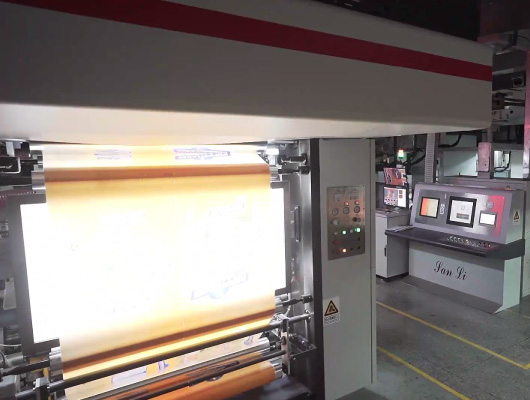
However, there are the reasons why more and more business chooses pp woven bag. The Australian government introduced a new environmental protection policy in 2018, and officially began to stipulate that all enterprises should focus on energy conservation and environmental protection. We strongly advocate the Increase use of recycled material and build demand and markets for recycled products. From July 1st, all major shopping malls and supermarkets in Australia are restricted to provide plastic bags. From then on, all businesses have begun to find solutions for environmentally friendly packaging.

Therefore, in this article,you’ll find the answer what’s the benefit of using pp woven bag and what’s the properties of pp woven bags!
Properties of pp woven bags and what’s the benifit ?
Pp woven bags are 100% reusable and durable
Pp woven bags are Light in weight and flexible
With excellent resistance to stress and high resistance to cracking
Pp woven bags can breathable or waterproof with a laminated film
Pp woven bags allow the contents to breath until air dried.
Pp woven bags have better burst strength than plastic bags.
Pp woven bags can be laminated as the vapor and moisture barrier.
Pp woven bags can be partially transparent for outstanding presentation.
Pp woven bags can be side gusseted to accommodate bulky items easily
So you may wondering is woven polypropylene an eco-friendly material?
- Yes, it’s an eco-friendly fabric. It can be melted down, recycled and made into other products. Besides, they last long enough and can be used many times to reduce your demand from single-use products.

When it comes to creating your very own custom reusable bags, you want something durable and eco-friendly, but when faced with your options it can be hard to make a decision. If you’ve narrowed down your options to recycled plastic, that’s a start, but you still need to make the call between woven vs. non-woven polypropylene bags.
So What’s the different between PP woven bags and Non pp woven bags?
Woven Polypropylene
Woven polypropylene is made when recycled plastic is stretched into long threads. These threads are then woven in a way similar to how cotton and other fabrics are woven. This woven construction lends the fabric lots of durability.
Non-Woven Polypropylene
Non-woven polypropylene is also made using recycled plastic stretched into threads, but those threads are bonded together. The resulting fabric is also very durable, it also has a smoother surface.
Both woven and non woven polypropylene bags are made from recycled plastic. The difference is in how they are built. To make woven polypropylene plastic threads are woven together in a more traditional manufacturing process to create a durable material. To create non woven polypropylene plastic fibers are bonded together. In both instances the fabric is durable, and when used to make reusable bags they will deliver years of dependable use.
Application of pp woven bags
- Agricultural product packaging: PP woven bags are largely used in storing and transporting agricultural products such as aquatic products, feeds, fruits, vegetables, etc. PP woven bags used in the agricultural industry typically include feed PP woven bags, chemical PP woven bags, fertilizer PP woven bags, vegetable weaved bags, and fruit mesh bags.
- Food packaging: PP woven bags are increasingly used to pack food. Common food woven bags include rice PP weaved bags, flour PP woven bags, maize woven bags, etc.
- Geotechnical engineering: PP woven fabrics are extensively used in the construction of irrigation works, roads, railways, ports, mines, buildings, and more. Having the functions of filtering, draining, isolation, and anti-seepage, PP woven fabrics are one of the most popular geosynthetics.
- Tourism and transport: Temporary tents, sunshades, and various travel bags can be made with PP woven fabrics. In addition, plastic woven fabrics can also be used as fences and screens during construction.
- Daily necessities: PP woven bags are almost used by everyone, whether workers, farmers or cargo agents, etc. You can find plastic woven products (such as shopping bags, logistics bags, etc.) in stores, warehouses, and houses, nearly everywhere.
- Flood control products: Woven bags play an important role in reducing or preventing the detrimental effects of floodwaters. They are widely used in the construction of dams, river banks, roads, and railways. Woven polypropylene sandbags are widely used all over the world.
- The special woven bags: The special woven bags also are used to serve some special purposes. For example, UV-resistant woven bags have UV protection and anti-aging function, allowing them a longer lifespan in the sunlight. A woven polypropylene tube with UV protection can be used for earthbag buildings.
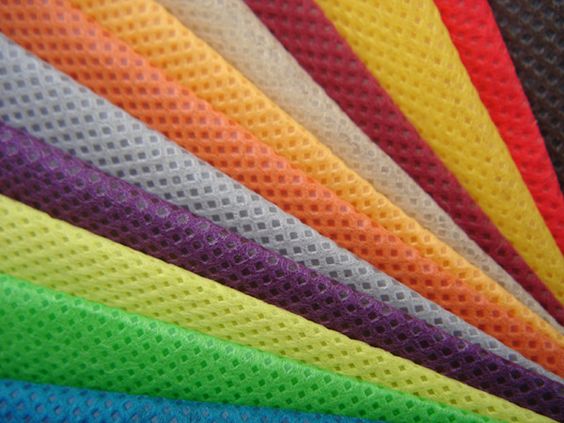
Conclusion:
With the gradual strengthening of people’s awareness of environmental protection, environmentally friendly products have become a new challenge faced by various enterprises. For packaging products of the same weight, PP woven bags can be lighter than ordinary plastic packaging, use less plastic, and meet the environmental protection trend of lightweight packaging. Thus, pp woven bags are definitely your best partner for environmental protection.
At the same time, choosing reliable pp woven bags manufacturers in China is also important!
Primepac - Your best pp woven bags manufacturers & supplier
Pp woven bags from PrimePac:
Why choose us ?
1.All food-grade raw materials are used, no recycled materials are used, and no odor. At the same time, the strength is more reliable. The raw material supplier is Sinopec (the world's total market capitalization in 2019, the first in the petrochemical industry)
2.Our PP woven bags are produced in BRC certified food grade plants
3.Higher printing quality with our PP woven bag
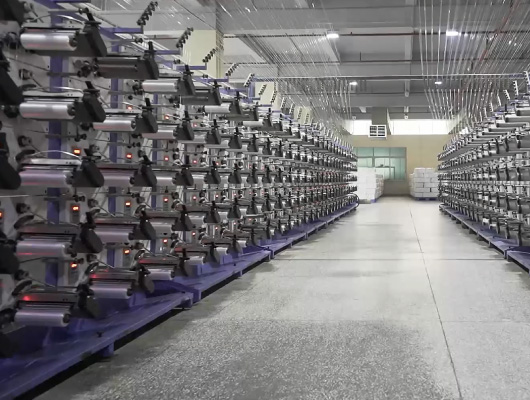
At PrimePac, we bring together design experts and brand innovators to create fresh ideas, customized packages, and fully efficient processes.
We design creative packaging solutions that cater to a diverse global audience with the in-house knowledge and network of experienced professionals to meet the demands of every type of client.
From our dedicated sales team and warehouse staff in Australia to the experts at our production facilities in China, all of our employees are guided by four core values at the heart of our business: integrity, innovation, passion, and engagement.

Kraft paper packaging - A comprehensive overview
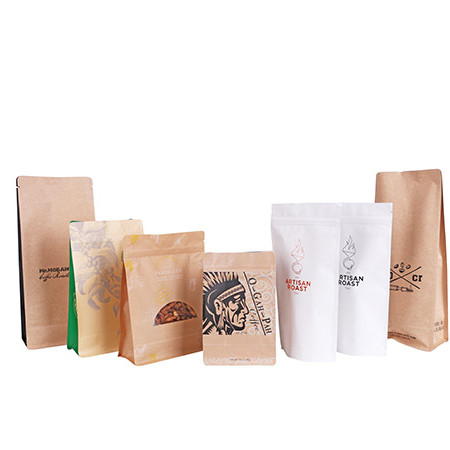
Everything you need to know about Kraft paper packaging
With the ever-growing awareness of environmental issues among the population, consumers are increasingly turning their loyalties to eco-conscious businesses and products, with one of those products being kraft paper packaging. With more and more plastic restrictions being put in place around Australia, from straws to plastic bags, these eco-friendly measures have had strong support from people!
One of the trends growing is the use of Kraft paper packaging as a more and more popular packaging method, what effect does it have on the environment? What made it a popular packaging method for both businesses & consumers? In this article, we are going to learn more about Kraft paper packaging and sustainable bags.
What is kraft paper packaging?
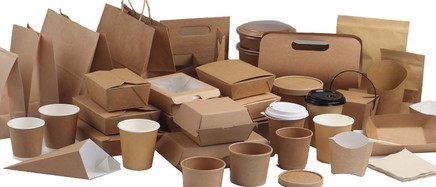
Kraft paper bag structure: Kraft paper bag is a composite material or pure kraft paper packaging container, non-toxic, odorless, pollution-free, low-carbon environmental protection, meets national environmental protection standards, has high strength, high environmental protection, is currently the most popular in the world one of the environmentally friendly packaging materials.
Kraft paper bag is based on the whole wood pulp paper. The color of the kraft paper packaging is divided into white kraft paper and yellow kraft paper. PP film can be applied on paper to play a waterproof role. The strength of the bag can be made from one to six layers according to customer requirements. , Printing and bag-making integration. Opening and back cover methods are divided into heat seal, paper seal, and paste bottom. Scope of application is generally: chemical raw materials, food, pharmaceutical additives, building materials, supermarket shopping, clothing, and other industries suitable for kraft paper packaging industry.
Kraft paper can be classified by different factors.
The different colors: original-color kraft paper, red kraft paper, white kraft paper, flat kraft paper, single-light kraft paper, two-color kraft paper, etc.
The different applications: packaging kraft paper, waterproof kraft paper, moisture-proof kraft paper, rust-proof kraft paper, plate kraft paper, process kraft paper, insulating kraft paper board, kraft sticker paper, etc.
The different materials: recycled kraft paper, kraft core paper, kraft original paper, rough kraft paper, kraft wax paper, wood pulp kraft paper, composite kraft paper, etc.
Where did the word ‘Kraft” come from?
Kraft paper is a packaging material that gets its name from the Kraft pulping process, pioneered by Carl F. Dahl of Germany in the 1880s.
Normally, in the manufacture of paper, wood is ‘pulped’ (ground to a pulp) first, but Dahl found that treating the cellulose pulp with certain chemicals (sulfates) increased the strength of the paper. He called his paper Kraft paper – Kraft in German means ‘strength’.
This is why this type of material was eventually used as a packaging material due to its durable and useful nature in kraft paper packaging.
When it comes to kraft paper packaging, you must have heard of sustainable packaging!
Kraft packaging is one of sustainable packaging, so what other styles are there in sustainable packaging? First, let’s see what is sustainable packaging
What is sustainable packaging?
Sustainable packaging is the development and use of packaging that can improve sustainability. This involves increasing the use of life cycle inventory (LCI) and life cycle assessment (LCA) to help guide the use of packaging, thereby reducing environmental impact and ecological footprint. It includes the entire supply chain: from basic functions to marketing, to retirement (LCA) and rebirth. In addition, the ecological cost-to-value ratio may be a useful goal to improve the long-term viability and quality of life of humans and the longevity of natural ecosystems. Sustainable packaging must meet current functional and economic needs without affecting the ability of future generations to meet their needs. Sustainability is not necessarily the end state, but a continuous improvement process.
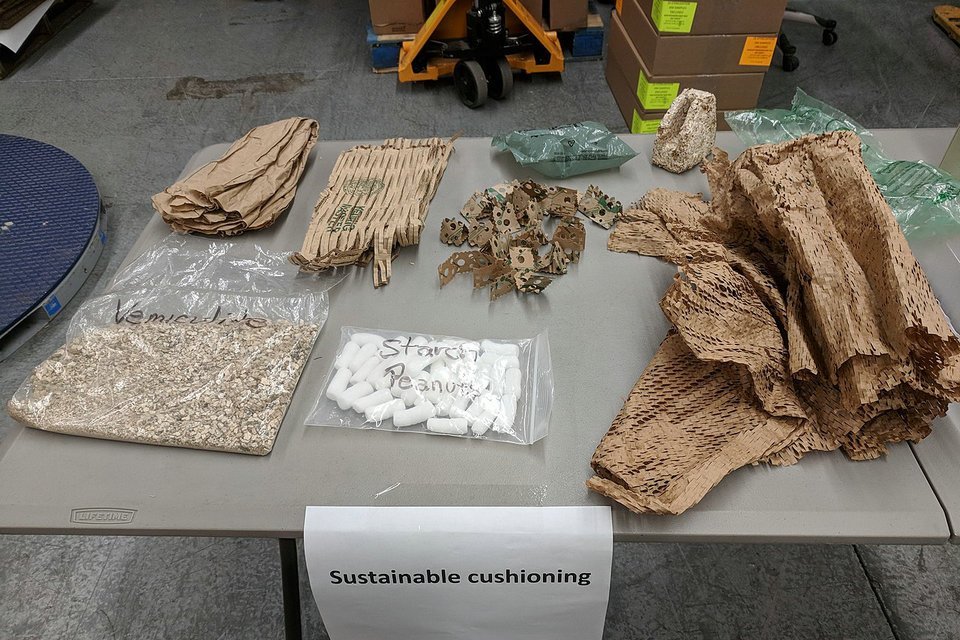
We all know that sustainable packaging is a relatively new addition to packaging environmental considerations. It requires more analysis and documentation to look at packaging design, material selection, processing, and life cycle. This is not just a vague “green movement” that many businesses and companies have been trying to include over the past few years. Companies implementing these environmental initiatives are reducing their carbon footprint, using more recycled materials, and reusing more packaging components. They often encourage suppliers, contract packers, and distributors to do the same.
How is Kraft paper made?
The production process of kraft paper involves several steps:
Pulping
The process starts by breaking down wood chips into small fibers. The wood fibers are then mixed with chemicals such as sodium hydroxide and sodium sulfide in a large vessel called a digester.
Bleaching
If the paper needs to be bleached to a lighter color, the pulp is sent through a series of chemical treatments using chlorine dioxide, hydrogen peroxide, or oxygen.
This step removes any residual lignin and produces a white color.
Washing
After the pulp has been digested and bleached, it is washed to remove any remaining chemicals.
Refining
The pulp is then sent through a refining machine to improve its strength and create a uniform texture.
Forming: The pulp is then formed into sheets by being passed through a machine that spreads it onto a large flat screen.
Drying
Finally, the sheets are dried to remove any remaining moisture and create the finished product.
As for the safety of kraft paper, the chemicals used in the pulping and bleaching process are generally considered safe and do not pose a significant risk to human health.
The production process is tightly regulated to ensure that any residual chemicals are removed during the washing and drying process.
Additionally, kraft paper is a non-toxic and biodegradable material, making it a popular choice for eco-conscious consumers and businesses.
Different elements of sustainable packaging to consider
What are the types of sustainable packaging? In addition to the kraft paper, you must have seen the following types.
Sustainable packaging
Kraft
Kraft paper is 100% sustainable, and among one of the most popular packaging materials in the world. It is much more sustainable to manufacture kraft paper compared to regular paper. Kraft is produced from all-natural ingredients such as pulp from all types of wood, while regular paper uses specific woods.
Bleaching is also not involved, which maintains the strength of the paper and decreases manufacturing costs. Kraft paper is also a lightweight packaging material that helps maintain a low shipping cost.
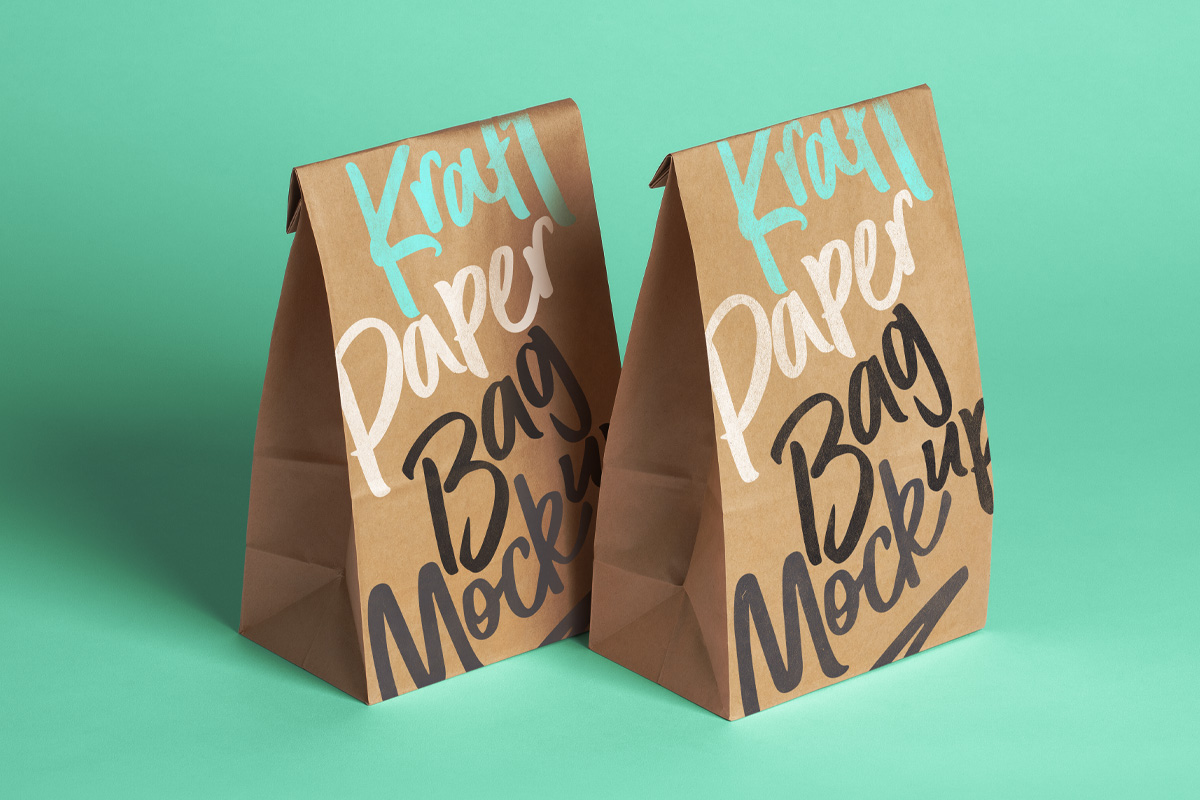

Molded pulp
This material is no stranger to sustainable packaging. A growing sustainability trend of large and small brands alike are opting to use molded pulp more often than other packaging options. Created with paper fibers, either virgin or recycled, molded pulp is one of the most sustainable packaging options on the market right now.
It is very common to find electronics and home appliance companies that use molded pulp inserts. The protective and thermoforming capabilities of this material allow for more packaging options. This is perfect for products that come in any shape or size.
Sustainable packaging
Foams packaging
A very large part of the packaging industry is the use of foams. Packaging foams are materials used in different levels of the industry. It is used as a duo-purpose protective layer, as well as to organize small products to provide a good presentation. But, foams were not always the most environmentally friendly.
As the subject of sustainable packaging continues to rise, biodegradable and paper foam alternatives have been developed to replace this material. Since the market for sustainability is growing, it is beneficial for smaller companies to ride the momentum.

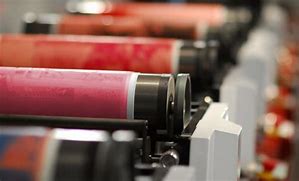
Sustainable packaging
Inks in packaging
The use of sustainable inks is a rising trend. These links no longer need heavy metals like lead and mercury. The biggest difference is the reduction or complete removal of volatile organic compounds. These compounds produce gases that are hazardous to both the environment, and human health.
Although energy-saving initiatives are in place, biodegradable inks have been the most impactful. These inks use organic vegetable oils. The result is a reduced impact on the environment and allows lower energy consumption during the recycling process in kraft paper packaging.
All Types of Recycled Packaging Materials
Recycled Paper Packaging
Corrugated Cardboard
Corrugated cardboard is a type of recycled paper that is made from layers of kraft paper.
It is often used for shipping boxes and other packaging applications, as it is strong and durable.
Corrugated cardboard is biodegradable and can be recycled multiple times.
Recycled Paperboard
Recycled paperboard is a type of paper that is made from recycled fibers. It is often used for packaging products such as cereal boxes, shoe boxes, and gift boxes.
Recycled paperboard is lightweight and can be recycled multiple times.
Bagasse Paper
Bagasse paper is a type of recycled paper that is made from sugarcane fibers. It is often used for food packaging, as it is resistant to grease and oil. Bagasse paper is biodegradable and can be composted.
Tyvek paper
Made from high-density polyethylene fibers, this type of paper is durable and water-resistant. It is often used for shipping envelopes and packaging for electronics. It can be recycled through special programs.
Newsprint paper
Made from recycled fibers and often used for wrapping and cushioning products. It is lightweight and absorbs shock well.
Other Recycled Materials for Packaging
Bioplastics
Bioplastics are a type of plastic that is made from renewable resources such as cornstarch or sugarcane.
They are biodegradable and compostable, making them a sustainable alternative to traditional plastic packaging.
Glass
Glass is a recyclable and sustainable material that can be used for a variety of packaging applications, including bottles, jars, and containers.
It is durable, non-toxic, and can be recycled endlessly without losing quality.
Metal
Metal packaging, such as aluminum cans, is recyclable and can be used for a variety of food and beverage products.
It is lightweight, durable, and can be recycled an infinite number of times.
Biodegradable Plastics
Biodegradable plastics are made from materials that will break down over time, such as cornstarch or potato starch.
They are not always recyclable, but they are a good alternative to traditional plastics that take centuries to decompose in the environment.
How many types of kraft paper are there?
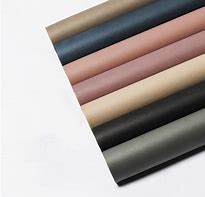
1: According to the material can be divided into:
- Pure kraft paper bags;
- Paper-aluminum composite kraft paper bag
- woven bag composite kraft paper bag
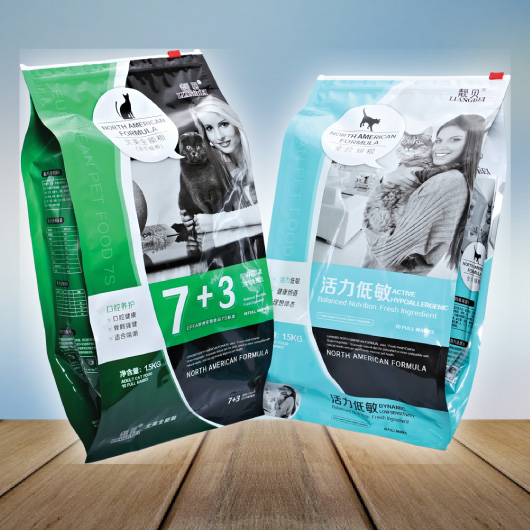
2: According to the bag type, it can be divided into:
- Three sides sealed kraft paper bag;
- Side organ kraft paper bag;
- Free standing kraft paper bag;
- Kraft paper bag with zipper;
- Freestanding zip kraft paper bag.
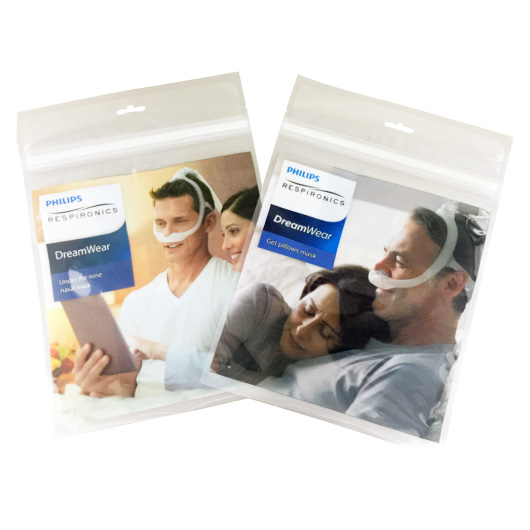
3: According to the appearance of the bag type, it can be divided into:
- square bottom bag;
- seam bottom bag;
- valve pocket;
6 types of kraft paper and their best business uses

Virgin Natural Kraft Paper
Virgin natural kraft paper is the heavy lifter of the paper world. Its clean and durable fiber content and its low cost make it an ideal option for heavy-duty applications that require a high level of tear resistance. Plus, it’s perfect for printing as well, so it’s a natural for branded packaging and protective layering, wrapping, pallet interleaving, carrier sheets, and dunnage.
Natural Recycled Kraft Paper
Although not as strong and tear-resistant as virgin natural kraft, natural recycled kraft paper is a more environmentally friendly option, and still carries enough strength to do an excellent job with dunnage and void fill applications, as liners for trays and boxes, interleavers, and bottom wrap for newspapers. Both virgin and recycled kraft paper come standard in weights from 30# to 70#.
Black Kraft Paper
The most common use of black kraft paper is as a dark, durable backing for picture frames, but that’s not its only use. Black kraft paper is also perfect for fun and interesting craft projects, or as an aid to unique decorating where light barriers and dark borders are needed.
Colored Kraft Paper
Colored kraft paper is available in just about every color of the rainbow. Its vibrant hues make it perfect for all manner of craft projects, as well as fun backings for bulletin boards, standard school supplies, scrapbooking, and similar applications. If your target market includes, schools, daycares, or busy parents, colored kraft paper should be on your list.
White or Bleached Kraft Paper
Similar to virgin natural kraft in strength and durability, white or bleached kraft paper makes an especially powerful impact when a crisp, clean appearance is desired. For example, many restaurants like to use white kraft paper as an attractive and economical alternative to linen tablecloths. It also serves well for wrapping and can stand up well to the standard wear and tear a package may receive.
Printed Kraft Paper
Many different industries take advantage of the versatility and value of custom printed kraft paper for creating branded wrapping, packaging, and in-store displays. For example, a deli may order a supply of kraft paper sheets in the perfect size for wrapping sandwiches and have the deli logo and contact information printed on one side as a means of affordable, continual advertising. Many fashion manufacturers ship their garments out with printed kraft paper sleeves or sheets between individual articles, or wrapping the inside of a shoebox, again with branded logos and other information prominently displayed in kraft paper packaging.
Different Colors of Kraft Paper
The color of kraft paper can vary depending on several factors, including the type of wood pulp used, the chemical treatment process, and the degree of processing involved in manufacturing the paper.
The natural color of kraft paper is light brown, which comes from the wood pulp used to make it.
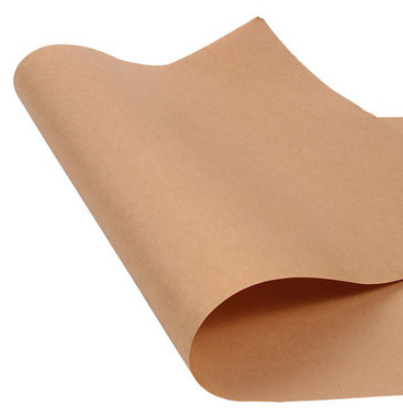
However, the color can be altered during the pulping process by adding certain chemicals, such as sodium sulfide or sodium hydroxide.
The addition of these chemicals can help to break down the lignin and remove impurities, resulting in a brighter and whiter paper.
On the other hand, unbleached kraft paper is a darker shade of brown due to the absence of chemical bleaching agents.
This type of kraft paper is often used for packaging products that require a more natural and eco-friendly appearance.
The color of kraft paper can also be affected by the degree of processing involved in manufacturing it.
For example, recycled kraft paper may have a slightly darker hue than virgin kraft paper due to the presence of residual ink and other impurities.
In terms of the impact of color on kraft paper, it generally does not affect the performance or durability of the paper itself.
However, certain colors may be more aesthetically appealing for specific packaging applications or brand identities.
For instance, darker shades of kraft paper are often used for rustic and natural-looking packaging, while brighter shades may be used for more vibrant and colorful designs.
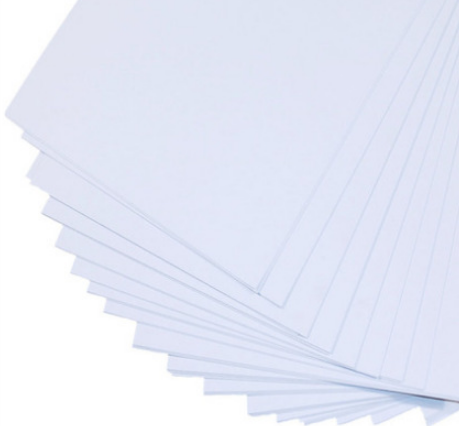
Why we choose kraft paper for packaging
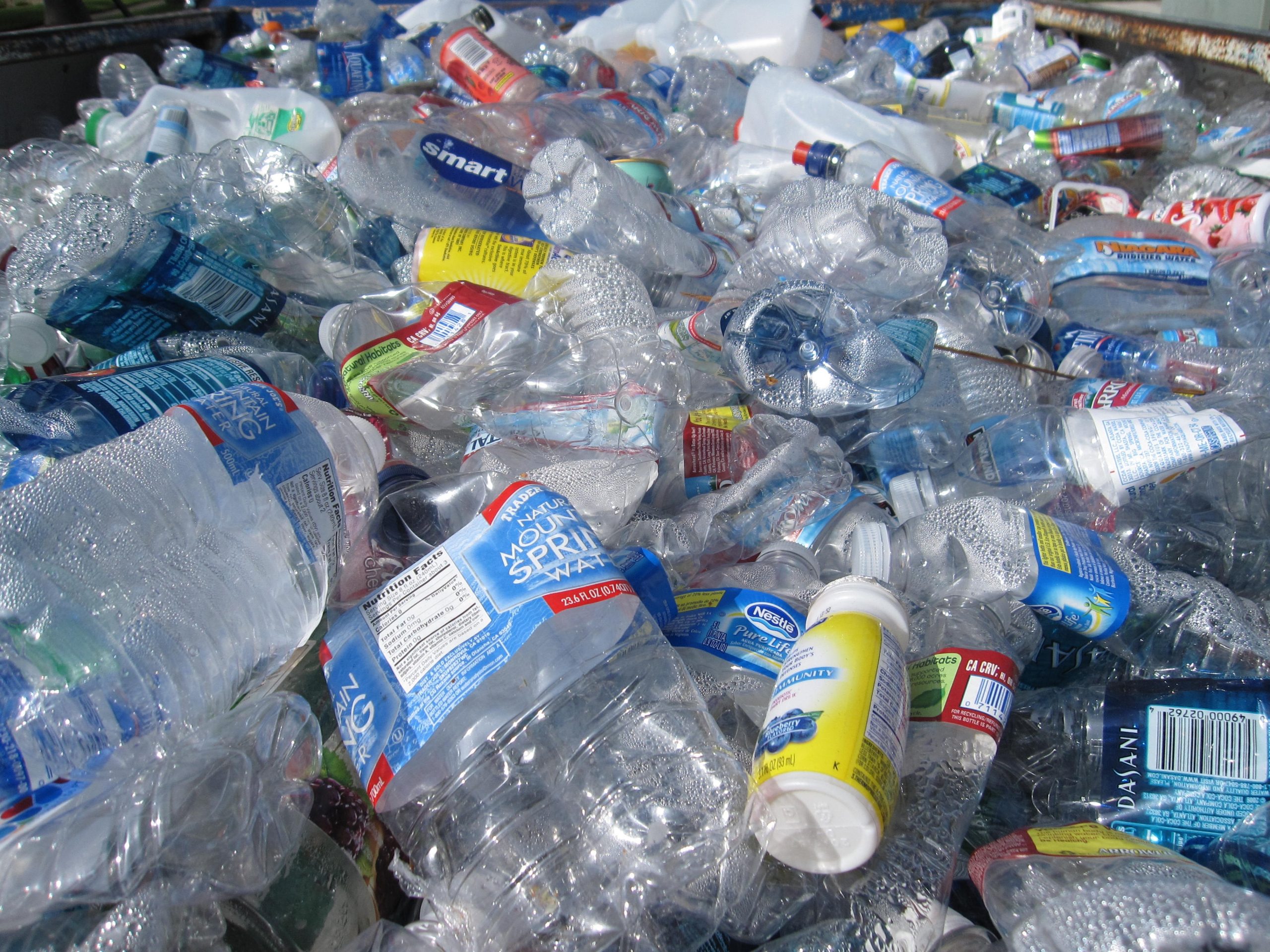
Cost
The cost of packaging adds to the final cost of any product, which ultimately affects how your product will compete with the rest of the market. Kraft paper packaging is less expensive than plastic packaging. It also weighs less than packaging products that include features like zip closures. The weight of the packaging determines the cost of shipping, which also affects the final consumer price in kraft paper packaging.
Strength
Kraft paper is durable enough to withstand elaborate printing in modern, high-tech machinery. This means you have endless options when it comes to designing your packaging’s printing. It also holds up to shipping and shelf life very well.
Environmental Impact
Both paper and plastic are easily recyclable, but paper has an environmental edge because it also quickly decomposes if it’s thrown away instead of recycled. Therefore, you don’t have to depend on the consumer to make a good environmental choice; kraft paper is environmentally low-impact whether it’s recycled or sent to a landfill.
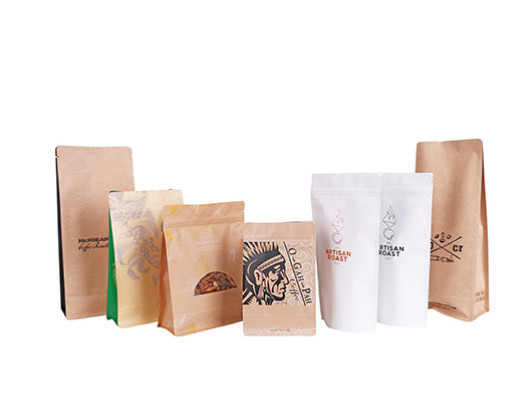
First and foremost, kraft paper packaging is stronger, due to its reduced lignin content and high sulfur ratio. It also doesn’t involve extensive bleaching, which decreases the paper’s strength and increases manufacturing costs.
Since it doesn’t add much weight to the package, using kraft wrapping paper keeps shipping costs down. • Its coarse texture, durability, and flexibility provide more protection.
For Your brand image
Use Kraft paper for eco-friendly business cards. • The natural quality gives business cards a look that is simple and universally appealing. • Potential clients will appreciate your environmentally conscious stance and view it as a credit to your character. • Your cards will garner attention due to their unique look.

Conclusion
After we know so much about kraft paper packaging, let's summarize the advantages of kraft paper!
Recyclable
Most of the paper packaging that is available in the stores is recyclable.
Recycling paper packaging is more comfortable than plastic packaging.
Even some types of paper are used for the packaging can get into their original form after recycling it again and again.
Good Printing Performance
The kraft paper packaging is considered best to give an excellent printing performance.
As compared to plastic packaging the kraft paper packaging can provide impressive printing results.
Durable material & Saves space
Kraft paper packaging with a window relative to the width of the wear rate is relatively low, can be stored for a long time, after a long time will not decay, easy to save. Kraft paper boxes can be folded at Will and can occupy fewer places.

Why choose Primepac
PrimePac – based on Australian which was specializes in packaging production and design. In the area of kraft packaging industry, there are more unique technological advantages:
1 . Compared with custom pouch products, PrimePac can provide stock pouch products
2 . Print this directly on kraft paper. Compared to many kraft papers, only simple text and artwork can be printed. Primepac can print high-resolution CMYK patterns.
3 . Compared with many brown kraft paper / white kraft paper, PrimePac has more choices. We have made five kinds of paper materials, brown kraft paper / white kraft paper / cotton paper / yunlong paper / coated paper, which will also meet customer needs in the future and make more Many other attempts.
4 . Degradable technology, because the degradable film can not reach the performance of commonly used plastic film, primepac’s degradable packaging materials are basically in the form of kraft paper composite degradable film.
At PrimePac, we bring together design experts and brand innovators to create fresh ideas, customized packages, and fully efficient processes.
We design creative packaging solutions that cater to a diverse global audience with the in-house knowledge and network of experienced professionals to meet the demands of every type of client.
From our dedicated sales team and warehouse staff in Australia to the experts at our production facilities in China, all of our employees are guided by four core values at the heart of our business: integrity, innovation, passion, and engagement.

All About Paper Packaging You May Wonder
All you need to know about paper packaging!
When it comes to paper packaging there is a lot to take in, like did you know that there are in fact 4 different types of paper packaging? Not all packaging is suitable for food and Australia and New Zealand have new guidelines and laws which will affect your business! By reading this article you will have a better understanding of what you need to do for your business paper packaging needs.
The first on our list is Kraft packaging, Kraft packaging is a type of paper packaging specially designed in the 1880s by Carl, F. Dahl in Germany. He found by treating the paper pulp packaging with certain chemicals he was able to create a stronger, more resilient type of package.
Why the word Kraft?
So why the word Kraft in Kraft packaging? Well in German it means “strength”.
What is kraft packaging made of?
Like normal paper, the packaging is made of wood pulp, with an extra ingredient, sulfate, which increases the strength of the paper. In general, there are two major types of Kraft packaging. Type one: Coated unbleached Kraft (CUK), and type two coated recycled Board (CRB).
CUK paper packaging
CUK is the most standard and basic version of the Kraft paper packaging with it following the basic patent principles of Kraft paper. This version has benefits of being thin, tear resistant, and a high degree of stiffness.
CRB packaging
This Kraft packaging is made from recycled paper, which tends to make it a cheaper alternative to CUK paper packaging. However, it does have its downsides due to having less strength/tear resistance vs CUK however where strength/tear resistance problems are non-existent/low cause of concern CRB is a great way to save costs for your business!
Is Kraft packaging eco-friendly?
Kraft packaging is 100% eco-friendly. Left to nature it will naturally degrade within a few weeks leaving no trace behind. Or better yet it can be sent to be recycled to be used again. To sum up Kraft packaging is a strong, eco-friendly package.


Main uses for Kraft packaging
You all see Kraft packaging designs on a daily basis. They are perfect for groceries, fast food restaurants, clothes bags, gift wrapping, hey you can even make your business cards out of them to give that extra strong message about your business commitment to the environment! Kraft paper can be used for a multitude of different areas.
What is white cardboard?
White cardboard or paperboard is another popular choice of paper packaging. The major difference between cardboard and paper is obviously the thickness. Cardboard in general terms is thicker than 0.3mm and a grammage of 250g/m2. It was invented in England in the 1860s as a way of storing products. Like Kraft paper it is easy to ship. Cardboard also has the advantage of being able to be flat-packed and set up on site.
What is it used for?
White cardboard is used on a daily basis from everything to TV boxes, to storage to milk cartons. The use of cardboard is only limited to your imagination.
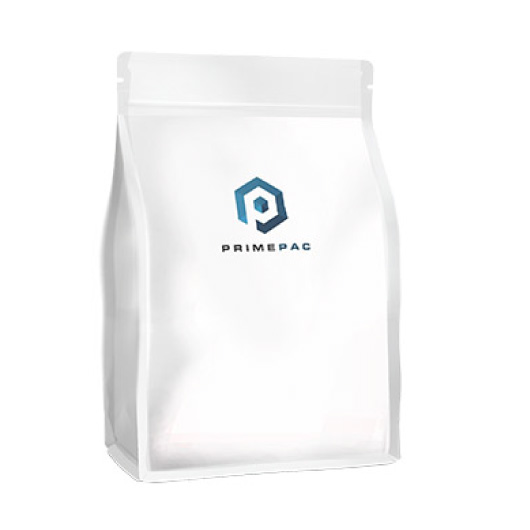

Is white cardboard environmentally friendly?
Cardboard like Kraft packaging is generally 100% biodegradable. There are however instances of cardboard not being completely environmentally friendly. The first instance is when a plastic or wax seal is layered on top which makes it harder to recycle. Another is like Kraft paper it becomes more environmentally friendly when the material is redistributed to the market via recycling.
What is coated paper?
Coated paper is paper which has a layer on top to stop liquids soaking in such as ink. This design choice can completely change the overall feel of the product.
Coated paper vs uncoated paper
Coated paper is what gives you that shiny, matte, glossy or semi-glossy feel to your design while uncoated paper is paper which allows liquids to soak in easier. You can think of it like the inside of a book is uncoated paper. while your milk carton is coated paper.

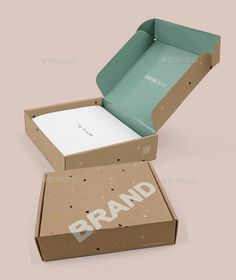
Is coated paper packaging recyclable?
Almost all paper nowadays is recyclable however coater paper packaging is generally more expensive to recycle especially if it is covered in plastic, aluminium, wax, gummed or anything similar. Thankfully in Australia that magazine style coated paper package is able to be recycled though if you’re looking for a more environmentally concious option either cardboard or Kraft paper is the better option where possible.
About Offset paper
Offset paper is simply uncoated paper. It is the method of getting paint/ink onto uncoated paper packaging. It is the thinnest and simplest packaging of all 4 paper packages described in this article. Its major advantages are the cost and a generally higher consistency of image quality. It is more used for products such as envelopes, catalogs, newspapers, and so on. It can however be used in some cases for food packaging. Offset paper is also able to be recycled and can fully decompose.

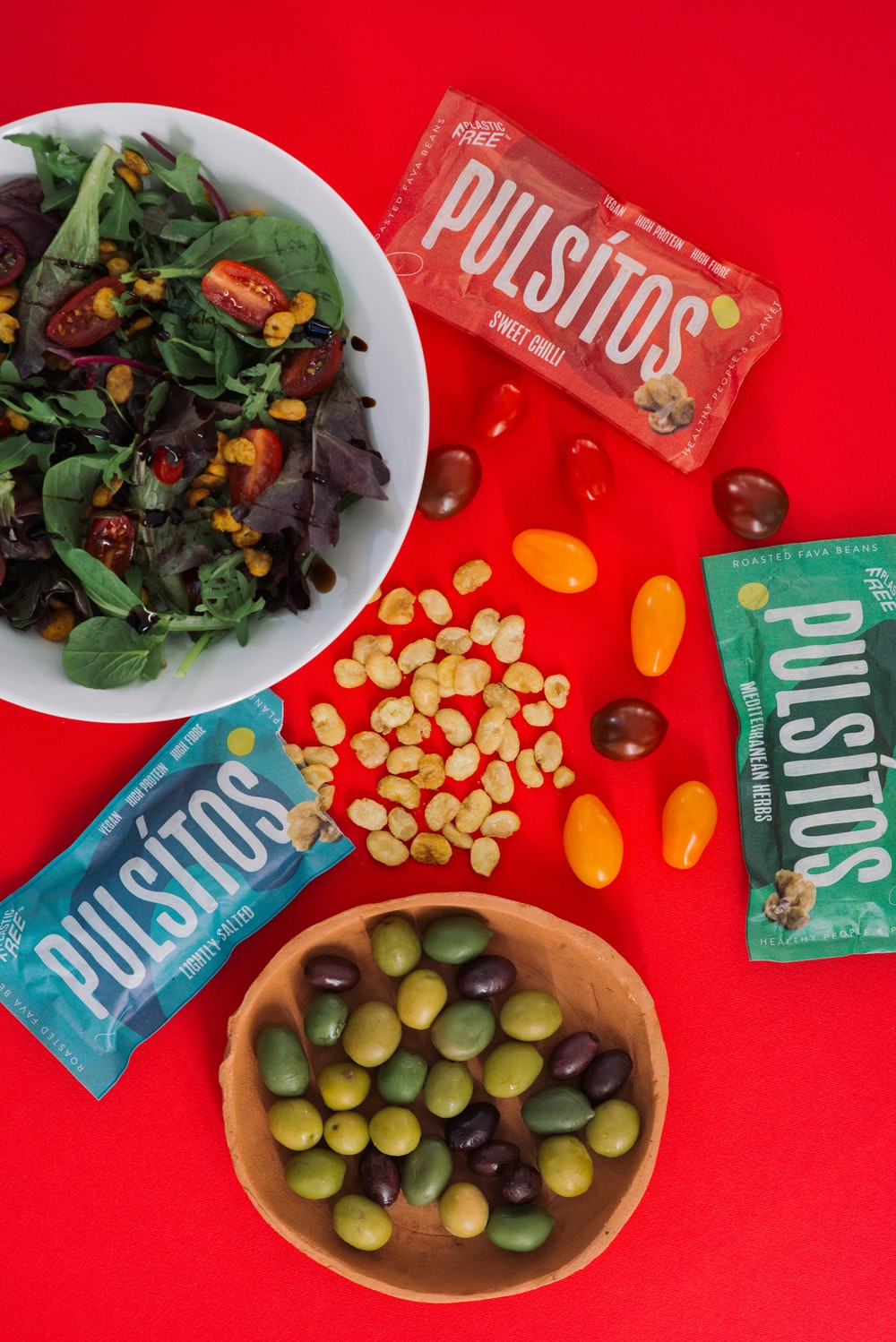
What type of paper packaging is allowed for food in Australia
Up above we have covered basic paper packaging, however, a large proportion of the packaging market goes to food. This industry has a lot of health and safety laws. In terms of what is allowed for food packaging in Australia we need to look at FSANZ (Food Standards Australia New Zealand) for guidance. Specifically 4 chapters:
- Introduction and standards that apply to all foods
- Food Standards
- Food safety standards
- Primary production standards.
Best PaperPackaging for Food
Paper bag
Paper bags are one of the various paper packaging options for food. Made from recyclable and biodegradable material, they’re an incredibly versatile and sustainable solution for food delivery.
Hitting the sweet spot between cardboard and polyethylene, paper bags maintain their integrity when subjected to hot or moist items – protecting your customer’s hands from heat, grease, or condensation.
Additionally, paper bags are foldable and stackable for ease of storage when not in use. For those looking for a safe and eco-friendly way to store & transport foodstuffs, paper bags are a great solution.
Multiwall paper sacks
Multiwall paper sacks are one of the various paper packaging solutions for food products.
Taking their name from the various layers of paper and other materials which form the sack, these bags provide an efficient and safe solution for packaging various types of foodstuffs.
Sealed with various techniques such as heat-sealing or adhesives, these sacks can maintain the integrity of the items stored inside while allowing them to easily move through automated processes during distribution and customer delivery.
Multiwall paper sacks offer excellent protection against dust, moisture, odors, and punctures; making them ideal for a variety of foods such as flour, coffee, oils, and dry pet food.
Paperboard packaging for food
Rigid boxes, one of various paper packaging for food, are highly versatile in their application and reliable packaging solutions.
This form of paper packaging offers great protection to various food products while also allowing the customer to view the product contained within.
Paperboard packaging provides an optimal balance between functionality and presentation.
They have become increasingly popular in recent years due to their versatility in various designs such as various sizes and multicolor graphic prints that make them appealing to customers.
Furthermore, the availability of various protective layers such as foil lamination and bi-sulfite ensures that the packaged food stays fresh for a longer period of time.
As a result, rigid boxes have been used for various packaged food products from snacks and deli items to quickly frozen goods.
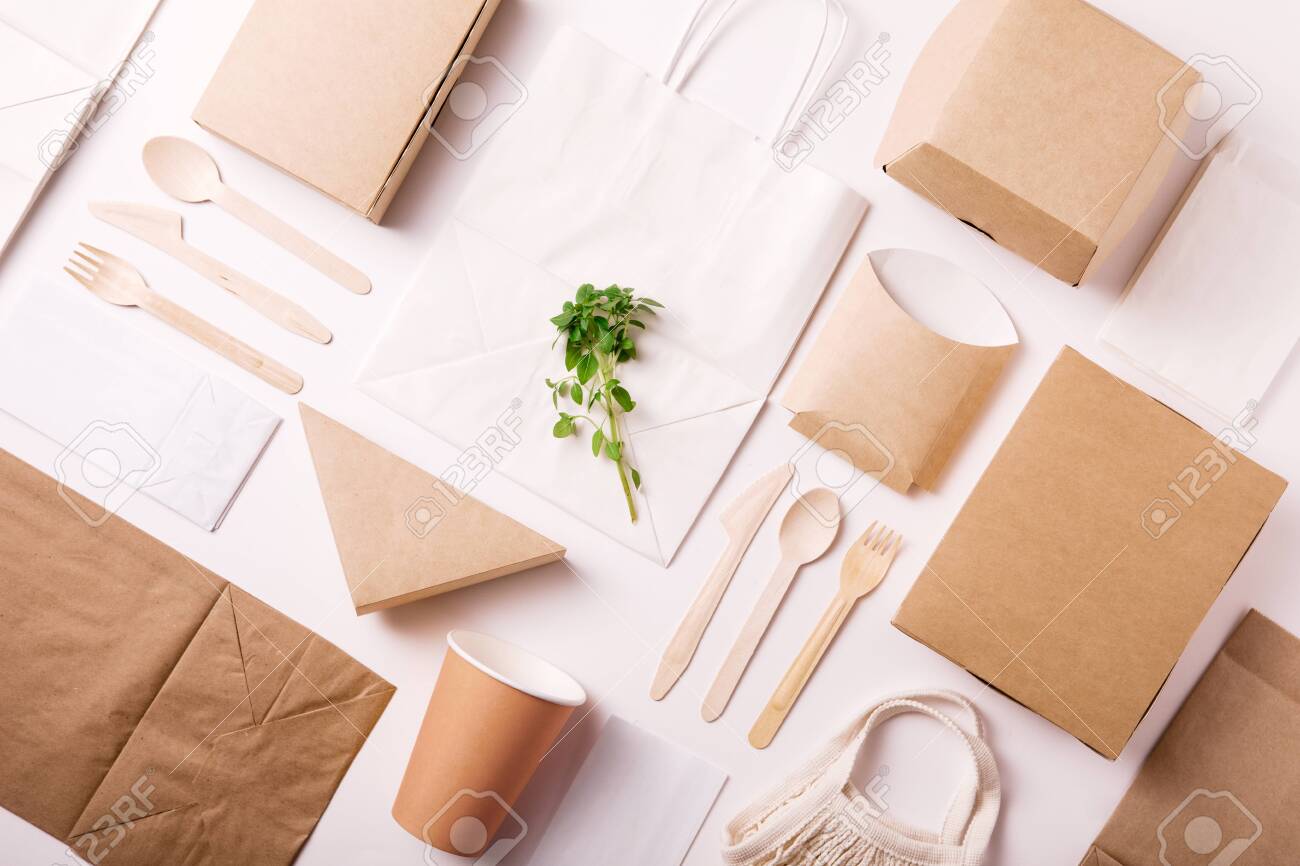
Paperboard packaging for liquid
Paperboard packaging for liquids is one of the various paper packaging solutions available on the market.
This type of packaging offers various advantages compared to traditional plastics, providing an effective and sustainable way of delivering liquid products safely to their destination.
Applications include dairy product trays, juice boxes, flavored drink cartons, and various other common consumer product packages used to store and transport liquid goods.
Paperboard also provides an excellent strength-to-weight ratio, which enables manufacturers to reduce their carbon footprint while still retaining long-term product durability.
1. The food packaging must be safe
2. The packaging must be capable of being swallowed or obstructing any alimentary or respiratory passage
3. It must not cause bodily harm, distress, or discomfort if taken into the mouth
a) This standard also included moisture absorbers, mold inhibitors, oxygen absorbers, promotional materials, and writing/graphics in/on the package
4.This standard is applied to all food that is imported intended to be sold
5. Packaging used in contact with food does not cause the food to exceed permitted levels of metals, non-metals, or natural toxicants
6. Chemicals used to make food packaging should not present known hazards to the consumer
7. Packaging must comply with the maximum limits in food for carious food packaging chemicals
8. Packaging will not impact the safety and suitability of the contacted food
9. Recycled and reused materials may be used for food packaging applications provided they are suitable and won’t contaminate food
10. Packaging must be used which is fit for its intended use and only use materials not likely to contaminate food

Australia and sustainable packaging
Australia is facing a major plastic pollution challenge. During 2018 and 2019, Australia generated a staggering 2.5 million tons of plastic waste.
Sadly, only 13% of this waste was recycled. Making matters worse, 27% of local governments do not provide proper recycling services, meaning their constituents cannot properly dispose of their plastic waste, and many contribute to Australia’s skyrocketing plastic pollution problem.
On Nov. 1, 2022, Australia’s most populous state is banning a range of single-use plastic, including straws, cutlery, and bowls.
Polystyrene foam food containers are also banned under the new rules in New South Wales, along with some face, body, and hair products that contain plastic microbeads.
Businesses that breach the regulations could face fines of tens of thousands of dollars.
Minister for Environment and Heritage James Griffin said in September that the ban was just the start of a “massive shift away from single-use plastic.”
He has predicted the ban would stop 2.7 billion plastic items from ending up as litter over the next 20 years.
The laws in New South Wales are part of a nationwide push to curb waste. State authorities in Queensland and Victoria will bring in similar bans next year.
So we have covered the most common types of paper packaging, and current laws inside Australia but what makes packaging sustainable?
For a complete document detailing everything your business needs to know about sustainable packaging we recommend reading this PDF:
Down below we have listed and briefly summarised the 10 points your business needs to be aware of when purchasing packaging.
What do businesses need to be aware of when designing and purchasing sustainable packaging?
There are a total of 10 major points your business needs to be aware of in order to create sustainable packaging. We have listed them down below.
1. Design for recovery
Australia has a goal of 100% of packaging to be reusable, compostable, or recyclable by 2025. What this means for you is whenever buying packaging you need to be aware of these principles and have the best possible plan for what will happen to your packaging after it served its initial purpose. Aka it needs to be A. reusable B. compostable, C. recyclable D. all/a mixture of A, B, and C.
2. Optimise material efficiency;
This one is pretty straightforward. If the package can be made smaller, thinner, lighter, less wasted packaging without compromising the effectiveness/safety of the package then where possible do so.
3. Design to reduce product waste;
This aspect is more to do with the overall creation of your packaging and can be defined in two ways.
A. How much waste is created, creating your product. Are you able to reduce the amount of waste from aspects such as poor quality, storage waste, purchasing of additional material, and so on?
B. How much of your product is wasted due to the end consumer. E.g is the food servings optimized per packet to reduce waste.
4. Eliminate hazardous materials
Simply put ensure the packaging you use avoids toxic/harmful substances to humans or other living organisms. Where they are unavoidable look at potential ways to reduce their impact/overall usage in the packaging. Your packaging needs to meet Australian and/or international standards such as the EU packaging and packaging waste directive. If the product needs to have some hazardous materials you will need to make sure it is labeled correctly to help with alternative collection/recycling programs.
Where possible use recycled materials. Consider adding a higher percentage of recycled content where possible without increasing the risk/function of the package to unacceptable levels. Overall add more recycled materials into the packaging supply chain where it is possible to do so.
6. Use renewable materials;
A renewable material is “Material that is composed of biomass from a living source and that can be continually replenished. Renewable materials include paper and cardboard from sustainably grown wood fiber, or a biopolymer from a sustainable source.” aka where possible use more renewable materials in your packaging.
7. Design to minimise litter
This requires you to know how and where your packaging will be used. Is it possible to reduce the overall amount of potential pieces of litter (think a plastic bottle has the container, lid, and wrapper)? It also requires adding advice on the correct disposal procedures.
8. Design for transport efficiency
This requires you to take into mind optimal transportation. This requires you to think about pallet, weight, how easy is the package design to recycle, the overall shape of the package design, transportation methods including loading and offloading.
9. Design for accessibility
Again a nice simple part of sustainable packaging. Your design needs to be easy for the consumer to open, legible labeling, and not compromise safety or quality. It needs to be designed with its demographics and target audience in mind.
10. Provide consumer information on sustainability.
Your packaging needs to have clear labeling/advice on how to dispose of it in the greenest way possible. In addition, if possible it needs to consider the following points:
A. Environmental claims
B. Litter prevention
C. The Australian recycling label if appropriate
D. Composting logo if appropriate
For more information on these points and how to follow them for your business check out the following PDF.

Manufacturers of Paper Packaging Australia
Gift Packaging & Accessories
With over half a decade in Australia’s gift packaging and accessories industry, Gift Packaging & Accessories is a testament to the nation’s diverse retail supply network.
For more than 50 years, this family-owned business has been providing bespoke solutions for major outlets like Spotlight, Officeworks, and Dior — all made from eco-friendly recycled paper.
As Australia continues to shift towards an ethical and sustainable retail culture, Gift Packaging & Accessories stands ready to lead the way with its expertise in recyclable paper packaging.
Opal
Opal is a major player in Australia & New Zealand’s packaging industry, with operations spanning 60 sites and offices in Europe, North America, and Asia.
Employing more than 4,000 people, the company is determined to provide sustainable solutions for its customers.
In particular, it focuses on the use of recyclable paper packaging developed by Australia-based Opal Australian Paper–one of the largest users of Port of Melbourne that produces products for more than 70 countries worldwide.
Myerton Packaging Pty Ltd
Myerton Packaging Pty Ltd is an Australia-based packaging solutions provider established in 2011.
With a commitment to delivering quality, personalized, and innovative paper packaging solutions, the company surpassed all odds in 2020 by maintaining a 98.8% on-time delivery rate despite the challenges posed by the pandemic.
Myerton also offers custom printed designs and sizes to meet businesses’ unique requirements and its paper packaging products are made from 100% recyclable materials, thus meeting Australia’s sustainability standards.
With such high service quality and commitment to innovation, Myerton Packaging provides the ideal solutions for businesses across Australia who are looking for reliable and cost-effective packaging options.
Superior Paper Australia
Superior Paper Australia has established a strong presence in the Asia Pacific region.
With manufacturing plants in Sydney and Brisbane and satellite distributions in Melbourne and Adelaide, our commitment is to provide businesses Australia-wide with Paper Packaging solutions that are hard-wearing, reliable and recyclable.
Our Brisbane Manufacturing plant keeps up with the latest technology and machinery, enabling us to maintain a consistently high quality of the product.
We also promote an environment policy of protecting the environment by using only responsibly sourced materials for all of our paper products and strive to reduce our footprint on the planet.
PaperPak
PaperPak is Australia’s leading provider of recyclable paper packaging.
As a family-owned Australian business, they are trusted by the biggest retail brands in Australia such as Country Road, Kmart, and Calvin Klein.
With their largest range, Australia made paper bags and cartons, as well as a 99.99% defect free guaranty, you can trust that all orders will be handled with excellent care
Brown Paper Packaging
Brown Paper Packaging is Australia’s leading wholesale supplier of product packaging solutions.
They provide an extensive range of quality, recyclable paper packaging products, from carry bags and paper bags to gift wrapping options including organza bags, tissue paper, and ribbons.
On top of that, customers can find postage boxes, mailing bags, and merchandise tags to suit any need.
Their commitment to eco-friendly packaging alongside innovative ideas for unique designs makes them a complete one-stop shop for all your packaging needs.
With competitive prices and fast delivery Australia-wide, their dedication to customer service excellence is second to none.
Work with the right packaging company
With all this information you can see it is really important to work with reliable packaging companies to make sure your paper packaging not only meets the Australian standards but is eco-friendly, and sustainable. Primepac works with small to medium-large businesses to ensure their packaging is of a high quality design while ticking all the right boxes.
About Primepac
At PrimePac, we bring together design experts and brand innovators to create fresh ideas, customized packages, and fully efficient processes, at the same time ,we design creative packaging solutions that cater to a diverse global audience with the in-house knowledge and network of experienced professionals to meet the demands of every type of client.
However, from our dedicated sales team and warehouse staff in Australia to the experts at our production facilities in China, all of our employees are guided by four core values at the heart of our business: integrity, innovation, passion, and engagement.
Conclusion
In this article we have discussed the 4 major paper packages, what are the Australian standards and how to ensure your packaging meets them. We have also covered the bases of what is sustainable packaging and what you can do as a business to help our environment. If you are looking for where to source your packaging in China then check out our top 10 factories, or contact us today to see if Primepac can help your business needs.



